https://tinyurl.com/yyktjqpp
-- pasār, pahārā, bazaar of Mohenjo-daro identified. Each circular artisan platform in Harappa is kole.l 'smithy, forge, temple'; Lajjā Gaurī (1st cent., Padri) signifies tāmarasa kóśa Indus Script hypertext, metalwork treasure
--Series of circular platforms in Harappa are a Sindhu-Sarasvati Civilization bazaar, Lajjā Gaurī signifies Aditi, Devatā Ātmā (RV X.125), Indus Script hieroglyphs, metalworker's professional calling card
-- Archaeological evidence for the earliest bazaar of the world and veneration of Lajja Gaurī in Sindhu-Sarasvati Civilization
-- Why does Lajjā Gaurī on a slate plaque found in Padri carry a lotus bud a a hieroglyph on her left hand?
-- Why is Lajjā Gaurī divinity shown as a headless woman, but with the lotus above the neck as a hieroglyph, vulva exposed?
-- Each of the circular workers' platforms may have held in the centre, a thã̄bh kole.l 'pillar temple' rebus signifier: tāmbā kole.l 'copper smithy.forge'.
-- Archaeological evidence for the earliest bazaar of the world is in a Meluhha word pahārāʻgoldsmith's workshopʼ, thanks to decipherment of Indus Script inscriptions on 1) Mohenjo-daro storage pot & 2) Susa pot with cargo received from Meluhha
-- Archaeological evidence of a Mohenjo-daro brick room with conical pits lined with wedge-shaped bricks
-- Mohenjo-daro brick room with conical pits is pasār, pahārā 'metals bazaar or market' of Sindhu-Sarasvati Civilization
-- Like copper anthropomorphs which are lapidary-smith-merchant professional calling cards, Lajjā Gaurī plaques are professional calling cards of metalworkers proclaiming their metallurgical competence related to working in gold and copper.
-- Evidence provided by Đinh Hồng Hải (2016) on the Lajjā Gaurī tradition of Cham people in Vietnam is appended (with a Google translation from his Vietnamese monograph)
This monograph provides Archaeological evidence for the earliest bazaar of the world in Mohenjo-daro; and explains why Lajjā Gaurī is venerated in Padri pahārā ʻgoldsmith's, coppersmith's workshop'. The name of the divinity is a signifier of the colour of copper/gold: गौर mf(/ई)n. (in comp. or ifc. g. कडारा*दि) white , yellowish , reddish , pale red RV. x , 100 , 2 TS. v &c (Monier-Williams) लाजाहोम lājāhōma m S A burnt-offering at weddings of लाजा or लाह्या to secure the bridegroom and bride from forsaking each other.(Marathi)
I submit that the Lajjā Gaurī plaque found in Padri is a professional calling card with a Meluhha message in Indus Script Cipher, of a metalsmith smelter because the orthography on the plaque signifies Indus Script hieroglyphs:
Lotus bud: tāmarasa kóśa 'lotus bud' rebus: तामरस कोश 'gold/copper treasure'.
कोश 'the vulva' rebus: कोश--वत् possessing treasures , rich , wealthy. Sun's rays: अंशुः read rebus ancu ‘iron’ (Tocharian);
अंशुः is a synonym of Soma. E.g., खर-अंशुः ‘sun’s rays’ rebus: khār ancu ‘blacksmith, iron’. On some Lajjā Gaurī sculptural representations (e.g. Amaravati sculptures), the head of the squatting divinity is replaced by a lotus flower. I submit that this is a semantic determinative of the rebus reading: tāmarasa 'lotus' rebus: tāmarasa 'gold, copper'. Lajjā Gaurī , the mother is Aditi, the ātmā devatā venerated in Devi Sūktam RV X.125. See:
A prayer to wealth givers, Rāṣṭrī Sūktamअहम् राष्ट्री संगमनी वसूनाम् I am the mover of nation's wealth: देवता आत्मा, ऋषिका वाक् आम्भृणी (RV 10.125) https://tinyurl.com/ybt5sas4
A monograph reconstructs two ancient Meluhha (Indian sprachbund, 'language union') expressions which signify wealth-accounting for a nation by merchant-/artisan-guilds of Sarasvati Civilization. Cognates of the word khār has two meanings: 1. blacksmith; 2. खर-अंशुः the sun. अंशुः is a synonym of Soma and is cognate with ancu.'iron' (Tocharian). The processing of Soma or अंशुः is the central, sacred metaphor of R̥gveda.
Etymology of Khar from Sanskrit "Svar", meaning Sun, which changes in northwestern Indian languages to "Khar". खर khara खर a. [opp. मृदु, श्लक्ष्ण, द्रव) 1
Hard, rough, solid-Comp. खर-अंशुः, -करः, -रश्मिः the sun (Apte). खर--मयूख = खरा* ंशु "hot-rayed" , the sun (धूर्तनर्तक)(Monier-Williams)
![Image result for gold pectoral bharatkalyan97]()
![Image result for gold pectoral bharatkalyan97]() m1656 Pectoral. Gold Pendant. Harappa. National Museum, New Delhi
m1656 Pectoral. Gold Pendant. Harappa. National Museum, New Delhi
Sun's rays arka 'sun, rays of sun' rebus: arka 'copper, gold' eraka 'moltencast'.
खार (= खार् (L.V. 96, K.Pr. 47, Śiv. 827) । द्वेषः m. (for 1, see khār 1), a thorn, prickle, spine (K.Pr. 47; Śiv. 827, 1530)(Kashmiri) A خار ḵẖār, s.m. (2nd) A thorn, a thistle, a bramble. 2. A spike, a splinter. Pl. خارونه ḵẖārūnah. خار دار ḵẖār-dār, adj. Thorny, barbed, troublesome. خار ګیري ḵẖār-gīrī, s.f. (3rd) A fence, a temporary defence made of thorns. Pl. ئِي aʿī. See اغزن (Pashto)
Hieroglyph 2: खार khāra 'squirrel'; खारी khārī f (Usually खार) A squirrel. (Kashmiri)
Rebus: khār 1 खार् । लोहकारः m. (sg. abl. khāra 1 खार ; the pl. dat. of this word is khāran 1 खारन् , which is to be distinguished from khāran 2, q.v., s.v.), a blacksmith, an iron worker (cf. bandūka-khār, p. 111b, l. 46; K.Pr. 46; H. xi, 17); a farrier (El.). This word is often a part of a name, and in such case comes at the end (W. 118) as in Wahab khār, Wahab the smith (H. ii, 12; vi, 17). khāra-basta खार-बस्त । चर्मप्रसेविका f. the skin bellows of a blacksmith. -büṭhü -ब॑ठू॒ । लोहकारभित्तिः f. the wall of a blacksmith's furnace or hearth. -bāy -बाय् । लोहकारपत्नी f. a blacksmith's wife (Gr.Gr. 34). -dŏkuru -द्वकुरु॒ । लोहकारायोघनः m. a blacksmith's hammer, a sledge-hammer. -gȧji -ग॑जि॒ or -güjü -ग॑जू॒ । लोहकारचुल्लिः f. a blacksmith's furnace or hearth. -hāl -हाल् । लोहकारकन्दुः f. (sg. dat. -höjü-हा॑जू॒ ), a blacksmith's smelting furnace; cf. hāl 5. -kūrü -कूरू॒ । लोहकारकन्या f. a blacksmith's daughter. -koṭu -क॑टु॒ । लोहकारपुत्रः m. the son of a blacksmith, esp. a skilful son, who can work at the same profession. -küṭü -क॑टू॒ । लोहकारकन्या f. a blacksmith's daughter, esp. one who has the virtues and qualities properly belonging to her father's profession or caste. -më̆ʦü 1 -म्य॑च़ू॒ । लोहकारमृत्तिका f. (for 2, see khāra 3), 'blacksmith's earth,' i.e. iron-ore. -nĕcyuwu-न्यचिवु॒ । लोहकारात्मजः m. a blacksmith's son. -nay -नय् । लोहकारनालिका f. (for khāranay 2, see khārun), the trough into which the blacksmith allows melted iron to flow after smelting. -ʦañĕ -च़्ञ । लोहकारशान्ताङ्गाराः f.pl. charcoal used by blacksmiths in their furnaces. -wān वान् । लोहकारापणः m. a blacksmith's shop, a forge, smithy (K.Pr. 30). -waṭh -वठ् । आघाताधारशिला m. (sg. dat. -waṭas -वटि ), the large stone used by a blacksmith as an anvil. khār 2 खार् or khwār ख्वार् । दरिद्रीभूतः adj. c.g. poor, distressed, become poor, reduced to poverty; deserted, abandoned, friendless, wretched (Śiv. 421, Rām. 1697); abject, vile, base, contemptible (cf. khārakhas) (K.Pr. 247); ruined, desolate (El.); ruined, destroyed, spoiled (K.Pr. 248, Rām. 1380-1); distraught, full of anxiety or sorrow (Rām. 1623). --gōmotu --गोम॑तु॒ । दारिद्र्यमापन्नः perf. part. (f. -gömüʦü -गा॑म॑च़ू॒ ), become poor; become contemptible, despised, despicable (YZ. 486); become distressed, become full of anxiety or sorrow, distraught (Rām. 1463, 1665); etc., as ab. --karun --करुन् । दुःखितीकरणम् m.inf. to reduce a person to distress or poverty (e.g. by unkindness, by robbing him, or by seducing him to profligacy) (Rām. 1386, 1481); to make despised, bring to contempt (YZ. 37, 568); to ruin, destroy (Rām. 1380). --ta kharāba --त खराब । अतिदुर्गतः adj. c.g. reduced to the greatest straits, greatly distressed (by loss of livelihood); reduced to distress (by disease), etc. (Kashmiri)
svar स्वर् ind. 1 Heaven, paradise; as in स्वर्लोक, स्वर्वेश्या, स्वर्भानुः, &c.; त्वं कर्मणां मङ्गलमङ्गलानां कर्तुः स्म लोकं तनुषे स्वः परं वा Bhāg.4.6.45. -2 The heaven of Indra and the temporary abode of the virtuous after death. -3 The sky, ether. -4 The space above the sun or between the sun and the polar star. -5 The third of the three Vyāhṛitis, pronounced by every Brāhmaṇa in his daily prayers; see व्याहृति. -6 Radiance, splendour. -7 Water. ind. (used in nom., acc., gen., or loc. case); स्वलंकृतैर्भ- वनवरैविभूषितां पुरंदरः स्वरिव यथामरावतीम् Rām.7.11.5; साधोरपि स्वः खलु गामिताधो गमी स तु स्वर्गमितः प्रयाणे N.6. 99 (herein abl. case, स्वर् = स्वर्गात्). -Comp. -अतिक्रमः reaching Vaikuṇṭha (beyond heaven). -आपगा, -गङ्गा 1 the celestial Ganges. -2 the galaxy or milky way. -इङ्गणः a strong wind. -गत a. dead. -गतिः f., -गमनम् 1 going to heaven, future felicity. -2 death. -गिरिः Sumeru. -जित् m. a kind of sacrifice; यजेत वाश्वमेधेन स्वर्जिता गोसवेन वा Ms.11.74. -तरुः (स्वस्तरुः) a tree of paradise. -दृश् m. 1 an epithet of Indra. -2 of Agni. -3 of Soma. -धुनी, -नदी (forming स्वर्णदी) the celestial Ganges; सद्यः पुनन्त्युपस्पृष्टाः स्वर्धुन्यापोनुसेवया Bhāg.1.1.15. -भानवः a kind of precious stone. -भानुः Name of Rāhu; तुल्ये$पराधे स्वर्भानुर्भानुमन्तं चिरेण यत् । हिमांशुमाशु ग्रसते तन्म्रदिम्नः स्फुटं फलम् Ś.i.2.49. ˚सूदनः the sun. -मणिः the sun. -मध्यम् the central point of the sky, the zenith. -यात a. dead. -यातृ a. dying. -यानम् dying, death. -योषित a celestial woman, apsaras. -लोकः the celestial world, heaven. -वधूः f. a celestial damsel, an apsaras. -वापी the Ganges. -वारवामभ्रू (see -वधू above); स्वर्वारवामभ्रुवः नृत्यं चक्रुः Cholachampū p.22, Verse 51. -वेश्या 'a courtezan of heaven', acelestial nymph, an apsaras. -वैद्य m. du. an epithet of the two Aśvins. -षा 1 an epithet of Soma. -2 of the thunderbolt of Indra. -सिन्धु = स्वर्गङ्गा q. v. (Apte)
sanskritdictionary.com/svar/35038/4
खरडा kharaḍā m (खरडणें) Scrapings (as from a culinary utensil). 2 Bruised or coarsely broken peppercorns &c.: a mass of bruised मेथ्या &c. 3 also खरडें n A scrawl; a memorandum-scrap; a foul, blotted, interlined piece of writing. 4 also खरडें n A rude sketch; a rough draught; a foul copy; a waste-book; a day-book; a note-book. (Marathi) See: karuma sharpness of sword (Tamil)(DEDR 1265) karumā, 'blaksmith' (Tamil);karmāra 'blacksmith' (R̥gveda)
![]()
![]() Source: Dr. Berenice Bellina of the Centre National de la Recherche Scientifique, France, excavations conducted by the Thai Fine Arts at Phu Khao Thong in Thailand in 2007.
Source: Dr. Berenice Bellina of the Centre National de la Recherche Scientifique, France, excavations conducted by the Thai Fine Arts at Phu Khao Thong in Thailand in 2007.
![]() The Phu Khao Thong potsherd inscription has hieroglyphs which read rebus: karaṇḍa'backbone' rebus: karaḍa 'hard alloy' PLUS mũhe 'ingot' (Santali) mũhã̄ = the quantity of iron produced at one time in a native smelting furnace of the Kolhes; iron produced by the Kolhes and formed like a four-cornered piece a little pointed at each end. Thus the inscription reads: karaḍa mũhe 'hard metal alloy ingot'.
The Phu Khao Thong potsherd inscription has hieroglyphs which read rebus: karaṇḍa'backbone' rebus: karaḍa 'hard alloy' PLUS mũhe 'ingot' (Santali) mũhã̄ = the quantity of iron produced at one time in a native smelting furnace of the Kolhes; iron produced by the Kolhes and formed like a four-cornered piece a little pointed at each end. Thus the inscription reads: karaḍa mũhe 'hard metal alloy ingot'.
Onager shown on Standard of Ur (2600 BCE) is also shown on Indus Script inscriptions. An example is the seal from Mohenjo-daro (m290)(ca. 2500 BCE) which is a documentation of metalwork wealth by smelters' guild.![bull-head-lyre-panel]()
Thus, the symbolic ensemble is a documentation of metalwork in Indus Script Cipher.![Image result for mohenjodaro seal onager]() m290 Mohenjo-daro seal. Decipherment: kola 'tiger' Rebus; kolle 'blacksmith' kol 'working in iron' kole.l 'smithy, temple' kolimi 'smithy, forge' PLUS pattar 'trough' Rebus: pattar 'guild of goldsmiths'. panja 'feline paw' rebus: panja 'kiln, furnace'ṭāṅka ʻleg, thighʼ (Oriya) rebus: ṭaṅka 'mint'
m290 Mohenjo-daro seal. Decipherment: kola 'tiger' Rebus; kolle 'blacksmith' kol 'working in iron' kole.l 'smithy, temple' kolimi 'smithy, forge' PLUS pattar 'trough' Rebus: pattar 'guild of goldsmiths'. panja 'feline paw' rebus: panja 'kiln, furnace'ṭāṅka ʻleg, thighʼ (Oriya) rebus: ṭaṅka 'mint'
![]()
![]() baTa 'rimless pot' rebus: baṭa 'iron' bhaṭa 'furnace' PLUS dula 'two' rebus: dul 'cast metal' Thus, cast metal furnace (Frequency of occurrence: 74)
baTa 'rimless pot' rebus: baṭa 'iron' bhaṭa 'furnace' PLUS dula 'two' rebus: dul 'cast metal' Thus, cast metal furnace (Frequency of occurrence: 74)
![]()
![]() baṭa 'rimless pot' rebus: baṭa 'iron' bhaṭa 'furnace' PLUS kolmo 'three' rebus: kolimi 'smithy'. Thus smithy furnace (Frequency of occurrence: 111)
baṭa 'rimless pot' rebus: baṭa 'iron' bhaṭa 'furnace' PLUS kolmo 'three' rebus: kolimi 'smithy'. Thus smithy furnace (Frequency of occurrence: 111)
![]()
![]() baṭa 'rimless pot' rebus: baṭa 'iron' bhaṭa 'furnace' PLUS gaNDa 'four' rebus: khaNDa 'implements'. Thus implements furnace (Frequency of occurrence: 50)
baṭa 'rimless pot' rebus: baṭa 'iron' bhaṭa 'furnace' PLUS gaNDa 'four' rebus: khaNDa 'implements'. Thus implements furnace (Frequency of occurrence: 50)
![]()
![]() Stone seal. h179. National Museum, India. Carved seal. Scan 27418 Tongues of flame decorate the flaming pillar, further signified by two 'star' hieroglyphs on either side of the bottom of the flaming arch.
Stone seal. h179. National Museum, India. Carved seal. Scan 27418 Tongues of flame decorate the flaming pillar, further signified by two 'star' hieroglyphs on either side of the bottom of the flaming arch.
![]()
ü f. ʻ level surface by kitchen fireplace on which vessels are put when taken off fire ʼ; S. baṭhu m. ʻ large pot in which grain is parched, large cooking fire ʼ, baṭhī f. ʻ distilling furnace ʼ; L. bhaṭṭh m. ʻ grain -- parcher's oven ʼ, bhaṭṭhī f. ʻ kiln, distillery ʼ, awāṇ. bhaṭh; P. bhaṭṭhm., °ṭhī f. ʻ furnace ʼ, bhaṭṭhā m. ʻ kiln ʼ; N. bhāṭi ʻ oven or vessel in which clothes are steamed for washing ʼ; A. bhaṭā ʻ brick -- or lime -- kiln ʼ; B. bhāṭi ʻ kiln ʼ; Or. bhāṭi ʻ brick -- kiln, distilling pot ʼ; Mth. bhaṭhī, bhaṭṭī ʻ brick -- kiln, furnace, still ʼ; Aw.lakh. bhāṭhā ʻ kiln ʼ; H. bhaṭṭhā m. ʻ kiln ʼ, bhaṭ f. ʻ kiln, oven, fireplace ʼ; M. bhaṭṭā m. ʻ pot of fire ʼ, bhaṭṭī f. ʻ forge ʼ. -- X bhástrā -- q.v.bhrāṣṭra -- ; *bhraṣṭrapūra -- , *bhraṣṭrāgāra -- .Addenda: bhráṣṭra -- : S.kcch. bhaṭṭhī keṇī ʻ distil (spirits) ʼ.*bhraṣṭrāgāra ʻ grain parching house ʼ. [bhráṣṭra -- , agāra -- ]P. bhaṭhiār, °ālā m. ʻ grainparcher's shop ʼ.(CDIAL 9656, 9658)![]()
![]()
![Image result for raised script metal bharatkalyan97]() Copper tablet (H2000-4498/9889-01) with raised script found in Trench 43 of Harappa. The raised script has apparently been achieved during casting in a mould. Over 8 such tablets have been found in Harappa from circular platforms (which are clearly meant for artisans working in metal smithy/forge work).
Copper tablet (H2000-4498/9889-01) with raised script found in Trench 43 of Harappa. The raised script has apparently been achieved during casting in a mould. Over 8 such tablets have been found in Harappa from circular platforms (which are clearly meant for artisans working in metal smithy/forge work).
![Circular, light grey steatite stamp-seal; hole pierced through back; Dilmun type; face shows engraved design of two men, each dressed in a long skirt, walking left and clutching a vase between them; left figure grasps a leaping gazelle or bull by the neck]()
-- pasār, pahārā, bazaar of Mohenjo-daro identified. Each circular artisan platform in Harappa is kole.l 'smithy, forge, temple'; Lajjā Gaurī (1st cent., Padri) signifies tāmarasa kóśa Indus Script hypertext, metalwork treasure
--Series of circular platforms in Harappa are a Sindhu-Sarasvati Civilization bazaar, Lajjā Gaurī signifies Aditi, Devatā Ātmā (RV X.125), Indus Script hieroglyphs, metalworker's professional calling card
-- Archaeological evidence for the earliest bazaar of the world and veneration of Lajja Gaurī in Sindhu-Sarasvati Civilization
-- Why does Lajjā Gaurī on a slate plaque found in Padri carry a lotus bud a a hieroglyph on her left hand?
-- Why is Lajjā Gaurī divinity shown as a headless woman, but with the lotus above the neck as a hieroglyph, vulva exposed?
-- Each of the circular workers' platforms may have held in the centre, a thã̄bh kole.l 'pillar temple' rebus signifier: tāmbā kole.l 'copper smithy.forge'.
-- Archaeological evidence for the earliest bazaar of the world is in a Meluhha word pahārāʻgoldsmith's workshopʼ, thanks to decipherment of Indus Script inscriptions on 1) Mohenjo-daro storage pot & 2) Susa pot with cargo received from Meluhha
-- Archaeological evidence of a Mohenjo-daro brick room with conical pits lined with wedge-shaped bricks
-- Mohenjo-daro brick room with conical pits is pasār, pahārā 'metals bazaar or market' of Sindhu-Sarasvati Civilization
-- Like copper anthropomorphs which are lapidary-smith-merchant professional calling cards, Lajjā Gaurī plaques are professional calling cards of metalworkers proclaiming their metallurgical competence related to working in gold and copper.
-- Evidence provided by Đinh Hồng Hải (2016) on the Lajjā Gaurī tradition of Cham people in Vietnam is appended (with a Google translation from his Vietnamese monograph)
This monograph provides Archaeological evidence for the earliest bazaar of the world in Mohenjo-daro; and explains why Lajjā Gaurī is venerated in Padri pahārā ʻgoldsmith's, coppersmith's workshop'. The name of the divinity is a signifier of the colour of copper/gold: गौर mf(/ई)n. (in comp. or ifc. g. कडारा*दि) white , yellowish , reddish , pale red RV. x , 100 , 2 TS. v &c (Monier-Williams) लाजाहोम lājāhōma m S A burnt-offering at weddings of लाजा or लाह्या to secure the bridegroom and bride from forsaking each other.(Marathi)
I submit that the Lajjā Gaurī plaque found in Padri is a professional calling card with a Meluhha message in Indus Script Cipher, of a metalsmith smelter because the orthography on the plaque signifies Indus Script hieroglyphs:
Lotus bud: tāmarasa kóśa 'lotus bud' rebus: तामरस कोश 'gold/copper treasure'.
कोश 'the vulva' rebus: कोश--वत् possessing treasures , rich , wealthy. Sun's rays: अंशुः read rebus ancu ‘iron’ (Tocharian);
अंशुः is a synonym of Soma. E.g., खर-अंशुः ‘sun’s rays’ rebus: khār ancu ‘blacksmith, iron’. On some Lajjā Gaurī sculptural representations (e.g. Amaravati sculptures), the head of the squatting divinity is replaced by a lotus flower. I submit that this is a semantic determinative of the rebus reading: tāmarasa 'lotus' rebus: tāmarasa 'gold, copper'. Lajjā Gaurī , the mother is Aditi, the ātmā devatā venerated in Devi Sūktam RV X.125. See:
A prayer to wealth givers, Rāṣṭrī Sūktamअहम् राष्ट्री संगमनी वसूनाम् I am the mover of nation's wealth: देवता आत्मा, ऋषिका वाक् आम्भृणी (RV 10.125) https://tinyurl.com/ybt5sas4
If the Padri find of Lajjā Gaurī plaque in Padri in a goldsmith's workshop signifies the artisanal professional calling card as a metalsmith smelter, it is likely that the circular workers' platforms found in a series along the Harappa Main Street also signified shops of guilds of metalsmiths and smelters. Each kole.l 'smithy/forge' is rebus: kole.l 'temple' (Kota language).
Why does Lajjā Gaurī hold a lotus bud on her hand on Padri slate plaque?
After Fig. 4. Squarish plaque of slate with a ‘Lajjā Gaurī’ engraved on it Shinde, Vasant, 1994, The earliest temple of Lajjā Gaurī? The recent evidence from Padri in Gujarat, in: East and West, Vol. 44, No. 2/4, December, 1994. The bottom portion of the plaque is signified by lotus petals with 'rays or sunbeams' to signify arka-amśu
अंशुः aṃśuḥ अंशुः [अंश्-मृग˚ कु.] 1 A ray, beam of light; चण्ड˚, घर्मं˚ hot-rayed the sun; सूर्यांशुभिर्भिन्नमिवारविन्दम् Ku.1.32; Iustre, brilliance चण्डांशुकिरणाभाश्च हाराः Rām.5.9.48; Śi.1.9. रत्न˚, नख˚ &c. -2 A point or end. -3 A small or minute particle. - 4 End of a thread. -5 A filament, especially of the Soma plant (Ved.) -6 Garment; decoration. -7 N. of a sage or of a prince. -8 Speed, velocity (वेग). -9 Fine thread -Comp. -उदकम् dew-water. -जालम् a collection of rays, a blaze or halo of light. -धरः -पतिः -भृत्-बाणः -भर्तृ-स्वामिन् the sun, (bearer or lord of rays). -पट्टम् a kind of silken cloth (अंशुना सूक्ष्मसूत्रेणयुक्तं पट्टम्); सश्रीफलैरंशुपट्टम् Y. 1.186; श्रीफलैरंशुपट्टानां Ms.5.12. -माला a garland of light, halo. -मालिन् m. [अंशवो मालेव, ततः अस्त्यर्थे इनि] 1 the sun (wreathed with, surrounded by, rays). -2 the number twelve. -हस्तः [अंशुः हस्त इव यस्य] the sun (who draws up water from the earth by means of his 1 hands in the form of rays). अंशुमत् aṃśumat अंशुमत् a. [अंशु-अस्त्यर्थे मतुप्] 1 Luminous, radiant; ज्योतिषां रविरंशुमान् Bg.1.21. -2 Pointed. -3 Fibrous, abounding in filaments (Ved.) -m.(˚मान्) 1 The sun; वालखिल्यैरिवांशुमान् R.15.1; अंशुमानिव तन्वभ्रपटलच्छन्नविग्रहः Ki.11.6; जलाधारेष्विवांशुमान् Y.3.144; rarely the moon also; ततः स मध्यंगतमंशुमन्तं Rām.5.5.1. -2 N. of the grandson of Sagara, son of Asamañjasa and father of Dilīpa. -3 N. of a mountain; ˚मत्फला N. of a plant, कदली Musa sapientum or Paradisiaca. -ती 1 N. of a plant सालपर्णी (Mar. डवला, सालवण) Desmodium Gangeticum. -2 N. of the river Yamunā. )(Apte)
I submit that the lotus bud is a hieroglyph. It is tāmarasa कोश kóśa 'lotus bud'. This expression is read rebus: ताम--रस 'gold'; copper (cf. ताम्र) PLUS कोश kósa 'treasure'. Thus, the lotus bud on Lajjā Gaurī's hand signifies tāmarasa kóśa ताम--रस कोश 'gold/copper treasure'.
ताम--रस n. a day-lotus MBh. iii , 11580 Hariv. 5771 R. iii Ragh. (ifc. f(आ). , ix , 36) &c; Rebus: ताम--रस 'gold'; copper (cf. ताम्र); ताम्र mf(आ)n. ( √ तम् Un2. ) of a coppery red colour VS. xvi ( Naigh. iii , 7) MBh. &c (ताम्रा त्वच् , the 4th of the 7 membranes with which an embryo is covered Sus3r. iii , 4 , 2); mf(ई)n. made of copper R. iii , 21 , 17 Sus3r. Mn. vi , 53÷54 BhavP.; n. copper Kaus3. Mn. &c;n. a coppery receptacle MBh. ii , 61 , 29
Hieroglyph: कोश kósa 'bud, calix (esp. of the lotus)' Rebus: कोश kósa 'store-room; treasury, treasure; box, chest, sheath, case; abode; -griha, n. treasury; -gâta, n. treasure, wealth; -danda, m. du. treasury and army; -pîthin, a. draining or having drained any one's treasury; -petaka, m. n. casket; -rakshin, m. guardian of the treasury. (Arthur Anthony Macdonell, 1929, A Practical Sanskrit Dictionary, OUP, London)
Hieroglyph: कोश 'the vulva' (Monier-Williams) Rebus: (in वेदा*न्त phil.) a term for the three sheaths or succession of cases which make up the various frames of the body enveloping the soul (these are , 1. the आनन्द-मय क्° or " sheath of pleasure " , forming the कारण-शरीर or " causal frame " ; 2. the विज्ञान-मय or बुद्धि-म्° or मनो-म्° or प्रा*ण-म्° क्° , " the sheath of intellect or will or life " , forming the सूक्ष्म-शरीर or " subtile frame " ; 3. the अन्न-म्° क्° , " the sheath of nourishment " , forming the स्थूल-शरीर or " gross frame ") (वेदान्तसार) Hieroglyph: कोशी f. the beard of corn Rebus: f. an iron ploughshare(Monier-Williams) कोशा* धी* श ,
कोशा* धिपति m. a superintendent of the treasury , treasurer; Name of कुबेर; कोश--वत् possessing treasures , rich , wealthy MBh. Katha1s. lxi , 215 (Monier-Williams)
Hieroglyph: कोश 'the eye ball' (रामायण, iii , 79 , 28) Rebus: कोश an oath (
(राजतरंगिणी. v , 325; a cup used in the ratification of a treaty of peace (°शं- √पा , to drink from that cup)(राजतरंगिणी. vii , 8 ; 75 ; 460 and 493 ; viii , 283)
Hieroglyph: कोश f. " a bud " » अर्क- kósa; a bud , flower-cup , seed-vessel (cf. बीज-) (रामायण, रघुवंश,भागवत-पुराण, धूर्तसमागम); Rebus: कोश a cask , vessel for holding liquids , (metaphorically) cloud RV. AV. Sus3r.; a pail , bucket RV.; a drinking-vessel , cup; a box , cupboard , drawer , trunk RV. vi , 47 , 23 AV. xix , 72 , 1 S3Br.; a case , covering , cover AV. ChUp. Mun2d2Up. TUp. Pa1rGr2.BhP.;
store-room , store , provisions Mn. MBh. &c; a treasury , apartment where money or plate is kept , treasure , accumulated wealth (gold or silver , wrought or unwrought , as plate , jewellery , &c ) ib.; अर्क--कोशी f. a bud of the अर्क plant (शतपथ-ब्राह्मण, X) (Monier-Williams)
Griffith: RV VI.47.23 Ten horses and ten treasure chests-, ten garments as an added gift,These and ten lumps of gold have I received from Divodasas' hand.
Wilson: 6.047.23 I have received ten horses, ten purses, clothes, and ample food and ten lumps of gold from Divoda_sa.
कोशः, -शम् (षः, -षम्) [कुश् (ष्) आधारादौ घञ् कर्तरि अच् वा Tv.] 1 A vessel for holding liquids, a pail. -2 A bucket, cup. -3 A vessel in general. -4 A box, cupboard, drawer, trunk; Rv.6.47.23; स एष कोशो वसुधानस्तस्मिन्विश्वमिदं श्रितम् Ch. Up.3.15.1. -5 A sheath, scabbard; Ki.17.45. -6 A case, cover, covering. -7 A store, mass; ईश्वरः सर्वभूतानां धर्मकोशस्य गुप्तये Ms.1.99. -8 A store-room. -9 A treasury, an apartment where money is kept; Ms.8.419. -1 Treasure, money, wealth; निःशेषविश्राणितकोषजातम् R.5.1; (fig. also); कोशस्तपसः K.45; कोशपूर्वाः सर्वारम्भाः Kau. A.2.8. -11 Gold or silver wrought or unwrought. -12 A dictionary, lexicon, vocabulary. -13 A closed flower, bud; सुजातयोः पङ्कजकोशयोः श्रियम् R.3.8,13.29; इत्थं विचिन्तयति कोशगते द्विरेफे हा हन्त हन्त नलिनीं गज उज्जहार Subhāṣ. -14 The stone of a fruit. -15 A pod. -16 A nut-meg, nut-shell. -17 The cocoon of a silk-worm; निजलालासमायोगात्कोशं वा कोश- कारकः Y.3.147. -18 Vulva, the womb. -19 An egg. -2 A testicle or the scrotum. -21 The penis. -22 A ball, globe. -23(In Vedānta phil.) A term for the five (अन्न, प्राण, मनः, विज्ञान, आनन्द) vestures (sheaths or cases) which successively make the body, enshrining the soul. -24 (In law) A kind of ordeal; the defen- dant drinks thrice of the water after some idol has been washed in it; cf. Y.2.112. -25 A house. -26 A cloud. -27 The interior of a carriage. -28 A kind of bandage or ligature (in surgery). -29 An oath; कोशं चक्रतु- रन्योन्यं सखङ्गौ नृपडामरौ Rāj. T.2.326. -3 The pericarp of a lotus. -31 A piece of meat. -32 A cup used in the ratification of a treaty of peace; देवी कोशमपाययत् Rāj. T.7.8,75,459,492. -शी (-षी) 1 A bud. -2 A seed-vessel. -3 The beard of corn. -4 A shoe, sandal (पादुका). -Comp. -अधिपतिः, -अध्यक्षः a treasure, pay- master; (cf. the modern 'minister of finance'). -2 an epithet of Kubera. -अगारः, -रम् a treasurer, store-room. -कारः 1 one who makes scabbards. -2 a lexicographer. -3 the silk-worm while in the cocoon; भूमिं च कोशकाराणाम् Rām.4.4.23. -4 a chrysalis. -5 sugar-cane. -कारकः a silk-worm. Y.3.147. -कृत् m. a kind of sugar-cane. -गृहम् a treasury, store-room; R.5.29. -ग्रहणम् undergoing an ordeal. -चञ्चुः the (Indian) crane. -नायकः, -पालः 1 a treasurer. -2 An epithet of Kubera. -पेटकः, -कम् a chest in which treasure is kept, coffer. -फलम् 1 a kind of perfume. -2 a nut- meg. -वारि water used at an ordeal; Ks.119.35,42. -वासिन् m. an animal living in a shell, a chrysalis. -वृद्धिः f. 1 increase of treasure. -2enlargement of the scrotum. -वेश्मन् n. a treasury; भाण्डं च स्थापयामास तदीये कोषवेश्मनि Ks.24.133. -शायिका a clasped knife, knife lying in a sheath. -शुद्धिः f. purification by ordeal. -स्कृ m. a silk-worm; त्यजेत कोशस्कृदिवेहमानः Bhāg.7.6.13. -स्थ a. incased, sheathed. (-स्थः) an animal living in a shell (as a snail). -हीन a. deprived of riches, poor. (Apte)
Griffith: RV I.89.10 Aditi is the heaven, Aditi is midair-, Aditi is the Mother and the Sire and Son.
Aditi is all Gods, Aditi five classed- men, Aditi all that hath been born and shall be born.
Wilson: 1.089.10 Aditi is heaven; Aditi is the firmament; Aditi is mother, father and son; Aditi is all the gods; Aditi is the five classes of people; Aditi is generation and birth. [Aditi = lit. independent or indivisible, may signify the earth or the mother of the gods. Aditi is hymned as the same with the universe. aditer vibhutim a_cas.t.e, the hymn declares the might of Aditi (Nirukta 4,23); five classes of people: gandharvas (including apsara_sas, serpents), pitr.s (ancestors), gods, asuras and ra_ks.asas; janitvam = faculty of being born, hence, generation].
![]()
![]()
After Fig.1,Fig.2,Fig.3, Fig.4 in: Baba Mishra, Pradeep Mohanty, and PK Mohanty, 2003, Headless contour in the art tradition of Orissa, in: Bulletin of the Deccan College Post-Graduate and Research InstituteVol. 62/63, PROFESSOR ASHOK R. KELKAR FELICITATION VOLUME (2002-2003), pp. 311-321
https://www.jstor.org/stable/42930626 (Copy embedded, annexed in 11 pages)![]() Shiva and Shakti in the half-male, half-female form of Ardhanari. (Elephanta caves, Mumbai, India.)
Shiva and Shakti in the half-male, half-female form of Ardhanari. (Elephanta caves, Mumbai, India.)
Feminine as the supreme divine
"...the Great Goddess of the Indus Valley and Dravidian religions still loomed large in the Vedas, taking most notably the mysterious form of Aditi, the "Vedic Mother of the Gods." Aditi is mentioned about 80 times in the Rigveda, and her appellation (meaning "without limits" in Sanskrit) marks what is perhaps the earliest name used to personify the infinite.[4] Vedic descriptions of Aditi are vividly reflected in the countless Lajjā Gaurī idols – depicting a faceless, lotus-headed goddess in birthing posture – that have been worshiped throughout India for millennia...Other goddess forms appearing prominently in the Vedic period include the Usas, the daughters of the sun-god Surya who govern the dawn and are mentioned more than 300 times in no less than 20 hymns. Prithvi,a variation of the archetypal Indo-European Earth Mother form, is also referenced. More significant is the appearance of two of Hinduism's most widely known and beloved goddesses: Vāc, today better known as Sarasvati; and Srī, now better known as Lakshmi in the famous Rigvedic hymn entitled Devi Sukta. Here these goddesses unambiguously declare their divine supremacy, in words still recited by many Hindus each day:"I am the Sovereign Queen; the treasury of all treasures; the chief of all objects of worship; whose all-pervading Self manifests all gods and goddesses; whose birthplace is in the midst of the causal waters; who in breathing forth gives birth to all created worlds, and yet extends beyond them, so vast am I in greatness." This suggests that the feminine was indeed venerated as the supreme divine in the Vedic age, even in spite of the generally patriarchal nature of the texts.(N.N. Bhattacharyya. History of the Sakta Religion. (New Delhi: Munshiram Manoharlal Publishers Pvt. Ltd., 1974), 42; Carol Radcliffe Bolon. Forms of the Goddess Lajja Gauri in Indian Art. (University Park, PA: Pennsylvania State University Press, 1992).http://www.newworldencyclopedia.org/entry/Shaktism#cite_note-5"![Image result for harappa circular workers' platforms]() Harappa. Circular Workers' Platforms. Each platform signifies thã̄bh kole.l 'pillar temple' rebus signifier: tāmbā kole.l 'copper smithy.forge'.
Harappa. Circular Workers' Platforms. Each platform signifies thã̄bh kole.l 'pillar temple' rebus signifier: tāmbā kole.l 'copper smithy.forge'.
The word for this assemblage of smithy/forge workplaces is फड, phaḍa 'metalwork artisan guild', 'Bhāratīya arsenal of metal workers guild'. A cognate word is: paṭṭaḍe 'anvil,metals workshop'.
పట్టడ paṭṭaḍu. [Tel.] n. A smithy, a shop. కుమ్మరి వడ్లంగి మొదలగువారు పనిచేయు చోటు.
Ta. paṭṭaṭai, paṭṭaṟai anvil, smithy, forge. Ka. paṭṭaḍe, paṭṭaḍi anvil, workshop. Te. paṭṭika, paṭṭeḍa anvil; paṭṭaḍaworkshop. Cf. 86 Ta. aṭai. (DEDR 3865)Ta. aṭai prop. slight support; aṭai-kal anvil. Ma. aṭa-kkallu anvil of goldsmiths. Ko. aṛ gal small anvil. Ka. aḍe, aḍa, aḍi the piece of wood on which the five artisans put the article which they happen to operate upon, a support; aḍegal, aḍagallu, aḍigallu anvil. Tu. aṭṭè a support, stand. Te. ḍā-kali, ḍā-kallu, dākali, dā-gali, dāyi anvil. (DEDR 86)
கொல்லன்பட்டடை kollaṉ-paṭṭaṭai , n. < கொல்லன் +. Anvil; அடைகல் . (C. G .)
கொல்லன்பட்டரை kollaṉ-paṭṭarai , n. < id. +. Blacksmith's workshop, smithy; கொல்லன் உலைக்கூடம் .பட்டடை1 paṭṭaṭai , n. prob. படு1- + அடை1- . 1. [T. paṭṭika, K. paṭṭaḍe.] Anvil; அடைகல். (பிங்.) சீரிடங்காணி னெறிதற்குப் பட்ட டை (குறள் , 821). 2. [K. paṭṭaḍi.] Smithy, forge; கொல்லன் களரி . 3. Stock, heap, pile, as of straw, firewood or timber; குவியல் . (W .) பட்டடையார் paṭṭaṭaiyār , n. < id. (W. G .) 1. Master of a shop; கடையின் எசமானர் . 2. Overseer; மேற்பார்ப்போர் .
Hieroglyph: फडा (p. 313) phaḍā f (फटा S) The hood of Coluber Nága &c. Ta. patam cobra's hood. Ma. paṭam id. Ka. peḍe id. Te. paḍaga id. Go. (S.) paṛge, (Mu.) baṛak, (Ma.) baṛki, (F-H.) biṛki hood of serpent (Voc. 2154). / Turner, CDIAL, no. 9040, Skt. (s)phaṭa-, sphaṭā- a serpent's expanded hood, Pkt. phaḍā- id. For IE etymology, see Burrow, The Problem of Shwa in Sanskrit, p. 45.(DEDR 47) Rebus: phaḍa फड ‘manufactory, company, guild, public office’, keeper of all accounts, registers.फडपूस (p. 313) phaḍapūsa f (फड & पुसणें) Public or open inquiry. फडफरमाश or स (p. 313) phaḍapharamāśa or sa f ( H & P) Fruit, vegetables &c. furnished on occasions to Rajas and public officers, on the authority of their order upon the villages; any petty article or trifling work exacted from the Ryots by Government or a public officer.
![Image result for gardez ganesha]() Cloth worn on Gaṇeśa pratimā, Gardez, Afghanistan. Hieroglyph: படம்¹ paṭam , n. < paṭa. 1. Cloth for wear; சீலை. (பிங்.) மாப்பட நூலின் றொகுதிக் காண் டலின் (ஞானா. 14, 21). 2. Painted or printed cloth; சித்திரச்சீலை. (பிங்.) இப்படத்தெழுது ஞான வாவி (காசிக. கலாவ. 2). 3. Coat, jacket; சட்டை. படம்புக்கு (பெரும்பாண். 69). 4. Upper garment, cloak; போர்வை. வனப்பகட்டைப் பட மாக வுரித்தாய் (தேவா. 32, 7). 5. Body; உடல். படங்கொடு நின்றவிப் பல்லுயிர் (திருமந். 2768). The cobra shown on the pratimā signifies फड phaḍa m ( H) A place of public business or public resort; semantic determinatives are: panja 'feline paw' rrebus: panja 'kiln, furnace' kola 'tiger' rebus: kol 'working in iron'. He is Mahā Vināyaka, the leader of Gaṇa 'guilds' of kharva 'dwarfs' rebus: karba 'iron'.Kharva is one of nine treasures, Kubera's navanidhi. These imageries are celebrated on Bhutesvar sculptural friezes.
Cloth worn on Gaṇeśa pratimā, Gardez, Afghanistan. Hieroglyph: படம்¹ paṭam , n. < paṭa. 1. Cloth for wear; சீலை. (பிங்.) மாப்பட நூலின் றொகுதிக் காண் டலின் (ஞானா. 14, 21). 2. Painted or printed cloth; சித்திரச்சீலை. (பிங்.) இப்படத்தெழுது ஞான வாவி (காசிக. கலாவ. 2). 3. Coat, jacket; சட்டை. படம்புக்கு (பெரும்பாண். 69). 4. Upper garment, cloak; போர்வை. வனப்பகட்டைப் பட மாக வுரித்தாய் (தேவா. 32, 7). 5. Body; உடல். படங்கொடு நின்றவிப் பல்லுயிர் (திருமந். 2768). The cobra shown on the pratimā signifies फड phaḍa m ( H) A place of public business or public resort; semantic determinatives are: panja 'feline paw' rrebus: panja 'kiln, furnace' kola 'tiger' rebus: kol 'working in iron'. He is Mahā Vināyaka, the leader of Gaṇa 'guilds' of kharva 'dwarfs' rebus: karba 'iron'.Kharva is one of nine treasures, Kubera's navanidhi. These imageries are celebrated on Bhutesvar sculptural friezes.
![]() Architectural fragment with relief showing winged dwarfs (or gaNa) worshipping with flower garlands, Siva Linga. Bhuteshwar, ca. 2nd cent BCE.Lingam is on a platform with wall under a pipal tree encircled by railing. (Srivastava, AK, 1999, Catalogue of Saiva sculptures in Government Museum, Mathura: 47, GMM 52.3625) The tree is a phonetic determinant of the smelter indicated by the railing around the linga: kuṭa, °ṭi -- , °ṭha -- 3, °ṭhi -- m. ʻ tree ʼ Rebus: kuṭhi 'smelter'. kuṭa, °ṭi -- , °ṭha -- 3, °ṭhi -- m. ʻ tree ʼ lex., °ṭaka -- m. ʻ a kind of tree ʼ Kauś.Pk. kuḍa -- m. ʻ tree ʼ; Paš. lauṛ. kuṛāˊ ʻ tree ʼ, dar. kaṛék ʻ tree, oak ʼ ~ Par. kōṛ ʻ stick ʼ IIFL iii 3, 98. (CDIAL 3228). http://bharatkalyan97.blogspot.in/2015/05/smithy-is-temple-of-bronze-age-stambha_14.html H. dām m.f. ʻ rope, string, fetter ʼ, dāmā m. ʻ id., garland ʼ(CDIA Si. dama ʻ chain, rope ʼ, (SigGr) dam ʻ garland ʼ.L 6283) rebus: dhAu 'metal; (Prakrtam) dhAI 'wisp of fibres' (S.) dhāˊtu n. ʻ substance ʼ RV., m. ʻ element ʼ MBh., ʻ metal, mineral, ore (esp. of a red colour) ʼ Mn., ʻ ashes of the dead ʼ lex., ʻ *strand of rope ʼ (cf. tridhāˊtu -- ʻ threefold ʼ RV., ayugdhātu -- ʻ having an uneven number of strands ʼ KātyŚr.). [√
Architectural fragment with relief showing winged dwarfs (or gaNa) worshipping with flower garlands, Siva Linga. Bhuteshwar, ca. 2nd cent BCE.Lingam is on a platform with wall under a pipal tree encircled by railing. (Srivastava, AK, 1999, Catalogue of Saiva sculptures in Government Museum, Mathura: 47, GMM 52.3625) The tree is a phonetic determinant of the smelter indicated by the railing around the linga: kuṭa, °ṭi -- , °ṭha -- 3, °ṭhi -- m. ʻ tree ʼ Rebus: kuṭhi 'smelter'. kuṭa, °ṭi -- , °ṭha -- 3, °ṭhi -- m. ʻ tree ʼ lex., °ṭaka -- m. ʻ a kind of tree ʼ Kauś.Pk. kuḍa -- m. ʻ tree ʼ; Paš. lauṛ. kuṛāˊ ʻ tree ʼ, dar. kaṛék ʻ tree, oak ʼ ~ Par. kōṛ ʻ stick ʼ IIFL iii 3, 98. (CDIAL 3228). http://bharatkalyan97.blogspot.in/2015/05/smithy-is-temple-of-bronze-age-stambha_14.html H. dām m.f. ʻ rope, string, fetter ʼ, dāmā m. ʻ id., garland ʼ(CDIA Si. dama ʻ chain, rope ʼ, (SigGr) dam ʻ garland ʼ.L 6283) rebus: dhAu 'metal; (Prakrtam) dhAI 'wisp of fibres' (S.) dhāˊtu n. ʻ substance ʼ RV., m. ʻ element ʼ MBh., ʻ metal, mineral, ore (esp. of a red colour) ʼ Mn., ʻ ashes of the dead ʼ lex., ʻ *strand of rope ʼ (cf. tridhāˊtu -- ʻ threefold ʼ RV., ayugdhātu -- ʻ having an uneven number of strands ʼ KātyŚr.). [√dhā ]Pa. dhātu -- m. ʻ element, ashes of the dead, relic ʼ; KharI. dhatu ʻ relic ʼ; Pk. dhāu -- m. ʻ metal, red chalk ʼ; N. dhāu ʻ ore (esp. of copper) ʼ; Or. ḍhāu ʻ red chalk, red ochre ʼ (whenceḍhāuā ʻ reddish ʼ; M. dhāū, dhāv m.f. ʻ a partic. soft red stone ʼ (whence dhā̆vaḍ m. ʻ a caste of iron -- smelters ʼ, dhāvḍī ʻ composed of or relating to iron ʼ); -- Si. dā ʻ relic ʼ; -- S. dhāī f. ʻ wisp of fibres added from time to time to a rope that is being twisted ʼ, L. dhāī˜ f.(CDIAL 6773)![File:Worship of Shiva Linga by Gandharvas - Shunga Period - Bhuteshwar - ACCN 3625 - Government Museum - Mathura 2013-02-24 6098.JPG]() Worship of Shiva Linga by Gandharvas - Shunga Period - Bhuteshwar - ACCN 3625 - Government Museum - Mathura
Worship of Shiva Linga by Gandharvas - Shunga Period - Bhuteshwar - ACCN 3625 - Government Museum - Mathura
kuThi 'smelter' lokhaNDa 'metal implements' (lo 'penis' -- Munda)![]() Relief with Ekamukha linga. Mathura. 1st cent. CE (Fig. 6.2). This is the most emphatic representation of linga as a pillar of fire. The pillar is embedded within a brick-kiln with an angular roof and is ligatured to a tree. Hieroglyph: kuTi 'tree' rebus: kuThi 'smelter'. In this composition, the artists is depicting the smelter used for smelting to create mũh 'face' (Hindi) rebus: mũhe 'ingot' (Santali) of mēḍha 'stake' rebus: meḍ 'iron, metal' (Ho. Munda). मेड (p. 662) [ mēḍa ] f (Usually
Relief with Ekamukha linga. Mathura. 1st cent. CE (Fig. 6.2). This is the most emphatic representation of linga as a pillar of fire. The pillar is embedded within a brick-kiln with an angular roof and is ligatured to a tree. Hieroglyph: kuTi 'tree' rebus: kuThi 'smelter'. In this composition, the artists is depicting the smelter used for smelting to create mũh 'face' (Hindi) rebus: mũhe 'ingot' (Santali) of mēḍha 'stake' rebus: meḍ 'iron, metal' (Ho. Munda). मेड (p. 662) [ mēḍa ] f (Usually मेढ q. v.) मेडका m A stake, esp. as bifurcated. मेढ (p. 662) [ mēḍha ] f A forked stake. Used as a post. Hence a short post generally whether forked or not. मेढा (p. 665) [ mēḍhā ] m A stake, esp. as forked. 2 A dense arrangement of stakes, a palisade, a paling. मेढी (p. 665) [ mēḍhī ] f (Dim. of मेढ ) A small bifurcated stake: also a small stake, with or without furcation, used as a post to support a cross piece. मेढ्या (p. 665) [ mēḍhyā ] a (मेढ Stake or post.) A term for a person considered as the pillar, prop, or support (of a household, army, or other body), the staff or stay. मेढेजोशी (p. 665) [ mēḍhējōśī ] m A stake-जोशी ; a जोशी who keeps account of the तिथि &c., by driving stakes into the ground: also a class, or an individual of it, of fortune-tellers, diviners, presagers, seasonannouncers, almanack-makers &c. They are Shúdras and followers of the मेढेमत q. v. 2 Jocosely. The hereditary or settled (quasi fixed as a stake) जोशी of a village.मेंधला (p. 665) [ mēndhalā ] m In architecture. A common term for the two upper arms of a double चौकठ (door-frame) connecting the two. Called also मेंढरी & घोडा . It answers to छिली the name of the two lower arms or connections. (Marathi)
मेंढा [ mēṇḍhā ] A crook or curved end rebus: meḍ 'iron, metal' (Ho. Munda)
Since Sivalinga as aniconic forms are also signified by चतुर्श्रि, अष्टाश्रि quadrangular, octagonal components and as iconic connotations appear with ekamukha linga (linga with one face ligatured), it is surmised that Sivalinga are Yupa skambha, as a multi-layered, metallurgical metaphor. One layer relates to the rebus reading of the ekamukha. The surmise of Sivalinga as Yupa Skambha is framed on the extraordinary metaphors of the philosophical tractus in Atharva veda called Skambha Sukta (AV X.7). ![]()
The ekamukha linga signified on such pillars atop a kiln or smelter on Bhuteswar sculptural friezes refer to mũh 'face' rebus: mũhe 'ingot', mũhã̄ = the quantity of iron produced at one time in a native smelting furnace of the Kolhes, 'smelters'. (Santali) A garland is arried by a dwarf, to signify dāmā m. ʻ id., garland ʼ rebus: Pk. dhāu -- m. ʻ metal, red chalk ʼ; N. dhāu ʻ ore (esp. of copper) ʼ; Or. ḍhāu ʻ red chalk, red ochre ʼ (whence ḍhāuā ʻ reddish ʼ; M. dhāū, dhāv m.f. ʻ a partic. soft red stone ʼ (whence dhā̆vaḍ m. ʻ a caste of iron -- smelters ʼ, dhāvḍī ʻ composed of or relating to iron ʼ); -- Si. dā ʻ relic ʼ; -- S. dhāī f. ʻ wisp of fibres added from time to time to a rope that is being twisted ʼ, L. dhāī˜ f. (Red ochre is Fe2O3, takes its reddish color from the mineral hematite, which is an anhydrous iron oxide.)
kharva, 'dwarfs' are associated with ekamukha śivalinga (Rudra) atop a smelter on Bhutesvar sculptural friezes, to signify wealth-producing smelted products. mũh 'a face' in Indus Script Cipher signifies mũh, muhã 'ingot' or muhã 'quantity of metal produced at one time in a native smelting furnace.' kharva 'dwarf' rebus: kharva 'nidhi of Kubera' karba 'iron'.
Association of Gaṇeśa with metalwork is vividly demonstrated on Candi-Sukuh sculptural frieze which shows Bhima as blacksmith, Arjuna as bellows blower and Gaṇeśa on a dance step karaṇa rebus:karana 'scribe'. karibha, ibha 'elephant' rebus: karba, ib 'iron' mẽḍha 'ram' meḍho 'helper of merchant
Thus, the spectacular series of circular workers' platforms evidenced in Harappa may be a series of tāmbā kole.l 'smithy, forge' structures working on copper metal.
This monographs demonstrates, based on decipherment of over 8000 inscriptions of Indus Script Corpora that the Mohenjo-daro brick room signifies a metalware shop. The underlying Meluhha dialect expression is: pajhar 'smelter, smithy', rebus: పసారము pasāramu or పసారు pasāramu. [Tel.] n. A shop. The Bengali cognate is: pasār ʻextent of practice in business, popularityʼ (or, market). That the business is related to metalwork is signified by Punjabi cognate: pahārā m. ʻgoldsmith's workshop'. I submit that the semantics of this Punjabi word extended to the shop vending metalware.
Cheh Tuti Chowk or Six Tuti Chowk, Main Bazaar, is in an area called Paharganj in Old Delhi. Note the expression: Paharganj; the word pahar is likely to be the old Meluhha word to signify a metalware shop, since a cognate word pajhar signifies a smithy in Santali.
بازار bāzār, s.m. (2nd) A market. Pl. بازارونه bāzārūnah. P بازارګيَ bāzārgaey, s.m. (1st) A small market. Pl. يِ ī. P بازاري bāzār-ī, adj. Belonging to the market, a market person. (Pashto) bāzar बाज़र् (=। विपणिः m. a street with shops in it, a market, market-place, bazaar, mart (YZ. 40, 253, where the word is spelt bāzār, in imitation of Persian; K.Pr. 78, 103, Śiv. 1211, 1808). In Śiv. 1566 bāzār also occurs m.c. in the sense of market, i.e. traffic of the market. --aʦun --अच़ुन् । व्यसनवृत्तिः m.inf. to enter the bazaar; esp. to waste one's money in bazaar enjoyments, to lead a dissolute life. -banga -बंग । अन्नफलविशेषः f. a certain food grain, a kind of millet, akin to bājrā (Panicum spicatum or P. italicum). --ʦānun --च़ानुन् । व्यसनासञ्जनम् m.inf. to cause to enter the bazaar; to induce (a respectable youth) to lead a profligate life; to seduce to dissoluteness. --wuchun --वुछुन् । मूल्यपरीक्षणम् m.inf. to look at the bazaar; to ascertain the market rate of anything, to test the value of anything by comparison with the market price.(Kashmiri)Shop, smithy, forge: pasôru पसोरु॒ m. a mean petty shopkeeper, a druggist, a grocer (cf. Hindī pansārī), in the following:--pasöri-bāy पसा॑रि॒-बाय् । पामरवणिक्स्त्री f. the wife of such a petty shopkeeper. -küṭü -क॑टू॒ । पामरकन्या f. the daughter of such a petty shopkeeper; (as an abusive term) an ill-conducted woman. -kaṭh -कठ् । पामरपुत्रः m. (sg. dat. -kaṭas -कटस् ), the son of such a petty shopkeeper; (as an abusive term) a mean, ill-conducted man. -pöthar -पा॑थ्र् । पामरवणिग्व्यापारः m. the occupation of a mean petty shopkeeper; occupation (of some one else) similar to such. -wān -वान् । पामरवणिगापणः m. the shop of such a mean shopkeeper. pạsürü प॑स॒॑रू॒। प्रान्तखण्डसमूहः f. a chip, filing or the like (such as cutting from the edge of a metal plate in making a vessel). Cf. pạsarun. pạsaran प॑स्रन् । प्रान्ततक्षणेन समीकरणम्, कुट्टनेन विस्तारणम् f. (sg. dat. pạsarüña प॑स्र॑ञू॒ ), paring off the edges of a metal plate (for manufacture); beating out a metal plate to flatten it or beat it thin. pạsarun प॑स्रुन् । प्रान्ततक्षणम्, कुट्टनेन विस्तारणम् conj. 1 (1 p.p. pạsoro प॑स॒॑रु॒ ), to pare off the edges of a metal plate (in manufacture); to beat out a metal plate to flatten it or beat it thin. pạsoro-moto प॑स॒॑रु॒-म॑तु॒ । प्रान्तेषु तष्टः, कुट्टनेन विस्तारितः perf. part. (f. pạsürü-müʦü प॑स॒॑रू॒-म॑च़ू॒ ), having the edges pared off; beaten out flat. pasārun पसारुन् । पात्रतक्षणम् conj. 1 (1 p.p. pasôru पसोरु॒ ), i.q. pạsarun, q.v. pasôru-motu पसोरु॒-म॑तु॒ । कुट्टनेन विस्तारितः, कर्तनेन समीकृतः perf. part. (f. pasörü-müʦü पसा॑रू॒-म॑च़ू॒ ), i.q. pạsoro-moto, s.v. pạsarun, q.v. pasöril पसा॑रिल् । पामरवणिग्वृत्तिः f. the business of a petty shopkeeper, of a druggist, of a grocer.
Santali. पाजिकः A falcon (Skt.) rebus: pasra ‘smithy, forge’.
"A bazaar is a permanently enclosed marketplace or street where goods and services are exchanged or sold. The term originates from the Persian word bāzār." https://en.wikipedia.org/wiki/Bazaar I submit that the root of the Persian word is traceable to many forms of pasar 'shop, spreading out' in Meluhha (mleccha) spoken form dialects of Indian sprachbund, 'speech union'. The Prakrit word is pasara ʻextensionʼ. The word seems to have originated in the Punjabi word, pahārā which signifies a goldsmith's workshop.'
Evidence for such a shop is seen in a Mohenjo-daro brick room described by John Marshall. With the evidence of a seal impression on a storage jar in Indus Script which has been deciphered in this monograph, it can be established that the shop of Mohenjo-daro is datable to ca. 3300 BCE since the first evidence of writing is also dated to ca. 3300 BCE from a potsherd of Harappa with Indus Script inscription. (cf. HARP reports).
![]()
![Image may contain: outdoor]()
1. VS. Area, Section A, Block I, House II: Floor in shop made of cut and rubbed brick on edge. (Marshall, Mohenjo-daro and the Indus Civilization, III, pl. LIV, a) and above, Same floor as shown below about 45 years later. https://www.harappa.com/blog/mohenjo-daro-cause-common-concern
Vol. 62/63, PROFESSOR ASHOK R. KELKAR FELICITATION VOLUME (2002-2003), pp. 311-321

 Harappa. Circular Workers' Platforms. Each platform signifies thã̄bh kole.l 'pillar temple' rebus signifier: tāmbā kole.l 'copper smithy.forge'.
Harappa. Circular Workers' Platforms. Each platform signifies thã̄bh kole.l 'pillar temple' rebus signifier: tāmbā kole.l 'copper smithy.forge'.The word for this assemblage of smithy/forge workplaces is फड, phaḍa 'metalwork artisan guild', 'Bhāratīya arsenal of metal workers guild'. A cognate word is: paṭṭaḍe 'anvil,metals workshop'.
పట్టడ paṭṭaḍu. [Tel.] n. A smithy, a shop. కుమ్మరి వడ్లంగి మొదలగువారు పనిచేయు చోటు.
Ta. paṭṭaṭai, paṭṭaṟai anvil, smithy, forge. Ka. paṭṭaḍe, paṭṭaḍi anvil, workshop. Te. paṭṭika, paṭṭeḍa anvil; paṭṭaḍaworkshop. Cf. 86 Ta. aṭai. (DEDR 3865)Ta. aṭai prop. slight support; aṭai-kal anvil. Ma. aṭa-kkallu anvil of goldsmiths. Ko. aṛ gal small anvil. Ka. aḍe, aḍa, aḍi the piece of wood on which the five artisans put the article which they happen to operate upon, a support; aḍegal, aḍagallu, aḍigallu anvil. Tu. aṭṭè a support, stand. Te. ḍā-kali, ḍā-kallu, dākali, dā-gali, dāyi anvil. (DEDR 86)
Hieroglyph: फडा (p. 313) phaḍā f (फटा S) The hood of Coluber Nága &c. Ta. patam cobra's hood. Ma. paṭam id. Ka. peḍe id. Te. paḍaga id. Go. (S.) paṛge, (Mu.) baṛak, (Ma.) baṛki, (F-H.) biṛki hood of serpent (Voc. 2154). / Turner, CDIAL, no. 9040, Skt. (s)phaṭa-, sphaṭā- a serpent's expanded hood, Pkt. phaḍā- id. For IE etymology, see Burrow, The Problem of Shwa in Sanskrit, p. 45.(DEDR 47) Rebus: phaḍa फड ‘manufactory, company, guild, public office’, keeper of all accounts, registers.
![Image result for gardez ganesha]() Cloth worn on Gaṇeśa pratimā, Gardez, Afghanistan. Hieroglyph: படம்¹ paṭam , n. < paṭa. 1. Cloth for wear; சீலை. (பிங்.) மாப்பட நூலின் றொகுதிக் காண் டலின் (ஞானா. 14, 21). 2. Painted or printed cloth; சித்திரச்சீலை. (பிங்.) இப்படத்தெழுது ஞான வாவி (காசிக. கலாவ. 2). 3. Coat, jacket; சட்டை. படம்புக்கு (பெரும்பாண். 69). 4. Upper garment, cloak; போர்வை. வனப்பகட்டைப் பட மாக வுரித்தாய் (தேவா. 32, 7). 5. Body; உடல். படங்கொடு நின்றவிப் பல்லுயிர் (திருமந். 2768). The cobra shown on the pratimā signifies फड phaḍa m ( H) A place of public business or public resort; semantic determinatives are: panja 'feline paw' rrebus: panja 'kiln, furnace' kola 'tiger' rebus: kol 'working in iron'. He is Mahā Vināyaka, the leader of Gaṇa 'guilds' of kharva 'dwarfs' rebus: karba 'iron'.Kharva is one of nine treasures, Kubera's navanidhi. These imageries are celebrated on Bhutesvar sculptural friezes.
Cloth worn on Gaṇeśa pratimā, Gardez, Afghanistan. Hieroglyph: படம்¹ paṭam , n. < paṭa. 1. Cloth for wear; சீலை. (பிங்.) மாப்பட நூலின் றொகுதிக் காண் டலின் (ஞானா. 14, 21). 2. Painted or printed cloth; சித்திரச்சீலை. (பிங்.) இப்படத்தெழுது ஞான வாவி (காசிக. கலாவ. 2). 3. Coat, jacket; சட்டை. படம்புக்கு (பெரும்பாண். 69). 4. Upper garment, cloak; போர்வை. வனப்பகட்டைப் பட மாக வுரித்தாய் (தேவா. 32, 7). 5. Body; உடல். படங்கொடு நின்றவிப் பல்லுயிர் (திருமந். 2768). The cobra shown on the pratimā signifies फड phaḍa m ( H) A place of public business or public resort; semantic determinatives are: panja 'feline paw' rrebus: panja 'kiln, furnace' kola 'tiger' rebus: kol 'working in iron'. He is Mahā Vināyaka, the leader of Gaṇa 'guilds' of kharva 'dwarfs' rebus: karba 'iron'.Kharva is one of nine treasures, Kubera's navanidhi. These imageries are celebrated on Bhutesvar sculptural friezes.
फडपूस (p. 313) phaḍapūsa f (फड & पुसणें) Public or open inquiry. फडफरमाश or स (p. 313) phaḍapharamāśa or sa f ( H & P) Fruit, vegetables &c. furnished on occasions to Rajas and public officers, on the authority of their order upon the villages; any petty article or trifling work exacted from the Ryots by Government or a public officer.
फडनिविशी or सी (p. 313) phaḍaniviśī or sī & फडनिवीस Commonly फड- निशी & फडनीस. फडनीस (p. 313) phaḍanīsa m ( H) A public officer,--the keeper of the registers &c. By him were issued all grants, commissions, and orders; and to him were rendered all accounts from the other departments. He answers to Deputy auditor and accountant. Formerly the head Kárkún of a district-cutcherry who had charge of the accounts &c. was called फडनीस.
फडकरी (p. 313) phaḍakarī m A man belonging to a company or band (of players, showmen &c.) 2 A superintendent or master of a फड or public place. See under फड. 3 A retail-dealer (esp. in grain).
फडझडती (p. 313) phaḍajhaḍatī f sometimes फडझाडणी f A clearing off of public business (of any business comprehended under the word फड q. v.): also clearing examination of any फड or place of public business.
फड (p. 313) phaḍa m ( H) A place of public business or public resort; as a court of justice, an exchange, a mart, a counting-house, a custom-house, an auction-room: also, in an ill-sense, as खेळण्या- चा फड A gambling-house, नाचण्याचा फड A nach house, गाण्याचा or ख्यालीखुशालीचा फड A singing shop or merriment shop. The word expresses freely Gymnasium or arena, circus, club-room, debating-room, house or room or stand for idlers, newsmongers, gossips, scamps &c. 2 The spot to which field-produce is brought, that the crop may be ascertained and the tax fixed; the depot at which the Government-revenue in kind is delivered; a place in general where goods in quantity are exposed for inspection or sale. 3 Any office or place of extensive business or work, as a factory, manufactory, arsenal, dock-yard, printing-office &c. 4 A plantation or field (as of ऊस, वांग्या, मिरच्या, खरबुजे &c.): also a standing crop of such produce. 5 fig. Full and vigorous operation or proceeding, the going on with high animation and bustle (of business in general). v चाल, पड, घाल, मांड. 6 A company, a troop, a band or set (as of actors, showmen, dancers &c.) 7 The stand of a great gun. फड पडणें g. of s. To be in full and active operation. 2 To come under brisk discussion. फड मारणें- राखणें-संभाळणें To save appearances, फड मारणें or संपादणें To cut a dash; to make a display (upon an occasion). फडाच्या मापानें With full tale; in flowing measure. फडास येणें To come before the public; to come under general discussion.
 Cloth worn on Gaṇeśa pratimā, Gardez, Afghanistan. Hieroglyph: படம்¹ paṭam , n. < paṭa. 1. Cloth for wear; சீலை. (பிங்.) மாப்பட நூலின் றொகுதிக் காண் டலின் (ஞானா. 14, 21). 2. Painted or printed cloth; சித்திரச்சீலை. (பிங்.) இப்படத்தெழுது ஞான வாவி (காசிக. கலாவ. 2). 3. Coat, jacket; சட்டை. படம்புக்கு (பெரும்பாண். 69). 4. Upper garment, cloak; போர்வை. வனப்பகட்டைப் பட மாக வுரித்தாய் (தேவா. 32, 7). 5. Body; உடல். படங்கொடு நின்றவிப் பல்லுயிர் (திருமந். 2768). The cobra shown on the pratimā signifies फड phaḍa m ( H) A place of public business or public resort; semantic determinatives are: panja 'feline paw' rrebus: panja 'kiln, furnace' kola 'tiger' rebus: kol 'working in iron'. He is Mahā Vināyaka, the leader of Gaṇa 'guilds' of kharva 'dwarfs' rebus: karba 'iron'.Kharva is one of nine treasures, Kubera's navanidhi. These imageries are celebrated on Bhutesvar sculptural friezes.
Cloth worn on Gaṇeśa pratimā, Gardez, Afghanistan. Hieroglyph: படம்¹ paṭam , n. < paṭa. 1. Cloth for wear; சீலை. (பிங்.) மாப்பட நூலின் றொகுதிக் காண் டலின் (ஞானா. 14, 21). 2. Painted or printed cloth; சித்திரச்சீலை. (பிங்.) இப்படத்தெழுது ஞான வாவி (காசிக. கலாவ. 2). 3. Coat, jacket; சட்டை. படம்புக்கு (பெரும்பாண். 69). 4. Upper garment, cloak; போர்வை. வனப்பகட்டைப் பட மாக வுரித்தாய் (தேவா. 32, 7). 5. Body; உடல். படங்கொடு நின்றவிப் பல்லுயிர் (திருமந். 2768). The cobra shown on the pratimā signifies फड phaḍa m ( H) A place of public business or public resort; semantic determinatives are: panja 'feline paw' rrebus: panja 'kiln, furnace' kola 'tiger' rebus: kol 'working in iron'. He is Mahā Vināyaka, the leader of Gaṇa 'guilds' of kharva 'dwarfs' rebus: karba 'iron'.Kharva is one of nine treasures, Kubera's navanidhi. These imageries are celebrated on Bhutesvar sculptural friezes.
Architectural fragment with relief showing winged dwarfs (or gaNa) worshipping with flower garlands, Siva Linga. Bhuteshwar, ca. 2nd cent BCE.Lingam is on a platform with wall under a pipal tree encircled by railing. (Srivastava, AK, 1999, Catalogue of Saiva sculptures in Government Museum, Mathura: 47, GMM 52.3625) The tree is a phonetic determinant of the smelter indicated by the railing around the linga: kuṭa, °ṭi -- , °ṭha -- 3, °ṭhi -- m. ʻ tree ʼ Rebus: kuṭhi 'smelter'. kuṭa, °ṭi -- , °ṭha -- 3, °ṭhi -- m. ʻ tree ʼ lex., °ṭaka -- m. ʻ a kind of tree ʼ Kauś.Pk. kuḍa -- m. ʻ tree ʼ; Paš. lauṛ. kuṛāˊ ʻ tree ʼ, dar. kaṛék ʻ tree, oak ʼ ~ Par. kōṛ ʻ stick ʼ IIFL iii 3, 98. (CDIAL 3228). http://bharatkalyan97.blogspot.in/2015/05/smithy-is-temple-of-bronze-age-stambha_14.html H. dām m.f. ʻ rope, string, fetter ʼ, dāmā m. ʻ id., garland ʼ(CDIA Si. dama ʻ chain, rope ʼ, (SigGr) dam ʻ garland ʼ.L 6283) rebus: dhAu 'metal; (Prakrtam) dhAI 'wisp of fibres' (S.) dhāˊtu n. ʻ substance ʼ RV., m. ʻ element ʼ MBh., ʻ metal, mineral, ore (esp. of a red colour) ʼ Mn., ʻ ashes of the dead ʼ lex., ʻ *strand of rope ʼ (cf. tridhāˊtu -- ʻ threefold ʼ RV., ayugdhātu -- ʻ having an uneven number of strands ʼ KātyŚr.). [√dhā ]
Pa. dhātu -- m. ʻ element, ashes of the dead, relic ʼ; KharI. dhatu ʻ relic ʼ; Pk. dhāu -- m. ʻ metal, red chalk ʼ; N. dhāu ʻ ore (esp. of copper) ʼ; Or. ḍhāu ʻ red chalk, red ochre ʼ (whenceḍhāuā ʻ reddish ʼ; M. dhāū, dhāv m.f. ʻ a partic. soft red stone ʼ (whence dhā̆vaḍ m. ʻ a caste of iron -- smelters ʼ, dhāvḍī ʻ composed of or relating to iron ʼ); -- Si. dā ʻ relic ʼ; -- S. dhāī f. ʻ wisp of fibres added from time to time to a rope that is being twisted ʼ, L. dhāī˜ f.(CDIAL 6773)

Worship of Shiva Linga by Gandharvas - Shunga Period - Bhuteshwar - ACCN 3625 - Government Museum - Mathura
kuThi 'smelter' lokhaNDa 'metal implements' (lo 'penis' -- Munda)

Relief with Ekamukha linga. Mathura. 1st cent. CE (Fig. 6.2). This is the most emphatic representation of linga as a pillar of fire. The pillar is embedded within a brick-kiln with an angular roof and is ligatured to a tree. Hieroglyph: kuTi 'tree' rebus: kuThi 'smelter'. In this composition, the artists is depicting the smelter used for smelting to create mũh 'face' (Hindi) rebus: mũhe 'ingot' (Santali) of mēḍha 'stake' rebus: meḍ 'iron, metal' (Ho. Munda). मेड (p. 662) [ mēḍa ] f (Usually मेढ q. v.) मेडका m A stake, esp. as bifurcated. मेढ (p. 662) [ mēḍha ] f A forked stake. Used as a post. Hence a short post generally whether forked or not. मेढा (p. 665) [ mēḍhā ] m A stake, esp. as forked. 2 A dense arrangement of stakes, a palisade, a paling. मेढी (p. 665) [ mēḍhī ] f (Dim. of मेढ ) A small bifurcated stake: also a small stake, with or without furcation, used as a post to support a cross piece. मेढ्या (p. 665) [ mēḍhyā ] a (मेढ Stake or post.) A term for a person considered as the pillar, prop, or support (of a household, army, or other body), the staff or stay. मेढेजोशी (p. 665) [ mēḍhējōśī ] m A stake-जोशी ; a जोशी who keeps account of the तिथि &c., by driving stakes into the ground: also a class, or an individual of it, of fortune-tellers, diviners, presagers, seasonannouncers, almanack-makers &c. They are Shúdras and followers of the मेढेमत q. v. 2 Jocosely. The hereditary or settled (quasi fixed as a stake) जोशी of a village.मेंधला (p. 665) [ mēndhalā ] m In architecture. A common term for the two upper arms of a double चौकठ (door-frame) connecting the two. Called also मेंढरी & घोडा . It answers to छिली the name of the two lower arms or connections. (Marathi)
मेंढा [ mēṇḍhā ] A crook or curved end rebus: meḍ 'iron, metal' (Ho. Munda)
मेंढा [ mēṇḍhā ] A crook or curved end rebus: meḍ 'iron, metal' (Ho. Munda)
Since Sivalinga as aniconic forms are also signified by चतुर्श्रि, अष्टाश्रि quadrangular, octagonal components and as iconic connotations appear with ekamukha linga (linga with one face ligatured), it is surmised that Sivalinga are Yupa skambha, as a multi-layered, metallurgical metaphor. One layer relates to the rebus reading of the ekamukha. The surmise of Sivalinga as Yupa Skambha is framed on the extraordinary metaphors of the philosophical tractus in Atharva veda called Skambha Sukta (AV X.7).

The ekamukha linga signified on such pillars atop a kiln or smelter on Bhuteswar sculptural friezes refer to mũh 'face' rebus: mũhe 'ingot', mũhã̄ = the quantity of iron produced at one time in a native smelting furnace of the Kolhes, 'smelters'. (Santali) A garland is arried by a dwarf, to signify dāmā m. ʻ id., garland ʼ rebus: Pk. dhāu -- m. ʻ metal, red chalk ʼ; N. dhāu ʻ ore (esp. of copper) ʼ; Or. ḍhāu ʻ red chalk, red ochre ʼ (whence ḍhāuā ʻ reddish ʼ; M. dhāū, dhāv m.f. ʻ a partic. soft red stone ʼ (whence dhā̆vaḍ m. ʻ a caste of iron -- smelters ʼ, dhāvḍī ʻ composed of or relating to iron ʼ); -- Si. dā ʻ relic ʼ; -- S. dhāī f. ʻ wisp of fibres added from time to time to a rope that is being twisted ʼ, L. dhāī˜ f. (Red ochre is Fe
2O3, takes its reddish color from the mineral hematite, which is an anhydrous iron oxide.)kharva, 'dwarfs' are associated with ekamukha śivalinga (Rudra) atop a smelter on Bhutesvar sculptural friezes, to signify wealth-producing smelted products. mũh 'a face' in Indus Script Cipher signifies mũh, muhã 'ingot' or muhã 'quantity of metal produced at one time in a native smelting furnace.' kharva 'dwarf' rebus: kharva 'nidhi of Kubera' karba 'iron'.
Association of Gaṇeśa with metalwork is vividly demonstrated on Candi-Sukuh sculptural frieze which shows Bhima as blacksmith, Arjuna as bellows blower and Gaṇeśa on a dance step karaṇa rebus:karana 'scribe'. karibha, ibha 'elephant' rebus: karba, ib 'iron' mẽḍha 'ram' meḍho 'helper of merchant
Thus, the spectacular series of circular workers' platforms evidenced in Harappa may be a series of tāmbā kole.l 'smithy, forge' structures working on copper metal.
This monographs demonstrates, based on decipherment of over 8000 inscriptions of Indus Script Corpora that the Mohenjo-daro brick room signifies a metalware shop. The underlying Meluhha dialect expression is: pajhar 'smelter, smithy', rebus:
Cheh Tuti Chowk or Six Tuti Chowk, Main Bazaar, is in an area called Paharganj in Old Delhi. Note the expression: Paharganj; the word pahar is likely to be the old Meluhha word to signify a metalware shop, since a cognate word pajhar signifies a smithy in Santali.
P بازار bāzār, s.m. (2nd) A market. Pl. بازارونه bāzārūnah. P بازارګيَ bāzārgaey, s.m. (1st) A small market. Pl. يِ ī.
P بازاري bāzār-ī, adj. Belonging to the market, a market person. (Pashto) bāzar बाज़र् (=। विपणिः m. a street with shops in it, a market, market-place, bazaar, mart (YZ. 40, 253, where the word is spelt bāzār, in imitation of Persian; K.Pr. 78, 103, Śiv. 1211, 1808). In Śiv. 1566 bāzār also occurs m.c. in the sense of market, i.e. traffic of the market. --aʦun --अच़ुन् । व्यसनवृत्तिः m.inf. to enter the bazaar; esp. to waste one's money in bazaar enjoyments, to lead a dissolute life. -banga -बंग । अन्नफलविशेषः f. a certain food grain, a kind of millet, akin to bājrā (Panicum spicatum or P. italicum). --ʦānun --च़ानुन् । व्यसनासञ्जनम् m.inf. to cause to enter the bazaar; to induce (a respectable youth) to lead a profligate life; to seduce to dissoluteness. --wuchun --वुछुन् । मूल्यपरीक्षणम् m.inf. to look at the bazaar; to ascertain the market rate of anything, to test the value of anything by comparison with the market price.(Kashmiri)
Santali. पाजिकः A falcon (Skt.) rebus: pasra ‘smithy, forge’.
"A bazaar is a permanently enclosed marketplace or street where goods and services are exchanged or sold. The term originates from the Persian word bāzār." https://en.wikipedia.org/wiki/Bazaar I submit that the root of the Persian word is traceable to many forms of pasar 'shop, spreading out' in Meluhha (mleccha) spoken form dialects of Indian sprachbund, 'speech union'. The Prakrit word is pasara ʻextensionʼ. The word seems to have originated in the Punjabi word, pahārā which signifies a goldsmith's workshop.'
Evidence for such a shop is seen in a Mohenjo-daro brick room described by John Marshall. With the evidence of a seal impression on a storage jar in Indus Script which has been deciphered in this monograph, it can be established that the shop of Mohenjo-daro is datable to ca. 3300 BCE since the first evidence of writing is also dated to ca. 3300 BCE from a potsherd of Harappa with Indus Script inscription. (cf. HARP reports).


1. VS. Area, Section A, Block I, House II: Floor in shop made of cut and rubbed brick on edge. (Marshall, Mohenjo-daro and the Indus Civilization, III, pl. LIV, a) and above, Same floor as shown below about 45 years later. https://www.harappa.com/blog/mohenjo-daro-cause-common-concern
VS Area, Section A. Block I, House II: Room 23, showing brick floor with dyeing troughs
[Original 1931 caption] "House II. - Rooms 1 to 26, covering a rectangular area of 86 ft. 10 in. by 64 ft. 5 in. to the north of the building just described, appear originally to have belonged to one and the same house, which had two entrances opening into the main street on the east and another into Lane I on the north. At a subsequent date the building appears to have been divided into four separate dwellings. . .. Noteworthy features of this room are five conical pits or holes dug into the floor and lined with wedge-shaped bricks, apparently meant to hold the pointed bases of large storage jars, and what seems to have been a very narrow well in the S.E. corner. Room 2 has a small chamber screened off in its N.W. corner and a paved bath or floor for cleaning utensils in the other corner, with a covered drain to carry of waste water into the cesspit in front of Room I." [Marshall, Vol. I. p. 216]
- Pasar malam – a night market in Indonesia, Malaysia, Indonesia and Singapore that opens in the evening, typically held in the street in residential neighbourhoods.
- Pasar pagi – a morning market, typically a wet market that trades from dawn until midday, found in Malaysia, Indonesia and Singapore
Indonesia - Pasar Gambir, now Jakarta Fair, Jakarta
- id:Pasar Baru, Jakarta
- id:Pasar Turi, Surabaya
- Pasar Beringharjo, Yogyakarta
- id:Pasar Semawis, Semarang
- id:Pasar Gede Harjonagoro, Surakarta
Malaysia- Bukit Beruang Bazaar, Malacca
- Bazar Bukakbonet Gelang Patah, Johor Bahru
[quote] In Balinese, the word pasar means "market." The capital of Bali province, in Indonesia, is Denpasar, which means "north market." [unquote] https://en.wikipedia.org/wiki/Bazaar![]() Women purchasing copper utensils in a bazaar by Edwin Lord Weeks, late 19th century
Women purchasing copper utensils in a bazaar by Edwin Lord Weeks, late 19th century
pajhar 'smelter, smithy', rebus: పసారము pasāramu or పసారు pasāramu. [Tel.] n. A shop. associated triplets of hypertext clusters. Thus, clusters of animals (expanded also as a composite animal or animals shown in procession) are wealth-accounting classifiers of distinct metalwork categories related to a smelter or a smithy. prasara m. ʻ advance, extension ʼ Kālid. [√sr̥ ]Pk. pasara -- m. ʻ extension ʼ; Ku. pasar ʻ extension of family, lineage, family, household ʼ; N. pasal ʻ booth, shop ʼ; B. Or. pasarā ʻ tray of goods for sale ʼ; M. pasar m. ʻ extension ʼ; -- N. pasar ʻ the two hands placed together to receive something, one hand so held out ʼ, H. pasar m. ʻ hollowed palm of hand ʼ: rather < prasr̥ta -- .(CDIAL 8824) prasāra m. ʻ extension ʼ Suśr., ʻ trader's shop ʼ Nalac. [Cf. prasārayati ʻ spreads out for sale ʼ Mn. -- √sr̥ ] Paš. lāsar ʻ bench -- like flower beds outside the window ʼ IIFL iii 3, 113; K. pasār m. ʻ rest ʼ (semant. cf. prásarati in Ku. N. Aw.); P. puhārā m. ʻ breaking out (of fever, smallpox, &c.) ʼ; Ku. pasāro ʻ extension, bigness, extension of family or property, lineage, family, household ʼ; N. pasār ʻ extension ʼ; B. pasār ʻ extent of practice in business, popularity ʼ, Or. pasāra; H. pasārā m. ʻ stretching out, expansion ʼ (→ P. pasārā m.; S. pasāro m. ʻ expansion, crowd ʼ), G. pasār, °rɔ m., M. pasārā; -- K. pasôru m. ʻ petty shopkeeper ʼ; P. pahārā m. ʻ goldsmith's workshop ʼ; A. pohār ʻ small shop ʼ; -- ← Centre: S. pasāru m. ʻ spices ʼ; P. pasār -- haṭṭā m. ʻ druggist's shop ʼ; -- X paṇyaśālā -- : Ku. pansārī f. ʻ grocer's shop ʼ.(CDIAL 8835) prásārayati ʻ stretches out, extends ʼ VS. [√sr̥ ] Pa. pasārēti ʻ extends ʼ, Pk. pasārēi; Gy. rum. prasar<-> ʻ to win ʼ; K. pasārun, pạsa run ʻ to beat out a metal plate thin, pare off the edges of a metal plate ʼ; Ku. pasārṇo ʻ to stretch, throw, lay flat ʼ; B. pasārā tr. ʻ to spread out ʼ; Or. pasāribā ʻ to spread out, exhibit for sale ʼ; Mth. Aw. lakh. pasārab ʻ to spread out ʼ, Bhoj. pasāral, H. pasārnā, Marw. pasārṇo, G. prasārvũ, pas˚, M. pasarṇẽ, Si. paharanavā; -- with anal. -- ss -- or ← Centre: S. pasāraṇu tr. ʻ to stretch out ʼ, P. pasārṇā.Addenda: prásārayati: Garh. pasārnu ʻto spreadʼ. (CDIAL 8838) prasāˊraṇa n. ʻ spreading out ʼ ŚBr. [√sr̥ ]Pa. pasāraṇa -- n. ʻ stretching out ʼ; Si. pasaraṇa ʻ cloth spread on ground, carpet, lacquer work, enamel ʼ.(CDIAL 8836) prasārin ʻ spreading out ʼ PārGr̥. [prasāra -- ]Ku.gng. pasāri ʻ shopkeeper ʼ, A. pohāri; B. pasāri ʻ druggist, petty trader ʼ; Or. pasāri ʻ druggist, pedlar ʼ, f. °ruṇī, H. M. pasārī m. ʻ seller of spices ʼ (→ S. P. pasārī m.). -- X paṇyaśālā -- : N. pansāri ʻ grocer ʼ, H. pansārī, pãs° m. ʻ seller of spices ʼ (→ P. pansārī m.).(CDIAL 8839) *prastarati ʻ spreads out ʼ. [prástr̥ṇōti AV. -- √str̥ ]Pa. pattharati tr. ʻ spreads out, scatters ʼ, Pk. pattharaï patthuraï; L. (Ju.) patharaṇ ʻ to spread, turn over ʼ; Mth. pathrab intr. ʻ to lie scattered ʼ; G. pātharvũ tr. ʻ to spread ʼ; Si. paturanavā ʻ to spread abroad, proclaim ʼ (whence caus. paturuvanavā and intr. pätirenavā ʻ to be extended ʼ); Md. faturān ʻ to spread out ʼ; -- Pk. pattharia<-> ʻ spread out ʼ; Si. pätali ʻ flat, level, plain ʼ (rather than < pattralá -- ). -- See *prastārayati, *prastr̥ta -- .Addenda: *prastarati: S.kcch. pātharṇū ʻ to spread ʼ; caus. Ko. pātlāytā ʻ spreads out (bed, etc.) ʼ S. M. Katre, Md. faturuvanī tr. ʻ spreads ʼ, feturenī intr. (absol. feturi).(CDIAL 8850)Circular Workers' Platforms
A circular platform was found inside house and small courtyard in Padri (also known as Kerala-no-dhoro), Gujarat. The floor of the house in Padri had two circular platforms in the northern and southern end with a diametre of 1.5 metres each. Two terracotta plaques of Lajjā Gaurī were found from the area adjoining this floor. The structure has been identified as a temple dedicated to the divinity.
Lajjā Gaurī is associated with the lotus in iconography. Lotus is an Indus Script hieroglyph: tāmarasa 'lotus' rebus: tāmra 'copper'. Hence, the worshipper of Lajjā Gaurī is a coppersmith.
See: Celtic-Meluhha contacts during early Bronze Age: some hypothesesThe geographic spread of ancient Celts, Hallstatt and La Tène cultures and iron age links with Britain and Ireland are unresolved controversies. (See bibliographical links at http://en.wikipedia.org/wiki/Celts).
Adding to these controversies, some hypotheses are presented:
1. Lia Fáil granite stone pillar in the Hill of Tara, County Meath, Ireland is a Meluhhan artifact signifying copper, tamba.2. The circular platform surrounding Lia Fáil is a Meluhhan artisan working platform and finds parallels in Sarasvati-Sindhu civilization, in Harappa in particular.3. The stone pillars of Lia Fáil and Dholavira are comparable and denote early gestalt of Meluhhans for denoting astambha (rebus: tamba, 'copper') as a fiery pillar, a hieroglyphic metaphor for Rudra-Shiva inferred from a Skambha Sukta in Atharvaveda.4. The Meluhha metalwork hieroglyphs find echoes in hieroglyhs deployed by metalworkers on the Gundestrup silver gilded Cauldron traceable to Proto-Celtic, Hallstat and La Tene cultural traditions positing Meluhha-Celtic cultural interactions.5. Meluhha links to the treasures of Tuatha Dé Danann of Celtic-Irish tradition are relatable to Bronze Age metalwork of Meluhha artisans and traders evidenced by the Indus script hieroglyphs and artifacts of Sarasvati-Sindhu civilization.
These hypotheses are premised on the decipherment of Indus writing as Meluhha metalwork hieroglyphs read rebus in Meluhha which constituted the lingua franca of the civilization in the Sarasvati-Sindhu doab with evidenced contact areas stretching along the Tin Road from Meluhha (Sarasvati-Sindhu doab) upto Haifa, Israel.I suggest that the polished granite pillar stone -- Lia Fáil --was brought by descendants of artisans of Meluhha.One speculation is that Tuatha De Danann brought the techniques of making bronze to Ireland. The supernaturally gifted people were venerated and remembered as divinities in Ireland, children of Danu, the river divinity associated with the names of rivers -- Danube, Don, Dneiper, Dniestr. Dagda, son of Danu, is cognate with dagdha 'अग्निदग्ध 'burnt with fire'. This gloss means: (pl.) a class of Manes or Pitṛis who, when alive, kept up the household flame and presented oblations to fire.
[Original 1931 caption] "House II. - Rooms 1 to 26, covering a rectangular area of 86 ft. 10 in. by 64 ft. 5 in. to the north of the building just described, appear originally to have belonged to one and the same house, which had two entrances opening into the main street on the east and another into Lane I on the north. At a subsequent date the building appears to have been divided into four separate dwellings. . .. Noteworthy features of this room are five conical pits or holes dug into the floor and lined with wedge-shaped bricks, apparently meant to hold the pointed bases of large storage jars, and what seems to have been a very narrow well in the S.E. corner. Room 2 has a small chamber screened off in its N.W. corner and a paved bath or floor for cleaning utensils in the other corner, with a covered drain to carry of waste water into the cesspit in front of Room I." [Marshall, Vol. I. p. 216]
- Pasar malam – a night market in Indonesia, Malaysia, Indonesia and Singapore that opens in the evening, typically held in the street in residential neighbourhoods.
- Pasar pagi – a morning market, typically a wet market that trades from dawn until midday, found in Malaysia, Indonesia and Singapore
Indonesia
- Pasar Gambir, now Jakarta Fair, Jakarta
- id:Pasar Baru, Jakarta
- id:Pasar Turi, Surabaya
- Pasar Beringharjo, Yogyakarta
- id:Pasar Semawis, Semarang
- id:Pasar Gede Harjonagoro, Surakarta
Malaysia
- Bukit Beruang Bazaar, Malacca
- Bazar Bukakbonet Gelang Patah, Johor Bahru
[quote] In Balinese, the word pasar means "market." The capital of Bali province, in Indonesia, is Denpasar, which means "north market." [unquote] https://en.wikipedia.org/wiki/Bazaar

Women purchasing copper utensils in a bazaar by Edwin Lord Weeks, late 19th century
pajhar 'smelter, smithy', rebus: పసారము pasāramu or పసారు pasāramu. [Tel.] n. A shop. associated triplets of hypertext clusters. Thus, clusters of animals (expanded also as a composite animal or animals shown in procession) are wealth-accounting classifiers of distinct metalwork categories related to a smelter or a smithy. prasara m. ʻ advance, extension ʼ Kālid. [√sr̥ ]Pk. pasara -- m. ʻ extension ʼ; Ku. pasar ʻ extension of family, lineage, family, household ʼ; N. pasal ʻ booth, shop ʼ; B. Or. pasarā ʻ tray of goods for sale ʼ; M. pasar m. ʻ extension ʼ; -- N. pasar ʻ the two hands placed together to receive something, one hand so held out ʼ, H. pasar m. ʻ hollowed palm of hand ʼ: rather < prasr̥ta -- .(CDIAL 8824) prasāra m. ʻ extension ʼ Suśr., ʻ trader's shop ʼ Nalac. [Cf. prasārayati ʻ spreads out for sale ʼ Mn. -- √sr̥ ] Paš. lāsar ʻ bench -- like flower beds outside the window ʼ IIFL iii 3, 113; K. pasār m. ʻ rest ʼ (semant. cf. prásarati in Ku. N. Aw.); P. puhārā m. ʻ breaking out (of fever, smallpox, &c.) ʼ; Ku. pasāro ʻ extension, bigness, extension of family or property, lineage, family, household ʼ; N. pasār ʻ extension ʼ; B. pasār ʻ extent of practice in business, popularity ʼ, Or. pasāra; H. pasārā m. ʻ stretching out, expansion ʼ (→ P. pasārā m.; S. pasāro m. ʻ expansion, crowd ʼ), G. pasār, °rɔ m., M. pasārā; -- K. pasôru m. ʻ petty shopkeeper ʼ; P. pahārā m. ʻ goldsmith's workshop ʼ; A. pohār ʻ small shop ʼ; -- ← Centre: S. pasāru m. ʻ spices ʼ; P. pasār -- haṭṭā m. ʻ druggist's shop ʼ; -- X paṇyaśālā -- : Ku. pansārī f. ʻ grocer's shop ʼ.(CDIAL 8835) prásārayati ʻ stretches out, extends ʼ VS. [√sr̥ ] Pa. pasārēti ʻ extends ʼ, Pk. pasārēi; Gy. rum. prasar<-> ʻ to win ʼ; K. pasārun, pạsa run ʻ to beat out a metal plate thin, pare off the edges of a metal plate ʼ; Ku. pasārṇo ʻ to stretch, throw, lay flat ʼ; B. pasārā tr. ʻ to spread out ʼ; Or. pasāribā ʻ to spread out, exhibit for sale ʼ; Mth. Aw. lakh. pasārab ʻ to spread out ʼ, Bhoj. pasāral, H. pasārnā, Marw. pasārṇo, G. prasārvũ, pas˚, M. pasarṇẽ, Si. paharanavā; -- with anal. -- ss -- or ← Centre: S. pasāraṇu tr. ʻ to stretch out ʼ, P. pasārṇā.Addenda: prásārayati: Garh. pasārnu ʻto spreadʼ. (CDIAL 8838) prasāˊraṇa n. ʻ spreading out ʼ ŚBr. [√sr̥ ]Pa. pasāraṇa -- n. ʻ stretching out ʼ; Si. pasaraṇa ʻ cloth spread on ground, carpet, lacquer work, enamel ʼ.(CDIAL 8836) prasārin ʻ spreading out ʼ PārGr̥. [prasāra -- ]Ku.gng. pasāri ʻ shopkeeper ʼ, A. pohāri; B. pasāri ʻ druggist, petty trader ʼ; Or. pasāri ʻ druggist, pedlar ʼ, f. °ruṇī, H. M. pasārī m. ʻ seller of spices ʼ (→ S. P. pasārī m.). -- X paṇyaśālā -- : N. pansāri ʻ grocer ʼ, H. pansārī, pãs° m. ʻ seller of spices ʼ (→ P. pansārī m.).(CDIAL 8839) *prastarati ʻ spreads out ʼ. [prástr̥ṇōti AV. -- √str̥ ]Pa. pattharati tr. ʻ spreads out, scatters ʼ, Pk. pattharaï patthuraï; L. (Ju.) patharaṇ ʻ to spread, turn over ʼ; Mth. pathrab intr. ʻ to lie scattered ʼ; G. pātharvũ tr. ʻ to spread ʼ; Si. paturanavā ʻ to spread abroad, proclaim ʼ (whence caus. paturuvanavā and intr. pätirenavā ʻ to be extended ʼ); Md. faturān ʻ to spread out ʼ; -- Pk. pattharia<-> ʻ spread out ʼ; Si. pätali ʻ flat, level, plain ʼ (rather than < pattralá -- ). -- See *prastārayati, *prastr̥ta -- .Addenda: *prastarati: S.kcch. pātharṇū ʻ to spread ʼ; caus. Ko. pātlāytā ʻ spreads out (bed, etc.) ʼ S. M. Katre, Md. faturuvanī tr. ʻ spreads ʼ, feturenī intr. (absol. feturi).(CDIAL 8850)
Circular Workers' Platforms
A circular platform was found inside house and small courtyard in Padri (also known as Kerala-no-dhoro), Gujarat. The floor of the house in Padri had two circular platforms in the northern and southern end with a diametre of 1.5 metres each. Two terracotta plaques of Lajjā Gaurī were found from the area adjoining this floor. The structure has been identified as a temple dedicated to the divinity.
Lajjā Gaurī is associated with the lotus in iconography. Lotus is an Indus Script hieroglyph: tāmarasa 'lotus' rebus: tāmra 'copper'. Hence, the worshipper of Lajjā Gaurī is a coppersmith.
See: Celtic-Meluhha contacts during early Bronze Age: some hypotheses
The geographic spread of ancient Celts, Hallstatt and La Tène cultures and iron age links with Britain and Ireland are unresolved controversies. (See bibliographical links at http://en.wikipedia.org/wiki/Celts).
Adding to these controversies, some hypotheses are presented:
1. Lia Fáil granite stone pillar in the Hill of Tara, County Meath, Ireland is a Meluhhan artifact signifying copper, tamba.
2. The circular platform surrounding Lia Fáil is a Meluhhan artisan working platform and finds parallels in Sarasvati-Sindhu civilization, in Harappa in particular.
3. The stone pillars of Lia Fáil and Dholavira are comparable and denote early gestalt of Meluhhans for denoting astambha (rebus: tamba, 'copper') as a fiery pillar, a hieroglyphic metaphor for Rudra-Shiva inferred from a Skambha Sukta in Atharvaveda.
4. The Meluhha metalwork hieroglyphs find echoes in hieroglyhs deployed by metalworkers on the Gundestrup silver gilded Cauldron traceable to Proto-Celtic, Hallstat and La Tene cultural traditions positing Meluhha-Celtic cultural interactions.
5. Meluhha links to the treasures of Tuatha Dé Danann of Celtic-Irish tradition are relatable to Bronze Age metalwork of Meluhha artisans and traders evidenced by the Indus script hieroglyphs and artifacts of Sarasvati-Sindhu civilization.
These hypotheses are premised on the decipherment of Indus writing as Meluhha metalwork hieroglyphs read rebus in Meluhha which constituted the lingua franca of the civilization in the Sarasvati-Sindhu doab with evidenced contact areas stretching along the Tin Road from Meluhha (Sarasvati-Sindhu doab) upto Haifa, Israel.
I suggest that the polished granite pillar stone -- Lia Fáil --was brought by descendants of artisans of Meluhha.
One speculation is that Tuatha De Danann brought the techniques of making bronze to Ireland. The supernaturally gifted people were venerated and remembered as divinities in Ireland, children of Danu, the river divinity associated with the names of rivers -- Danube, Don, Dneiper, Dniestr. Dagda, son of Danu, is cognate with dagdha 'अग्निदग्ध 'burnt with fire'. This gloss means: (pl.) a class of Manes or Pitṛis who, when alive, kept up the household flame and presented oblations to fire.
http://www.megalithic.co.uk/modules.phpop=modload&name=a312&file=index&do=showpic&pid=23878
![]() From the following excerpt from an archaeological account, I guess that the circular platform surrounding the Lia Fáil, or Stone of Destiny was an exact replica of the structure as it existed in the Mound of the Hostages, before the granite pillar was relocated at the centre of the Forraid, as shown in the picture above: "The oldest visible building at Tara is a small chambered cairn on the summit of the hill which is known as the Mound of the Hostages. The name probably comes from some of the many mythological stories associated with the monument. The mound is a chambered cairn or passage grave and was built around 3000 BCE...The mound was excavated by S. P. O'Riordan between 1955 and 1959; what you see today is the reconstruction after excavation. O'Riordan found evidence of an earlier structure under the mound...The mound produced the largest collection of burials and associated artifacts from any Irish neolithic site. These finds included a 30 cm thick layer of cremated bones and a whole range of pendants, antler pins, pottery shards, stone balls and a minature Carrowkeel ware pot. Use for burial continued throughout the Bronze age, when nearly 40 cremated burials were placed in the clay mantle of the mound. There was one inhumation, the body of a 14 year old boy, which was placed under a burial urn. Finds with this burial included fiaence beads which came from the eastern Mediterranean...The Lia Fáil, or Stone of Destiny, which now stands at the centre of a fort called the Forrad, originaly stood outside the entrance to the Mound of the Hostages. It was moved to its present location at the centre of the Forraid in 1824 to commemorate the 1798 Battle of Tara. The stone is a granite pillar, 1.5 meters tall, and is said to be one of the four treasures brought to Ireland by the Tuatha De Danann. A Terracotta Linga from Kalibangan (2600 BC)...
From the following excerpt from an archaeological account, I guess that the circular platform surrounding the Lia Fáil, or Stone of Destiny was an exact replica of the structure as it existed in the Mound of the Hostages, before the granite pillar was relocated at the centre of the Forraid, as shown in the picture above: "The oldest visible building at Tara is a small chambered cairn on the summit of the hill which is known as the Mound of the Hostages. The name probably comes from some of the many mythological stories associated with the monument. The mound is a chambered cairn or passage grave and was built around 3000 BCE...The mound was excavated by S. P. O'Riordan between 1955 and 1959; what you see today is the reconstruction after excavation. O'Riordan found evidence of an earlier structure under the mound...The mound produced the largest collection of burials and associated artifacts from any Irish neolithic site. These finds included a 30 cm thick layer of cremated bones and a whole range of pendants, antler pins, pottery shards, stone balls and a minature Carrowkeel ware pot. Use for burial continued throughout the Bronze age, when nearly 40 cremated burials were placed in the clay mantle of the mound. There was one inhumation, the body of a 14 year old boy, which was placed under a burial urn. Finds with this burial included fiaence beads which came from the eastern Mediterranean...The Lia Fáil, or Stone of Destiny, which now stands at the centre of a fort called the Forrad, originaly stood outside the entrance to the Mound of the Hostages. It was moved to its present location at the centre of the Forraid in 1824 to commemorate the 1798 Battle of Tara. The stone is a granite pillar, 1.5 meters tall, and is said to be one of the four treasures brought to Ireland by the Tuatha De Danann. A Terracotta Linga from Kalibangan (2600 BC)...
Dagda's cauldron. "The name Dagda may ultimately be derived from the Proto-Indo-European *Dhagho-deiwos "shining divinity", the first element being cognate with the English word "day", and possibly a byword for a deification of a notion such as "splendour". This etymology would tie in well with Dagda's mythic association with the sun and the earth, with kingship and excellence in general. *Dhago-deiwos would have been inherited into Proto-Celtic as *Dago-deiwos, thereby punning with the Proto-Celtic word *dago-s "good".http://en.wikipedia.org/wiki/The_Dagda In some texts, Dagda is a father-figure and a protector of the tribe; his mother is Danu.![The Lajja-Gouri Temple inside the Badami - Badami, Karnataka]()
Lajja Gauri temple.Badami. N*+, ĐHQGT-HC# ./01,ISBN 23451/6537560015/)
JOURNAL ARTICLE
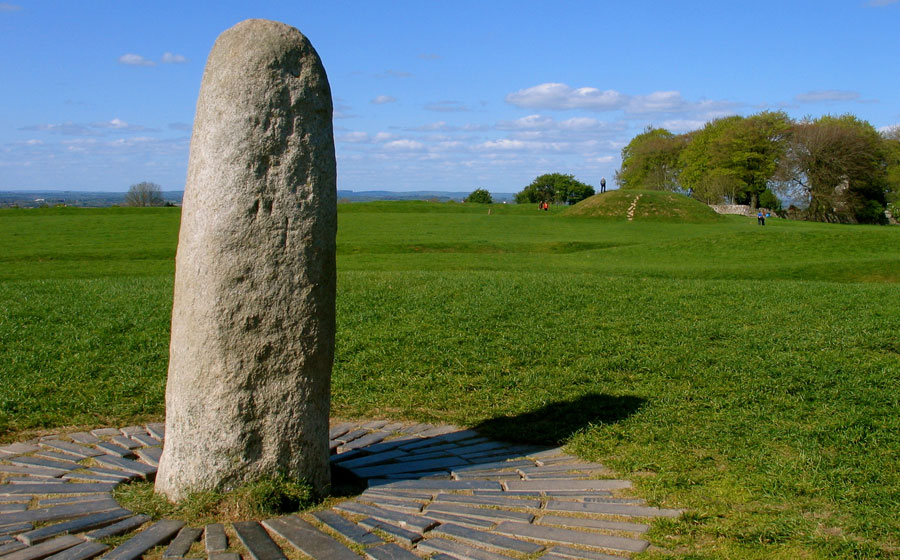
From the following excerpt from an archaeological account, I guess that the circular platform surrounding the Lia Fáil, or Stone of Destiny was an exact replica of the structure as it existed in the Mound of the Hostages, before the granite pillar was relocated at the centre of the Forraid, as shown in the picture above:
"The oldest visible building at Tara is a small chambered cairn on the summit of the hill which is known as the Mound of the Hostages. The name probably comes from some of the many mythological stories associated with the monument. The mound is a chambered cairn or passage grave and was built around 3000 BCE...The mound was excavated by S. P. O'Riordan between 1955 and 1959; what you see today is the reconstruction after excavation. O'Riordan found evidence of an earlier structure under the mound...The mound produced the largest collection of burials and associated artifacts from any Irish neolithic site. These finds included a 30 cm thick layer of cremated bones and a whole range of pendants, antler pins, pottery shards, stone balls and a minature Carrowkeel ware pot. Use for burial continued throughout the Bronze age, when nearly 40 cremated burials were placed in the clay mantle of the mound. There was one inhumation, the body of a 14 year old boy, which was placed under a burial urn. Finds with this burial included fiaence beads which came from the eastern Mediterranean...The Lia Fáil, or Stone of Destiny, which now stands at the centre of a fort called the Forrad, originaly stood outside the entrance to the Mound of the Hostages. It was moved to its present location at the centre of the Forraid in 1824 to commemorate the 1798 Battle of Tara. The stone is a granite pillar, 1.5 meters tall, and is said to be one of the four treasures brought to Ireland by the Tuatha De Danann.
A Terracotta Linga from Kalibangan (2600 BC)
...
Dagda's cauldron. "The name Dagda may ultimately be derived from the Proto-Indo-European *Dhagho-deiwos "shining divinity", the first element being cognate with the English word "day", and possibly a byword for a deification of a notion such as "splendour". This etymology would tie in well with Dagda's mythic association with the sun and the earth, with kingship and excellence in general. *Dhago-deiwos would have been inherited into Proto-Celtic as *Dago-deiwos, thereby punning with the Proto-Celtic word *dago-s "good".http://en.wikipedia.org/wiki/The_Dagda In some texts, Dagda is a father-figure and a protector of the tribe; his mother is Danu.

Lajja Gauri temple.Badami.
N*+, ĐHQGT-HC# ./01,ISBN 23451/6537560015/)
JOURNAL ARTICLE
The Earliest Temple of Lajjāgaurī? The Recent Evidence from Padri in Gujarat
Vasant ShindeEast and WestVol. 44, No. 2/4 (December 1994), pp. 481-485 (5 pages)Published by: Istituto Italiano per l'Africa e l'Oriente (IsIAO
https://www.jstor.org/stable/i29757148
![]()
Location: Amaravati, Guntur Dt., Andhra Pradesh, India Site: Amaravati Monument/Object: sculpture Current Location: Madras Government Museum, Madras, Tamil Nadu, India Subject: Lajja-Gauri Period: Satavahana
Date: ca. late 2nd - 3rd century CE Religious Affiliation: Buddhist, Sakta Material: marble, white Scan Number: 26941 Copyright: Huntington, John C. and Susan L.
![]()
Location: India Site: India Monument/Object: sculpture Current Location: Allahabad Municipal Museum, Allahabad, Uttar Pradesh, India Subject: female figure, squatting Photo Depicts: front Period: Kusana (India)
Date: 30 - 375 CE Material: terracotta Scan Number: 11447 Photo Date: 1984 Image Source: Huntington Archive
![]()
Location: India Site: India Monument/Object: sculpture Current Location: Allahabad Municipal Museum, Allahabad, Uttar Pradesh, India Subject: female figure, squatting Photo Depicts: front Period: Kusana (India)
Date: 30 - 375 CE Material: terracotta Scan Number: 11446 Photo Date: 1984 Image Source: Huntington Archive
![]() See Plan of Vat's excavations showing circular platforms of Harappa. In some cases remnants of the baked brick walls that probably surrounded each platform can be seen on the plan, although earlier and later walls are also shown. From M.S. Vats (1940) Excavations at Harappa. http://www.harappa.com/indus4/354.html The baked brick walls surrounding each platform may indicate that the platforms were within houses or courtyards. http://www.harappa.com/indus4/357.html This evidence notes “A large concentration of straw impressions was found in one part of the floor next to the platform, but there is no evidence of chaff from processing grain as was suggested by earlier excavators.” http://www.harappa.com/indus4/359.html notes: “Greenish clay layers were found in a deep depression in the center of the HARP-excavated platform..”The straw impressions may relate to preparation of packages for exporting the manufactured artefacts.
See Plan of Vat's excavations showing circular platforms of Harappa. In some cases remnants of the baked brick walls that probably surrounded each platform can be seen on the plan, although earlier and later walls are also shown. From M.S. Vats (1940) Excavations at Harappa. http://www.harappa.com/indus4/354.html The baked brick walls surrounding each platform may indicate that the platforms were within houses or courtyards. http://www.harappa.com/indus4/357.html This evidence notes “A large concentration of straw impressions was found in one part of the floor next to the platform, but there is no evidence of chaff from processing grain as was suggested by earlier excavators.” http://www.harappa.com/indus4/359.html notes: “Greenish clay layers were found in a deep depression in the center of the HARP-excavated platform..”The straw impressions may relate to preparation of packages for exporting the manufactured artefacts.![]() Circular platform excavated by Wheeler.Harappa. The circular platform excavated by Wheeler in 1946 (left) and the one excavated by HARP in 1998 (right). Both of these platforms were found inside small square rooms that originally had baked brick walls, subsequently removed by brick robbers (Trench 43).
Circular platform excavated by Wheeler.Harappa. The circular platform excavated by Wheeler in 1946 (left) and the one excavated by HARP in 1998 (right). Both of these platforms were found inside small square rooms that originally had baked brick walls, subsequently removed by brick robbers (Trench 43).![]() In 1998, the circular platform first exposed by Sir Mortimer Wheeler in 1946 was re-exposed and the area around the platform was expanded to reveal the presence of the room in which it was enclosed. The brick walls had been removed by brick robbers and only the mud brick foundations were preserved along with a few tell-tale baked bricks. This particular platform seeems to date to the beginning of the Harappa Phase Period 3C (c. 2200 BCE).
In 1998, the circular platform first exposed by Sir Mortimer Wheeler in 1946 was re-exposed and the area around the platform was expanded to reveal the presence of the room in which it was enclosed. The brick walls had been removed by brick robbers and only the mud brick foundations were preserved along with a few tell-tale baked bricks. This particular platform seeems to date to the beginning of the Harappa Phase Period 3C (c. 2200 BCE).![]() To the west of Wheeler's circular platform a new platform was discovered. This platform was excavated using modern stratigraphic procedures and detailed documentation. Charcoal, sediment, animal bone, charred plant and other botanical samples were collected from each stratum to complement the other artifacts such as pottery, seals and domestic debris. These samples should allow a more precise reconstruction of the function of these enigmatic structures.
To the west of Wheeler's circular platform a new platform was discovered. This platform was excavated using modern stratigraphic procedures and detailed documentation. Charcoal, sediment, animal bone, charred plant and other botanical samples were collected from each stratum to complement the other artifacts such as pottery, seals and domestic debris. These samples should allow a more precise reconstruction of the function of these enigmatic structures.![]() Detail view of the HARP-excavated platform in Trench 43 with Wheeler's platform to the east (toward the top of the image). Note the mud-brick wall foundations that surround each platform to the east, south, and west (the north walls remain unexposed). Traces of baked brick thresholds can be seen on the right (south). See also image 66.
Detail view of the HARP-excavated platform in Trench 43 with Wheeler's platform to the east (toward the top of the image). Note the mud-brick wall foundations that surround each platform to the east, south, and west (the north walls remain unexposed). Traces of baked brick thresholds can be seen on the right (south). See also image 66.![]()
Overview of Trench 43 in 2000 looking north, showing the HARP-exposed circular platform in the foreground and the "granary" area in the background. Note the wall voids to the west, south, and east of the circular platform (see also image 86)
![]() Harappa: reconstructed platform close-up (white colouring is caused by salt seepage)
Harappa: reconstructed platform close-up (white colouring is caused by salt seepage)![Image result for circular brick platform archaeology harappa.com]() Harappa. Getty image.
Harappa. Getty image.
![]()
![]()
![Related image]() Circular working platforms: pavements:*prastarapaṭṭa ʻ stone slab ʼ. [
Circular working platforms: pavements:*prastarapaṭṭa ʻ stone slab ʼ. [prastará -- , paṭṭa -- 1 ]Ku. pathrauṭī f. ʻ pavement of slates and stones ʼ.(CDIAL 8858) prastará m. ʻ anything strewn, grass to sit on ʼ RV., ʻ flat surface ʼ Mn., ʻ (v.l. prastāra -- ) plain ʼ Hariv., ʻ rock, stone ʼ Hit. [√str̥ ]K. pathur, °thuru (dat. °tharas, °tharis) m. ʻ levelled area, bare floor ʼ, pathü rü f. ʻ level piece of ground, plateau, small village ʼ; S. patharu m. ʻ rug, mat ʼ; Or. athuripathuri ʻ bag and baggage ʼ; Bi. pāthar ʻ outside of edge of felly when flat (not bevelled), sowing wide apart ʼ; G. pāthrɔ m. ʻ cut grass lying in a field ʼ; M. pāthrā m. ʻ a line (of plants &c.) set out to dry ʼ; Si. patara ʻ anything that spreads itself ʼ (or < prastāra -- ); -- Pa. Pk. patthara -- m. ʻ stone ʼ, S. patharu m., L. (Ju.) pathar m., khet. patthar, P. patthar m. (→ forms of Bi. Mth. Bhoj. H. G. below with atth or ath), WPah.jaun. pātthar; Ku. pāthar m. ʻ slates, stones ʼ, gng. pāth*l r ʻ flat stone ʼ; A. B. pāthar ʻ stone ʼ, Or. pathara; Bi. pāthar, patthar, patthal ʻ hailstone ʼ; Mth. pāthar, pathal ʻ stone ʼ, Bhoj. pathal, Aw.lakh. pāthar, H. pāthar, patthar, pathar, patthal m., G. patthar, pathrɔ m.; M. pāthar f. ʻ flat stone ʼ; Ko. phāttaru ʻstone ʼ; Si. patura ʻ chip, fragment ʼ; -- S. pathirī f. ʻ stone in the bladder ʼ; P. pathrī f. ʻ small stone ʼ; Ku. patharī ʻ stone cup ʼ; B. pāthri ʻ stone in the bladder, tartar on teeth ʼ; Or. pathurī ʻ stoneware ʼ; H. patthrī f. ʻ grit ʼ, G. pathrī f.*prastarapaṭṭa -- , *prastaramr̥ttikā -- , *prastarāsa -- .Addenda: prastará -- : WPah.kṭg. pátthər m. ʻ stone, rock ʼ; pəthre uṇõ ʻ to stone ʼ; J. pāthar m. ʻ stone ʼ; OMarw. pātharī ʻ precious stone ʼ.(CDIAL 8857)
That the conical pits held dyeing troughs is only a speculation. Certainly, the four conical pits held large storage jars with pointed bases.
What did these storage jars with pointed bases contain?
I suggest that the jars contained metalwork products and hence, the large room of 86 ft.X 64 ft. functioned as a mega-mall selling metalware. This suggestion is based on:
1) A video narrated by Mortimer Wheeler for BBC in an old documentary; https://www.youtube.com/watch?v=8iI1xbBIi_Y (28:52) Listen to this video from 12:05 to 14:25, Mortimer Wheeler calls the room a shop and explains why he calls it a shop. Between 12:04 to 13:40, Wheeler shows a small conical with a 'potter's mark'. This 'potter's mark' is in fact a seal impression in Indus Script detailing information related to the contents of the pot. At 13:03, the image shows the seal impression.
Selected video clip:
Seal impression on a small jar with a pointed base. The three signs are:
Sign 287, Sign 1, Sign 8. Sign 287 is a right-parenthesis which is a characteristic hieroglyphic writing style of splitting a lozenge or rhombus shaped bun-ingot. Thus, the split right-parentheses which function as circumscript modify the message of Sign 8. Sign 8 itself is a ligatured sign emphasising the two shoulders of a 'person's body' signified by Sign 1.
The signifiers of two right-parenthesis symbols as circumscript signifies an ingot, a bun-shaped ingot. This is called mũhã̄ 'ingot' mũhã̄ = the quantity of iron produced atone time in a native smelting furnace (Santali)
Sign 1 is read rebus as: meḍ 'body' rebus: meḍ 'iron' (Mu.Ho.)मृदु mṛdu, mẽṛhẽt, meḍ 'metal' (Skt.Santali.Mu.Ho.)
Sign 8 with two ligatures of 'notch' or 'fin' or 'shoulder' or 'wing' on either shoulder, is read as an orthographic expansion of Signs 6,7,18 and 39 The ligatured Sign 8 is read rebus as: dula 'pair' rebus: dul 'metal casting' PLUS eraka 'fin, wing, shoulder' rebus: eraka 'metal infusion'. Thus, Sign 8 reads: dul meḍ, dul mẽṛhẽt 'cast iron' (this expression is attested in Santali).
Sign 6, Sign 7, Sign 18, Sign 39 with 'notch' ligature are orthographic variants of Sign 3.'metal equipment scribe'. Ligature on Sign 18 also signifies eraka 'shoulder' rebus: eraka 'molten csst. Thus, equipment metal caster, scribe. Sign 39 has the ligature at the waist. *ḍhākka ʻ back, waist ʼ.Wg. ḍakāˊ ʻ waist ʼ; Dm. ḍã̄k, ḍaṅ ʻ back ʼ, Shum. ḍäg, Woṭ. ḍāg, Gaw. ḍáka; Kal. rumb. ḍhak ʻ waist ʼ, urt. ḍhã̄k ʻ back ʼ; Bshk. ḍāk ʻ waist ʼ, d(h)āk ʻ back ʼ AO xviii 233; Tor. ḍāk, ḍāg ʻ back ʼ, Mai. ḍāg, ḍā; Phal. ḍōk ʻ waist, back ʼ; Sh. ḍāki̯ f. ʻ back, small of back ʼ, pales. ḍāko; S. ḍhāka f. ʻ hip ʼ, L. ḍhāk; P. ḍhāk f. ʻ side, hip ʼ.(CDIAL 5582) Rebus: धक्क (p. 245) dhakka a (Imit.) Steady, enduring, unshaken (as under misfortune): hale, hearty, stanch, unflinching--man or animal: stout, sound, firm, fit to render good service--cloth, an article gen. 2 Brightshining, brilliant, very lustrous--metal, a gem, a firework. Hence 3 Bright and good, altogether excellent--a rupee or other coin. *dhakṣati ʻ burns ʼ [Cf. fut. part. vidhakṣyánt -- , aor. part. dhákṣat RV. -- √dah ]G. dhakhvũ ʻ to get into a passion ʼ, dhakhāvvũ ʻ to make hot ʼ, dhakh f. ʻ thirst ʼ.Addenda: dhákṣu -- : S.kcch. ḍakho m. ʻ quarrel ʼ; B. dhak ʻ sudden blaze ʼ, Or. dhaka ʻ blaze ʼ (rather than < *dhagg -- ).(CDIAL 6703). Thus, shining lustrous metal equipment (maker), scribe. Synonym:
Ta. ciṟai, ciṟaku, ciṟakar wing; iṟai, iṟaku, iṟakar, iṟakkai wing, feather. Ma. iṟaku, ciṟaku wing. Ko. rek wing, feather. Ka. eṟake, eṟaṅke, ṟakke, ṟekke wing; ṟaṭṭe, ṟeṭṭe wing, upper arm. Koḍ. rekke wing; raṭṭe upper arm. Tu. ediṅke, reṅkè wing. Te. eṟaka, ṟekka, rekka, neṟaka, neṟi id. Kol. reḍapa, (SR.) reppā id.; (P.) reṛapa id., feather. Nk. rekka, reppa wing. Pa. (S.) rekka id. Go. (S.) rekka wing-feather; reka (M.) feather, (Ko.) wing (Voc. 3045). Konḍa ṟeka wing, upper arm. Kuwi (Su.) rekkawing.(DEDR 2591) Kui sērki the back of the neck. Kuwi (F.) hērki, (Isr. Su. P.) herki neck; (S.) herki shoulder. (DEDR 2817)
இறகு iṟaku , n. < இற- . [T. eṟaka, K. eṟake, M. iṟahu.] 1. Wing, pinion; சிறகு . 2. Feather, quill; தனியிறகு . 3. Peacock's feather; மயிற் பீலி. (திவா.)
ஏரகம் ērakam , n. 1. Udipi in S. Kanara, sacred to Skanda, one of the six paṭai-vīṭu, q.v. See திருவேரகம். ஏரகத் துறைதலுமுரியன் (திரு முரு . 189). 2. Swāmimalai in the Tanjore Dist.; சுவாமிமலை . Mod.
eṛaka 'upraised arm' (Tamil);
![]() erakōlu = the iron axle of a carriage (Ka.M.); cf. irasu (Kannada) eraka, era, er-a = syn. erka, copper, weapons (Ka.)erka = ekke (Tbh.of arka) aka (Tbh. of arka) copper (metal);crystal (Kannada) cf. eruvai = copper (Ta.lex.) eraka, er-aka = any metal infusion (Ka.Tu.); erako molten cast (Tulu) Rebus: eraka= copper (Ka.)eruvai =copper (Ta.); ere - a dark-red colour (Ka.)(DEDR 817).
erakōlu = the iron axle of a carriage (Ka.M.); cf. irasu (Kannada) eraka, era, er-a = syn. erka, copper, weapons (Ka.)erka = ekke (Tbh.of arka) aka (Tbh. of arka) copper (metal);crystal (Kannada) cf. eruvai = copper (Ta.lex.) eraka, er-aka = any metal infusion (Ka.Tu.); erako molten cast (Tulu) Rebus: eraka= copper (Ka.)eruvai =copper (Ta.); ere - a dark-red colour (Ka.)(DEDR 817). உருக்கு2 urukku , n. < உருக்கு- . [T. ukku, K. urku, M. urukku.] 1. Steel; எஃகு. (சூடா.) 2. Anything melted, product of liquefaction; உருக் கினபொருள். செப்புருக் கனைய (கம்பரா. கார்கா . 91). *உருக்குத்து-தல் uru-k-kuttu- , v. tr. < உரு3 +. 1. To cast in a mould; உருவம் அமைய வார்ப்படம் வார்த்தல் . (நெடுநல் . 57, உரை .) 2. To vaccinate; அம்மை குத்துதல் . Loc.
Sign 287 'curve' hieroglyph and 'angle' hieroglyph (as seen on lozenge/rhombus/ovalshaped hieroglyphs). The basic orthograph of Sign 287 is signifiedby the semantics of: kuṭila ‘bent’ CDIAL 3230 kuṭi— in cmpd. ‘curve’, kuṭika— ‘bent’ MBh. Rebus: kuṭila, katthīl = bronze (8 parts copper and 2 parts tin) cf. āra-kūṭa, 'brass' Old English ār 'brass, copper, bronze' Old Norse eir 'brass, copper', German ehern 'brassy, bronzen'. kastīra n. ʻ tin ʼ lex. 2. *kastilla -- .1. H. kathīr m. ʻ tin, pewter ʼ; G. kathīr n. ʻ pewter ʼ.2. H. (Bhoj.?) kathīl, °lā m. ʻ tin, pewter ʼ; M. kathīl n. ʻ tin ʼ, kathlẽ n. ʻ large tin vessel ʼ.(CDIAL 2984) कौटिलिकः kauṭilikḥ कौटिलिकः 1 A hunter.-2 A blacksmith.
Sign 342![]() 'rim-of-jar' कर्णक m. (ifc. f(आ).) a prominence or handle or projection on the side or sides (of a vessel &c ) , a tendril S3Br. Ka1tyS3r. Rebus: कर्णिक having a helm; a steersman; m. pl. N. of a people VP. (Monier-Williams) rebus:karṇī 'supercargo', 'engraver' (
'rim-of-jar' कर्णक m. (ifc. f(आ).) a prominence or handle or projection on the side or sides (of a vessel &c ) , a tendril S3Br. Ka1tyS3r. Rebus: कर्णिक having a helm; a steersman; m. pl. N. of a people VP. (Monier-Williams) rebus:karṇī 'supercargo', 'engraver' (
Thus, Sign 15 is read a hypertext composed of Sign 12 and Sign 342.The combined hypertext expression reads: karṇa kuṭhi 'smelter of steersman, supercargo' composed of karṇaka 'rim of jar' rebus: karṇaka 'engraver, steersman, supercargo' PLUS kuṭi 'water-carrier' rebus: kuṭhi 'smelter' .
![]() Sign C 'Notch' खांडा khāṇḍā m A kind of sword, straight, broad-bladed, two-edged, and round-ended. 2 A jag, notch, or indentation (as upon the edge of a tool or weapon). 3 A rough furrow, ravine, gully. Rebus: खांडा khāṇḍā 'equipment'
Sign C 'Notch' खांडा khāṇḍā m A kind of sword, straight, broad-bladed, two-edged, and round-ended. 2 A jag, notch, or indentation (as upon the edge of a tool or weapon). 3 A rough furrow, ravine, gully. Rebus: खांडा khāṇḍā 'equipment'
Thus, the seal impression on the storage pot with a pointed base of Mohenjo-daro is a message which signifies the contents of the storage pot.
dul mũhã̄ mẽṛhẽt, 'iron metal casting ingot'. (and) खांडा khāṇḍā 'equipment' of karṇa kuṭhi'smelter of steersman, supercargo'
2) The example of a large storage jar with an Indus Script seal impression.
Susa of Sumerians is famous for the Susa pot which came with metalware from Meluhha. The pot is now in Louvre Museum. The pot shows Indus Script Hypertexts to describe the metalware catalogue.
![]() Map showing the area of the Elamite kingdom (in orange) and the neighboring areas. The approximate Bronze Age extension of the Persian Gulf is shown.
Map showing the area of the Elamite kingdom (in orange) and the neighboring areas. The approximate Bronze Age extension of the Persian Gulf is shown.![]()
Clay storage pot discovered in Susa (Acropole mound), ca. 2500-2400 BCE (h. 20 ¼ in. or 51 cm). Musee du Louvre. Sb 2723 bis (vers 2450 avant J.C.) The vase a la cachette, shown with its contents. Acropole mound, SusaIt is a remarkable 'rosetta stone' because it validates the expression used by Panini: ayaskāṇḍa अयस्--काण्ड [p= 85,1] m. n. " a quantity of iron " or " excellent iron " , (g. कस्का*दि q.v.). The early semantics of this expression is likely to be 'metal implements compared with the Santali expression to signify iron implements: meď 'copper' (Slovāk), mẽṛhẽt,khaṇḍa (Santali) मृदु mṛdu,’soft iron’ (Samskrtam).
This is a jar closed with a ducted bowl. The treasure called "vase in hiding" was initially grouped in two containers with lids. The second ceramic vessel was covered with a copper lid. It no longer exists leaving only one. Both pottery contained a variety of small objects form a treasure six seals, which range from Proto-Elamite period (3100-2750 BCE) to the oldest, the most recent being dated to 2450 BCE (First Dynasty of Ur).
Therefore it is possible to date these objects, this treasure. Everything included 29 vessels including 11 banded alabaster, mirror, tools and weapons made of copper and bronze, 5 pellets crucibles copper, 4 rings with three gold and a silver, a small figurine of a frog lapis lazuli, gold beads 9, 13 small stones and glazed shard.
"In the third millenium Sumerian texts list copper among the raw materials reaching Uruk from Aratta and all three of the regions Magan, Meluhha and Dilmun are associated with copper, but the latter only as an emporium. Gudea refers obliquely to receiving copper from Dilmun: 'He (Gudea) conferred with the divine Ninzaga (= Enzak of Dilmun), who transported copper like grain deliveries to the temple builder Gudea...' (Cylinder A: XV, 11-18, Englund 1983, 88, n.6). Magan was certainly a land producing the metal, since it is occasionally referred to as the 'mountain of copper'. It may also have been the source of finished bronze objects."
"Susa... profound affinity between the Elamite people who migrated to Anshan and Susa and the Dilmunite people... Elam proper corresponded to the plateau of Fars with its capital at Anshan. We think, however that it probably extended further north into the Bakhtiari Mountains... likely that the chlorite and serpentine vases reached Susa by sea... From the victory proclamations of the kings of Akkad we also learn that the city of Anshan had been re-established, as the capital of a revitalised political ally: Elam itself... the import by Ur and Eshnunna of inscribed objects typical of the Harappan culture provides the first reliable chronological evidence. [C.J. Gadd, Seals of ancient style found at Ur, Proceedings of the British Academy, XVIII, 1932; Henry Frankfort, Tell Asmar, Khafaje and Khorsabad, OIC, 16, 1933, p. 50, fig. 22). It is certainly possible that writing developed in India before this time, but we have no real proof. Now Susa had received evidence of this same civilisation, admittedly not all dating from the Akkadian period, but apparently spanning all the closing years of the third millennium (L. Delaporte, Musee du Louvre. Catalogues des Cylindres Orientaux..., vol. I, 1920pl. 25(15), S.29. P. Amiet, Glyptique susienne,MDAI, 43, 1972, vol. II, pl. 153, no. 1643)... B. Buchanan has published a tablet dating from the reign of Gungunum of Larsa, in the twentieth century BC, which carries the impression of such a stamp seal. (B.Buchanan, Studies in honor of Benno Landsberger, Chicago, 1965, p. 204, s.). The date so revealed has been wholly confirmed by the impression of a stamp seal from the group, fig. 85, found on a Susa tablet of the same period. (P. Amiet, Antiquites du Desert de Lut, RA, 68, 1974, p. 109, fig. 16. Maurice Lambert, RA, 70, 1976, p. 71-72). It is in fact, a receipt of the kind in use at the beginning of the Isin-Larsa period, and mentions a certain Milhi-El, son of Tem-Enzag, who, from the name of his god, must be a Dilmunite. In these circumstances we may wonder if this document had not been drawn up at Dilmun and sent to Susa after sealing with a local stamp seal. This seal is decorated with six tightly-packed, crouching animals, characterised by vague shapes, with legs under their bodies, huge heads and necks sometimes striped obliquely. The impression of another seal of similar type, fig. 86, depicts in the centre a throned figure who seems to dominate the animals, continuing a tradition of which examples are known at the end of the Ubaid period in Assyria... Fig. 87 to 89 are Dilmun-type seals found at Susa. The boss is semi-spherical and decorated with a band across the centre and four incised circles. [Pierre Amiet, Susa and the Dilmun Culture, pp. 262-268].
See: http://tinyurl.com/kwshofn
A hieroglyph to signify pahārā 'a shop' is an 'open mouth' as shown in the examples of two Indus Script seals presented below: प्र-सार opening (the mouth)(वोपदेव) rebus: a trader's shop (नलचम्पू or दमयन्तीकथा).
Two open-mouthed tiger Indus Script seals deciphered, pahārā ʻgoldsmith's workshopʼ https://tinyurl.com/ych9afl3![Image result for tiger indus script]()
![Image result for tiger indus script]()
Hieroglyph: Branch of tree: To. kwṛ (obl. kwṭ-) horn, branch, path across stream in thicket. Ka. kōḍu horn, tusk, branch of a tree; kōr̤ horn.(DEDR 2200) heraka ‘spy’ Rebus: eraka ‘copper, molten cast'
kola 'tiger' rebus: kol 'working in iron' kolhe 'smelter'
krammara 'look back' rebus: kamar 'blacksmith'. Thus, kol pasar 'tiger open mouth' rebus: kol pasar iron smelter trader's shop'
kuṭi 'water-carrier' rebus: kuṭhi 'smelter'
Hieroglyph: horns:கோடு kōṭu : •நடுநிலை நீங்குகை. கோடிறீக் கூற் றம் (நாலடி, 5). 3. [K. kōḍu.] Tusk; யானை பன்றிகளின் தந்தம். மத்த யானையின் கோடும் (தேவா. 39, 1). 4. Horn; விலங்கின் கொம்பு. கோட்டிடை யாடினை கூத்து (திவ். இயற். திருவிருத். 21). Ta. kōṭu (in cpds. kōṭṭu-) horn, tusk, branch of tree, cluster, bunch, coil of hair, line, diagram, bank of stream or pool; kuvaṭu branch of a tree; kōṭṭāṉ, kōṭṭuvāṉ rock horned-owl (cf. 1657 Ta. kuṭiñai). Ko. kṛ (obl. kṭ-) horns (one horn is kob), half of hair on each side of parting, side in game, log, section of bamboo used as fuel, line marked out. To. kwṛ (obl. kwṭ-) horn, branch, path across stream in thicket. Ka. kōḍu horn, tusk, branch of a tree; kōr̤ horn. Tu. kōḍů, kōḍu horn. Te. kōḍu rivulet, branch of a river. Pa. kōḍ (pl. kōḍul) horn (DEDR 2200) Rebus: koḍ = artisan’s workshop (Kuwi)Hieroglyph:Split parenthesis (is a hieroglyph created from an oval glyph): mũh metal ingot (Santali) mũhã̄ = the quantity of iron produced at one time in a native smelting furnace of the Kolhes; iron produced by the Kolhes and formed like a four-cornered piece a little pointed at each end; mūhā mẽṛhẽt = iron smelted by the Kolhes and formed into an equilateral lump a little pointed at each of four ends; kolhe tehen mẽṛhẽt ko mūhā akata = the Kolhes have to-day produced pig iron (Santali) PLUS dhakka 'lid' rebus: dhakka 'bright'. Thus, bright metal ingot.
Sign 342. kaṇḍa kanka 'rim of jar' (Santali): karṇaka rim of jar’(Skt.) Rebus: karṇaka ‘scribe, accountant’ (Te.); gaṇaka id. (Skt.) (Santali) copper fire-altar scribe (account)(Skt.) Rebus: kaṇḍ ‘fire-altar’ (Santali) Thus, the 'rim of jar' ligatured glyph is read rebus: fire-altar (furnace) scribe (account)Pasaramu 'cattle' పసరము pasaramu or పసలము pasaramu. [Tel.] n. A beast, an animal. గోమహిషహాతి. rebus: pajhar 'smelter, smithy', rebus: పసారము pasāramu or పసారు pasārdmu. [Tel.] n. A shop. associated triplets of hypertext clusters. Thus, clusters of animals (expanded also as a composite animal or animals shown in procession) are wealth-accounting classifiers of distinct metalwork categories related to a smelter or a smithy.
Vasant Shinde
East and West
Vol. 44, No. 2/4 (December 1994), pp. 481-485 (5 pages)
Published by: Istituto Italiano per l'Africa e l'Oriente (IsIAO
https://www.jstor.org/stable/i29757148
![]()
![]() Circular platform excavated by Wheeler.Harappa. The circular platform excavated by Wheeler in 1946 (left) and the one excavated by HARP in 1998 (right). Both of these platforms were found inside small square rooms that originally had baked brick walls, subsequently removed by brick robbers (Trench 43).
Circular platform excavated by Wheeler.Harappa. The circular platform excavated by Wheeler in 1946 (left) and the one excavated by HARP in 1998 (right). Both of these platforms were found inside small square rooms that originally had baked brick walls, subsequently removed by brick robbers (Trench 43).![]()
![]()
![]()
![]()
Overview of Trench 43 in 2000 looking north, showing the HARP-exposed circular platform in the foreground and the "granary" area in the background. Note the wall voids to the west, south, and east of the circular platform (see also image 86)
![]() Harappa: reconstructed platform close-up (white colouring is caused by salt seepage)
Harappa: reconstructed platform close-up (white colouring is caused by salt seepage)![Image result for circular brick platform archaeology harappa.com]() Harappa. Getty image.
Harappa. Getty image.
![]()
![]()
![Related image]()
இறகு iṟaku , n. < இற- . [T. eṟaka, K. eṟake, M. iṟahu.] 1. Wing, pinion; சிறகு . 2. Feather, quill; தனியிறகு . 3. Peacock's feather; மயிற் பீலி. (திவா.)
ஏரகம் ērakam , n. 1. Udipi in S. Kanara, sacred to Skanda, one of the six paṭai-vīṭu, q.v. See திருவேரகம். ஏரகத் துறைதலுமுரியன் (திரு முரு . 189). 2. Swāmimalai in the Tanjore Dist.; சுவாமிமலை . Mod.
![]() erakōlu = the iron axle of a carriage (Ka.M.); cf. irasu (Kannada) eraka, era, er-a = syn. erka, copper, weapons (Ka.)erka = ekke (Tbh.of arka) aka (Tbh. of arka) copper (metal);crystal (Kannada) cf. eruvai = copper (Ta.lex.) eraka, er-aka = any metal infusion (Ka.Tu.); erako molten cast (Tulu) Rebus: eraka= copper (Ka.)eruvai =copper (Ta.); ere - a dark-red colour (Ka.)(DEDR 817).
erakōlu = the iron axle of a carriage (Ka.M.); cf. irasu (Kannada) eraka, era, er-a = syn. erka, copper, weapons (Ka.)erka = ekke (Tbh.of arka) aka (Tbh. of arka) copper (metal);crystal (Kannada) cf. eruvai = copper (Ta.lex.) eraka, er-aka = any metal infusion (Ka.Tu.); erako molten cast (Tulu) Rebus: eraka= copper (Ka.)eruvai =copper (Ta.); ere - a dark-red colour (Ka.)(DEDR 817). உருக்கு2 urukku , n. < உருக்கு- . [T. ukku, K. urku, M. urukku.] 1. Steel; எஃகு. (சூடா.) 2. Anything melted, product of liquefaction; உருக் கினபொருள். செப்புருக் கனைய (கம்பரா. கார்கா . 91). *உருக்குத்து-தல் uru-k-kuttu- , v. tr. < உரு3 +. 1. To cast in a mould; உருவம் அமைய வார்ப்படம் வார்த்தல் . (நெடுநல் . 57, உரை .) 2. To vaccinate; அம்மை குத்துதல் . Loc.
![]() Sign C 'Notch' खांडा khāṇḍā m A kind of sword, straight, broad-bladed, two-edged, and round-ended. 2 A jag, notch, or indentation (as upon the edge of a tool or weapon). 3 A rough furrow, ravine, gully. Rebus: खांडा khāṇḍā 'equipment'
Sign C 'Notch' खांडा khāṇḍā m A kind of sword, straight, broad-bladed, two-edged, and round-ended. 2 A jag, notch, or indentation (as upon the edge of a tool or weapon). 3 A rough furrow, ravine, gully. Rebus: खांडा khāṇḍā 'equipment'
https://www.jstor.org/stable/i29757148
 |
|
|
 |
|
|
 |
|
|

See Plan of Vat's excavations showing circular platforms of Harappa. In some cases remnants of the baked brick walls that probably surrounded each platform can be seen on the plan, although earlier and later walls are also shown. From M.S. Vats (1940) Excavations at Harappa. http://www.harappa.com/indus4/354.html The baked brick walls surrounding each platform may indicate that the platforms were within houses or courtyards.
http://www.harappa.com/indus4/357.html This evidence notes “A large concentration of straw impressions was found in one part of the floor next to the platform, but there is no evidence of chaff from processing grain as was suggested by earlier excavators.” http://www.harappa.com/indus4/359.html notes: “Greenish clay layers were found in a deep depression in the center of the HARP-excavated platform..”The straw impressions may relate to preparation of packages for exporting the manufactured artefacts.
 Circular platform excavated by Wheeler.Harappa. The circular platform excavated by Wheeler in 1946 (left) and the one excavated by HARP in 1998 (right). Both of these platforms were found inside small square rooms that originally had baked brick walls, subsequently removed by brick robbers (Trench 43).
Circular platform excavated by Wheeler.Harappa. The circular platform excavated by Wheeler in 1946 (left) and the one excavated by HARP in 1998 (right). Both of these platforms were found inside small square rooms that originally had baked brick walls, subsequently removed by brick robbers (Trench 43).
In 1998, the circular platform first exposed by Sir Mortimer Wheeler in 1946 was re-exposed and the area around the platform was expanded to reveal the presence of the room in which it was enclosed. The brick walls had been removed by brick robbers and only the mud brick foundations were preserved along with a few tell-tale baked bricks. This particular platform seeems to date to the beginning of the Harappa Phase Period 3C (c. 2200 BCE).

To the west of Wheeler's circular platform a new platform was discovered. This platform was excavated using modern stratigraphic procedures and detailed documentation. Charcoal, sediment, animal bone, charred plant and other botanical samples were collected from each stratum to complement the other artifacts such as pottery, seals and domestic debris. These samples should allow a more precise reconstruction of the function of these enigmatic structures.

Detail view of the HARP-excavated platform in Trench 43 with Wheeler's platform to the east (toward the top of the image). Note the mud-brick wall foundations that surround each platform to the east, south, and west (the north walls remain unexposed). Traces of baked brick thresholds can be seen on the right (south). See also image 66.

Overview of Trench 43 in 2000 looking north, showing the HARP-exposed circular platform in the foreground and the "granary" area in the background. Note the wall voids to the west, south, and east of the circular platform (see also image 86)
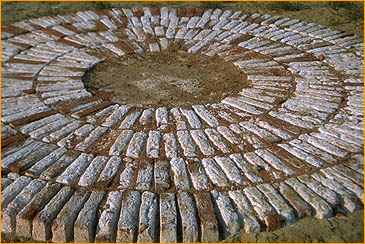 Harappa: reconstructed platform close-up (white colouring is caused by salt seepage)
Harappa: reconstructed platform close-up (white colouring is caused by salt seepage) Harappa. Getty image.
Harappa. Getty image.


Circular working platforms: pavements:*prastarapaṭṭa ʻ stone slab ʼ. [prastará -- , paṭṭa -- 1 ]Ku. pathrauṭī f. ʻ pavement of slates and stones ʼ.(CDIAL 8858) prastará m. ʻ anything strewn, grass to sit on ʼ RV., ʻ flat surface ʼ Mn., ʻ (v.l. prastāra -- ) plain ʼ Hariv., ʻ rock, stone ʼ Hit. [√str̥ ]K. pathur, °thuru (dat. °tharas, °tharis) m. ʻ levelled area, bare floor ʼ, pathü rü f. ʻ level piece of ground, plateau, small village ʼ; S. patharu m. ʻ rug, mat ʼ; Or. athuripathuri ʻ bag and baggage ʼ; Bi. pāthar ʻ outside of edge of felly when flat (not bevelled), sowing wide apart ʼ; G. pāthrɔ m. ʻ cut grass lying in a field ʼ; M. pāthrā m. ʻ a line (of plants &c.) set out to dry ʼ; Si. patara ʻ anything that spreads itself ʼ (or < prastāra -- ); -- Pa. Pk. patthara -- m. ʻ stone ʼ, S. patharu m., L. (Ju.) pathar m., khet. patthar, P. patthar m. (→ forms of Bi. Mth. Bhoj. H. G. below with atth or ath), WPah.jaun. pātthar; Ku. pāthar m. ʻ slates, stones ʼ, gng. pāth*l r ʻ flat stone ʼ; A. B. pāthar ʻ stone ʼ, Or. pathara; Bi. pāthar, patthar, patthal ʻ hailstone ʼ; Mth. pāthar, pathal ʻ stone ʼ, Bhoj. pathal, Aw.lakh. pāthar, H. pāthar, patthar, pathar, patthal m., G. patthar, pathrɔ m.; M. pāthar f. ʻ flat stone ʼ; Ko. phāttaru ʻstone ʼ; Si. patura ʻ chip, fragment ʼ; -- S. pathirī f. ʻ stone in the bladder ʼ; P. pathrī f. ʻ small stone ʼ; Ku. patharī ʻ stone cup ʼ; B. pāthri ʻ stone in the bladder, tartar on teeth ʼ; Or. pathurī ʻ stoneware ʼ; H. patthrī f. ʻ grit ʼ, G. pathrī f.*prastarapaṭṭa -- , *prastaramr̥ttikā -- , *prastarāsa -- .Addenda: prastará -- : WPah.kṭg. pátthər m. ʻ stone, rock ʼ; pəthre uṇõ ʻ to stone ʼ; J. pāthar m. ʻ stone ʼ; OMarw. pātharī ʻ precious stone ʼ.(CDIAL 8857)
That the conical pits held dyeing troughs is only a speculation. Certainly, the four conical pits held large storage jars with pointed bases.
What did these storage jars with pointed bases contain?
I suggest that the jars contained metalwork products and hence, the large room of 86 ft.X 64 ft. functioned as a mega-mall selling metalware. This suggestion is based on:
1) A video narrated by Mortimer Wheeler for BBC in an old documentary; https://www.youtube.com/watch?v=8iI1xbBIi_Y (28:52) Listen to this video from 12:05 to 14:25, Mortimer Wheeler calls the room a shop and explains why he calls it a shop. Between 12:04 to 13:40, Wheeler shows a small conical with a 'potter's mark'. This 'potter's mark' is in fact a seal impression in Indus Script detailing information related to the contents of the pot. At 13:03, the image shows the seal impression.
Selected video clip:
Selected video clip:
Seal impression on a small jar with a pointed base. The three signs are:
Sign 287, Sign 1, Sign 8. Sign 287 is a right-parenthesis which is a characteristic hieroglyphic writing style of splitting a lozenge or rhombus shaped bun-ingot. Thus, the split right-parentheses which function as circumscript modify the message of Sign 8. Sign 8 itself is a ligatured sign emphasising the two shoulders of a 'person's body' signified by Sign 1.
The signifiers of two right-parenthesis symbols as circumscript signifies an ingot, a bun-shaped ingot. This is called mũhã̄ 'ingot' mũhã̄ = the quantity of iron produced atone time in a native smelting furnace (Santali)
Sign 1 is read rebus as: meḍ 'body' rebus: meḍ 'iron' (Mu.Ho.)मृदु mṛdu, mẽṛhẽt, meḍ 'metal' (Skt.Santali.Mu.Ho.)
Sign 8 with two ligatures of 'notch' or 'fin' or 'shoulder' or 'wing' on either shoulder, is read as an orthographic expansion of Signs 6,7,18 and 39 The ligatured Sign 8 is read rebus as: dula 'pair' rebus: dul 'metal casting' PLUS eraka 'fin, wing, shoulder' rebus: eraka 'metal infusion'. Thus, Sign 8 reads: dul meḍ, dul mẽṛhẽt 'cast iron' (this expression is attested in Santali).
Sign 6, Sign 7, Sign 18, Sign 39 with 'notch' ligature are orthographic variants of Sign 3.'metal equipment scribe'. Ligature on Sign 18 also signifies eraka 'shoulder' rebus: eraka 'molten csst. Thus, equipment metal caster, scribe. Sign 39 has the ligature at the waist. *ḍhākka ʻ back, waist ʼ.Wg. ḍakāˊ ʻ waist ʼ; Dm. ḍã̄k, ḍaṅ ʻ back ʼ, Shum. ḍäg, Woṭ. ḍāg, Gaw. ḍáka; Kal. rumb. ḍhak ʻ waist ʼ, urt. ḍhã̄k ʻ back ʼ; Bshk. ḍāk ʻ waist ʼ, d(h)āk ʻ back ʼ AO xviii 233; Tor. ḍāk, ḍāg ʻ back ʼ, Mai. ḍāg, ḍā; Phal. ḍōk ʻ waist, back ʼ; Sh. ḍāki̯ f. ʻ back, small of back ʼ, pales. ḍāko; S. ḍhāka f. ʻ hip ʼ, L. ḍhāk; P. ḍhāk f. ʻ side, hip ʼ.(CDIAL 5582) Rebus: धक्क (p. 245) dhakka a (Imit.) Steady, enduring, unshaken (as under misfortune): hale, hearty, stanch, unflinching--man or animal: stout, sound, firm, fit to render good service--cloth, an article gen. 2 Brightshining, brilliant, very lustrous--metal, a gem, a firework. Hence 3 Bright and good, altogether excellent--a rupee or other coin. *dhakṣati ʻ burns ʼ [Cf. fut. part. vidhakṣyánt -- , aor. part. dhákṣat RV. -- √dah ]G. dhakhvũ ʻ to get into a passion ʼ, dhakhāvvũ ʻ to make hot ʼ, dhakh f. ʻ thirst ʼ.Addenda: dhákṣu -- : S.kcch. ḍakho m. ʻ quarrel ʼ; B. dhak ʻ sudden blaze ʼ, Or. dhaka ʻ blaze ʼ (rather than < *dhagg -- ).(CDIAL 6703). Thus, shining lustrous metal equipment (maker), scribe.
Synonym: Ta. ciṟai, ciṟaku, ciṟakar wing; iṟai, iṟaku, iṟakar, iṟakkai wing, feather. Ma. iṟaku, ciṟaku wing. Ko. rek wing, feather. Ka. eṟake, eṟaṅke, ṟakke, ṟekke wing; ṟaṭṭe, ṟeṭṭe wing, upper arm. Koḍ. rekke wing; raṭṭe upper arm. Tu. ediṅke, reṅkè wing. Te. eṟaka, ṟekka, rekka, neṟaka, neṟi id. Kol. reḍapa, (SR.) reppā id.; (P.) reṛapa id., feather. Nk. rekka, reppa wing. Pa. (S.) rekka id. Go. (S.) rekka wing-feather; reka (M.) feather, (Ko.) wing (Voc. 3045). Konḍa ṟeka wing, upper arm. Kuwi (Su.) rekkawing.(DEDR 2591) Kui sērki the back of the neck. Kuwi (F.) hērki, (Isr. Su. P.) herki neck; (S.) herki shoulder. (DEDR 2817)
eṛaka 'upraised arm' (Tamil);
Sign 287 'curve' hieroglyph and 'angle' hieroglyph (as seen on lozenge/rhombus/ovalshaped hieroglyphs). The basic orthograph of Sign 287 is signifiedby the semantics of: kuṭila ‘bent’ CDIAL 3230 kuṭi— in cmpd. ‘curve’, kuṭika— ‘bent’ MBh. Rebus: kuṭila, katthīl = bronze (8 parts copper and 2 parts tin) cf. āra-kūṭa, 'brass' Old English ār 'brass, copper, bronze' Old Norse eir 'brass, copper', German ehern 'brassy, bronzen'. kastīra n. ʻ tin ʼ lex. 2. *kastilla -- .1. H. kathīr m. ʻ tin, pewter ʼ; G. kathīr n. ʻ pewter ʼ.2. H. (Bhoj.?) kathīl, °lā m. ʻ tin, pewter ʼ; M. kathīl n. ʻ tin ʼ, kathlẽ n. ʻ large tin vessel ʼ.(CDIAL 2984) कौटिलिकः kauṭilikḥ कौटिलिकः 1 A hunter.-2 A blacksmith.
Sign 342![]() 'rim-of-jar' कर्णक m. (ifc. f(आ).) a prominence or handle or projection on the side or sides (of a vessel &c ) , a tendril S3Br. Ka1tyS3r. Rebus: कर्णिक having a helm; a steersman; m. pl. N. of a people VP. (Monier-Williams) rebus:karṇī 'supercargo', 'engraver' (
'rim-of-jar' कर्णक m. (ifc. f(आ).) a prominence or handle or projection on the side or sides (of a vessel &c ) , a tendril S3Br. Ka1tyS3r. Rebus: कर्णिक having a helm; a steersman; m. pl. N. of a people VP. (Monier-Williams) rebus:karṇī 'supercargo', 'engraver' (
 'rim-of-jar' कर्णक m. (ifc. f(आ).) a prominence or handle or projection on the side or sides (of a vessel &c ) , a tendril S3Br. Ka1tyS3r. Rebus: कर्णिक having a helm; a steersman; m. pl. N. of a people VP. (Monier-Williams) rebus:karṇī 'supercargo', 'engraver' (
'rim-of-jar' कर्णक m. (ifc. f(आ).) a prominence or handle or projection on the side or sides (of a vessel &c ) , a tendril S3Br. Ka1tyS3r. Rebus: कर्णिक having a helm; a steersman; m. pl. N. of a people VP. (Monier-Williams) rebus:karṇī 'supercargo', 'engraver' (Thus, Sign 15 is read a hypertext composed of Sign 12 and Sign 342.The combined hypertext expression reads: karṇa kuṭhi 'smelter of steersman, supercargo' composed of karṇaka 'rim of jar' rebus: karṇaka 'engraver, steersman, supercargo' PLUS kuṭi 'water-carrier' rebus: kuṭhi 'smelter' .
Thus, the seal impression on the storage pot with a pointed base of Mohenjo-daro is a message which signifies the contents of the storage pot.
dul mũhã̄ mẽṛhẽt, 'iron metal casting ingot'. (and) खांडा khāṇḍā 'equipment' of karṇa kuṭhi'smelter of steersman, supercargo'
2) The example of a large storage jar with an Indus Script seal impression.
Susa of Sumerians is famous for the Susa pot which came with metalware from Meluhha. The pot is now in Louvre Museum. The pot shows Indus Script Hypertexts to describe the metalware catalogue.
![]() Map showing the area of the Elamite kingdom (in orange) and the neighboring areas. The approximate Bronze Age extension of the Persian Gulf is shown.
Map showing the area of the Elamite kingdom (in orange) and the neighboring areas. The approximate Bronze Age extension of the Persian Gulf is shown.![]()
Susa of Sumerians is famous for the Susa pot which came with metalware from Meluhha. The pot is now in Louvre Museum. The pot shows Indus Script Hypertexts to describe the metalware catalogue.
 Map showing the area of the Elamite kingdom (in orange) and the neighboring areas. The approximate Bronze Age extension of the Persian Gulf is shown.
Map showing the area of the Elamite kingdom (in orange) and the neighboring areas. The approximate Bronze Age extension of the Persian Gulf is shown.
Clay storage pot discovered in Susa (Acropole mound), ca. 2500-2400 BCE (h. 20 ¼ in. or 51 cm). Musee du Louvre. Sb 2723 bis (vers 2450 avant J.C.) The vase a la cachette, shown with its contents. Acropole mound, Susa
It is a remarkable 'rosetta stone' because it validates the expression used by Panini: ayaskāṇḍa अयस्--काण्ड [p= 85,1] m. n. " a quantity of iron " or " excellent iron " , (g. कस्का*दि q.v.). The early semantics of this expression is likely to be 'metal implements compared with the Santali expression to signify iron implements: meď 'copper' (Slovāk), mẽṛhẽt,khaṇḍa (Santali) मृदु mṛdu,’soft iron’ (Samskrtam).
Sarasvati Script hieroglyphs painted on the jar are: fish, quail and streams of water;
aya 'fish' (Munda) rebus: aya 'iron' (Gujarati) ayas 'metal' (Rigveda) khambhaṛā 'fin' rebus: kammaṭa 'mint' Thus, together ayo kammaṭa, 'metals mint'
baṭa 'quail' Rebus: bhaṭa 'furnace'.
karaṇḍa 'duck' (Sanskrit) karaṛa 'a very large aquatic bird' (Sindhi) Rebus: करडा karaḍā 'Hard from alloy--iron, silver &c'. (Marathi) PLUS meRh 'tied rope' meṛh f. ʻ rope tying oxen to each other and to post on threshing floor ʼ (Lahnda)(CDIAL 10317) Rebus: mūhā mẽṛhẽt = iron smelted by the Kolhes and formeḍinto an equilateral lump a little pointed at each end; mẽṛhẽt, meḍ ‘iron’ (Mu.Ho.)
Thus, read together, the proclamation on the jar by the painted hieroglyphs is: baṭa meṛh karaḍā ayas kāṇḍa 'hard alloy iron metal implements out of the furnace (smithy)'.
This is a jar closed with a ducted bowl. The treasure called "vase in hiding" was initially grouped in two containers with lids. The second ceramic vessel was covered with a copper lid. It no longer exists leaving only one. Both pottery contained a variety of small objects form a treasure six seals, which range from Proto-Elamite period (3100-2750 BCE) to the oldest, the most recent being dated to 2450 BCE (First Dynasty of Ur).
Therefore it is possible to date these objects, this treasure. Everything included 29 vessels including 11 banded alabaster, mirror, tools and weapons made of copper and bronze, 5 pellets crucibles copper, 4 rings with three gold and a silver, a small figurine of a frog lapis lazuli, gold beads 9, 13 small stones and glazed shard.
"In the third millenium Sumerian texts list copper among the raw materials reaching Uruk from Aratta and all three of the regions Magan, Meluhha and Dilmun are associated with copper, but the latter only as an emporium. Gudea refers obliquely to receiving copper from Dilmun: 'He (Gudea) conferred with the divine Ninzaga (= Enzak of Dilmun), who transported copper like grain deliveries to the temple builder Gudea...' (Cylinder A: XV, 11-18, Englund 1983, 88, n.6). Magan was certainly a land producing the metal, since it is occasionally referred to as the 'mountain of copper'. It may also have been the source of finished bronze objects."
"Susa... profound affinity between the Elamite people who migrated to Anshan and Susa and the Dilmunite people... Elam proper corresponded to the plateau of Fars with its capital at Anshan. We think, however that it probably extended further north into the Bakhtiari Mountains... likely that the chlorite and serpentine vases reached Susa by sea... From the victory proclamations of the kings of Akkad we also learn that the city of Anshan had been re-established, as the capital of a revitalised political ally: Elam itself... the import by Ur and Eshnunna of inscribed objects typical of the Harappan culture provides the first reliable chronological evidence. [C.J. Gadd, Seals of ancient style found at Ur, Proceedings of the British Academy, XVIII, 1932; Henry Frankfort, Tell Asmar, Khafaje and Khorsabad, OIC, 16, 1933, p. 50, fig. 22). It is certainly possible that writing developed in India before this time, but we have no real proof. Now Susa had received evidence of this same civilisation, admittedly not all dating from the Akkadian period, but apparently spanning all the closing years of the third millennium (L. Delaporte, Musee du Louvre. Catalogues des Cylindres Orientaux..., vol. I, 1920pl. 25(15), S.29. P. Amiet, Glyptique susienne,MDAI, 43, 1972, vol. II, pl. 153, no. 1643)... B. Buchanan has published a tablet dating from the reign of Gungunum of Larsa, in the twentieth century BC, which carries the impression of such a stamp seal. (B.Buchanan, Studies in honor of Benno Landsberger, Chicago, 1965, p. 204, s.). The date so revealed has been wholly confirmed by the impression of a stamp seal from the group, fig. 85, found on a Susa tablet of the same period. (P. Amiet, Antiquites du Desert de Lut, RA, 68, 1974, p. 109, fig. 16. Maurice Lambert, RA, 70, 1976, p. 71-72). It is in fact, a receipt of the kind in use at the beginning of the Isin-Larsa period, and mentions a certain Milhi-El, son of Tem-Enzag, who, from the name of his god, must be a Dilmunite. In these circumstances we may wonder if this document had not been drawn up at Dilmun and sent to Susa after sealing with a local stamp seal. This seal is decorated with six tightly-packed, crouching animals, characterised by vague shapes, with legs under their bodies, huge heads and necks sometimes striped obliquely. The impression of another seal of similar type, fig. 86, depicts in the centre a throned figure who seems to dominate the animals, continuing a tradition of which examples are known at the end of the Ubaid period in Assyria... Fig. 87 to 89 are Dilmun-type seals found at Susa. The boss is semi-spherical and decorated with a band across the centre and four incised circles. [Pierre Amiet, Susa and the Dilmun Culture, pp. 262-268].
See: http://tinyurl.com/kwshofn
See: http://tinyurl.com/kwshofn
A hieroglyph to signify pahārā 'a shop' is an 'open mouth' as shown in the examples of two Indus Script seals presented below: प्र-सार opening (the mouth)(वोपदेव) rebus: a trader's shop (नलचम्पू or दमयन्तीकथा).
![Image result for tiger indus script]()
![Image result for tiger indus script]()
kola 'tiger' rebus: kol 'working in iron' kolhe 'smelter'
krammara 'look back' rebus: kamar 'blacksmith'. Thus, kol pasar 'tiger open mouth' rebus: kol pasar iron smelter trader's shop'
kuṭi 'water-carrier' rebus: kuṭhi 'smelter'
Two open-mouthed tiger Indus Script seals deciphered, pahārā ʻgoldsmith's workshopʼ https://tinyurl.com/ych9afl3

Hieroglyph: Branch of tree: To. kwṛ (obl. kwṭ-) horn, branch, path across stream in thicket. Ka. kōḍu horn, tusk, branch of a tree; kōr̤ horn.(DEDR 2200) heraka ‘spy’ Rebus: eraka ‘copper, molten cast'
kola 'tiger' rebus: kol 'working in iron' kolhe 'smelter'
krammara 'look back' rebus: kamar 'blacksmith'. Thus, kol pasar 'tiger open mouth' rebus: kol pasar iron smelter trader's shop'
kuṭi 'water-carrier' rebus: kuṭhi 'smelter'
Hieroglyph: horns:
கோடு kōṭu : •நடுநிலை நீங்குகை. கோடிறீக் கூற் றம் (நாலடி, 5). 3. [K. kōḍu.] Tusk; யானை பன்றிகளின் தந்தம். மத்த யானையின் கோடும் (தேவா. 39, 1). 4. Horn; விலங்கின் கொம்பு. கோட்டிடை யாடினை கூத்து (திவ். இயற். திருவிருத். 21).
Ta. kōṭu (in cpds. kōṭṭu-) horn, tusk, branch of tree, cluster, bunch, coil of hair, line, diagram, bank of stream or pool; kuvaṭu branch of a tree; kōṭṭāṉ, kōṭṭuvāṉ rock horned-owl (cf. 1657 Ta. kuṭiñai). Ko. kṛ (obl. kṭ-) horns (one horn is kob), half of hair on each side of parting, side in game, log, section of bamboo used as fuel, line marked out. To. kwṛ (obl. kwṭ-) horn, branch, path across stream in thicket. Ka. kōḍu horn, tusk, branch of a tree; kōr̤ horn. Tu. kōḍů, kōḍu horn. Te. kōḍu rivulet, branch of a river. Pa. kōḍ (pl. kōḍul) horn (DEDR 2200) Rebus: koḍ = artisan’s workshop (Kuwi)
Hieroglyph:Split parenthesis (is a hieroglyph created from an oval glyph): mũh metal ingot (Santali) mũhã̄ = the quantity of iron produced at one time in a native smelting furnace of the Kolhes; iron produced by the Kolhes and formed like a four-cornered piece a little pointed at each end; mūhā mẽṛhẽt = iron smelted by the Kolhes and formed into an equilateral lump a little pointed at each of four ends; kolhe tehen mẽṛhẽt ko mūhā akata = the Kolhes have to-day produced pig iron (Santali) PLUS dhakka 'lid' rebus: dhakka 'bright'. Thus, bright metal ingot.
Sign 342. kaṇḍa kanka 'rim of jar' (Santali): karṇaka rim of jar’(Skt.) Rebus: karṇaka ‘scribe, accountant’ (Te.); gaṇaka id. (Skt.) (Santali) copper fire-altar scribe (account)(Skt.) Rebus: kaṇḍ ‘fire-altar’ (Santali) Thus, the 'rim of jar' ligatured glyph is read rebus: fire-altar (furnace) scribe (account)
Pasaramu 'cattle' పసరము pasaramu or పసలము pasaramu. [Tel.] n. A beast, an animal. గోమహిషహాతి. rebus: pajhar 'smelter, smithy', rebus: పసారము pasāramu or పసారు pasārdmu. [Tel.] n. A shop. associated triplets of hypertext clusters. Thus, clusters of animals (expanded also as a composite animal or animals shown in procession) are wealth-accounting classifiers of distinct metalwork categories related to a smelter or a smithy.


Recent Indus Discoveries and Highlights from Excavations at Harappa 1998-2000
Harappa Phase Occupation: Circular Working Platforms and Mound E, Southwest
![]()
Figure 8. Harappa 1998, Mound F, Trench 43: A plan of circular platforms; B sections of sediments above platform [22] and section through central pit..
The new platform and the one discovered earlier by Wheeler were both situated inside nearly square rooms measuring approximately 5.5 m on a side (Figure 8). The walls of these rooms were originally made of baked brick built on top of mud-brick foundations. The brick walls were between 90 cm and 1 m wide and had been robbed down to the level of the mud-brick foundation, but the central parts of the room where the circular platforms were situated remained undisturbed by the brick robbers. Detailed documentation of the stratigraphy and features in the levels above the platforms revealed that the rooms continued to be used after the construction of the platform. The new excavations did not reveal any evidence for grain processing and there was no evidence for a wooden mortar in the center. Some straw impressions were found on the floor to the south of the circular platform, but microscopic examination by Dr. Steve Weber confirmed that these impressions were of straw and not of chaff or grain processing byproducts.
Additional areas adjacent to the newly discovered platform were opened up in 1998 through 2000 to investigate the nature of the Period 3C occupations and to locate the western perimeter wall of Mound F (Meadow, Kenoyer and Wright 1998; Meadow, Kenoyer and Wright 1999; Meadow, Kenoyer and Wright 2000).
Most of the baked-brick walls in this area have been robbed, but occupational deposits, including living surfaces and house floors, are intact. Numerous inscribed objects were discovered in 1999 including a spectacular seal with the unicorn motif and a long inscription in the Indus script. Measuring 5.2 x 5.2 centimeters square, this is one of the largest seals found at Harappa and is in almost perfect condition (Figure 4.3). Such seals would have been used by powerful officials, merchants or landowners to seal goods and documents. Many small inscribed and molded tablets have also been found in this area during the last two years of excavations. These tablets may have been used as credit tokens or amulets.
The circular working platforms located to the south of the "granary" or Great Hall are also among the best known features at Harappa. During his excavations, Vats identified 17 circular brick platforms (Vats 1940:19ff) and in 1946 Wheeler excavated an 18th example (Wheeler 1947). Earlier interpretations about the circular platforms suggested that they were used for husking grain and that they may have had a central wooden mortar. In the 1998 excavations one additional circular platform was located and detailed documentation and sampling was conducted to determine its function and chronology.
![]()
Figure 8. Harappa 1998, Mound F, Trench 43: A plan of circular platforms; B sections of sediments above platform [22] and section through central pit..
The new platform and the one discovered earlier by Wheeler were both situated inside nearly square rooms measuring approximately 5.5 m on a side (Figure 8). The walls of these rooms were originally made of baked brick built on top of mud-brick foundations. The brick walls were between 90 cm and 1 m wide and had been robbed down to the level of the mud-brick foundation, but the central parts of the room where the circular platforms were situated remained undisturbed by the brick robbers. Detailed documentation of the stratigraphy and features in the levels above the platforms revealed that the rooms continued to be used after the construction of the platform. The new excavations did not reveal any evidence for grain processing and there was no evidence for a wooden mortar in the center. Some straw impressions were found on the floor to the south of the circular platform, but microscopic examination by Dr. Steve Weber confirmed that these impressions were of straw and not of chaff or grain processing byproducts.
Additional areas adjacent to the newly discovered platform were opened up in 1998 through 2000 to investigate the nature of the Period 3C occupations and to locate the western perimeter wall of Mound F (Meadow, Kenoyer and Wright 1998; Meadow, Kenoyer and Wright 1999; Meadow, Kenoyer and Wright 2000).
Most of the baked-brick walls in this area have been robbed, but occupational deposits, including living surfaces and house floors, are intact. Numerous inscribed objects were discovered in 1999 including a spectacular seal with the unicorn motif and a long inscription in the Indus script. Measuring 5.2 x 5.2 centimeters square, this is one of the largest seals found at Harappa and is in almost perfect condition (Figure 4.3). Such seals would have been used by powerful officials, merchants or landowners to seal goods and documents. Many small inscribed and molded tablets have also been found in this area during the last two years of excavations. These tablets may have been used as credit tokens or amulets.
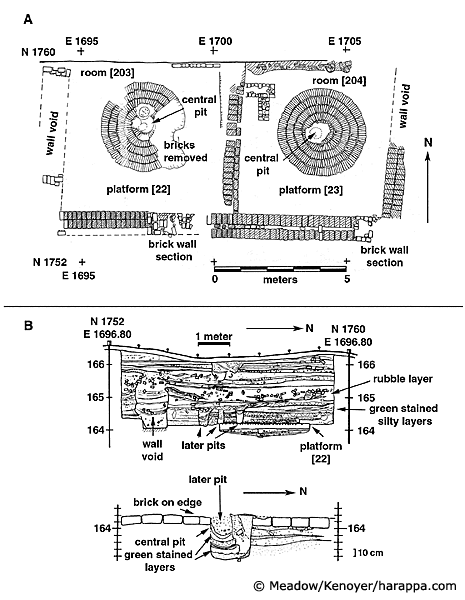
Figure 8. Harappa 1998, Mound F, Trench 43: A plan of circular platforms; B sections of sediments above platform [22] and section through central pit..
The new platform and the one discovered earlier by Wheeler were both situated inside nearly square rooms measuring approximately 5.5 m on a side (Figure 8). The walls of these rooms were originally made of baked brick built on top of mud-brick foundations. The brick walls were between 90 cm and 1 m wide and had been robbed down to the level of the mud-brick foundation, but the central parts of the room where the circular platforms were situated remained undisturbed by the brick robbers. Detailed documentation of the stratigraphy and features in the levels above the platforms revealed that the rooms continued to be used after the construction of the platform. The new excavations did not reveal any evidence for grain processing and there was no evidence for a wooden mortar in the center. Some straw impressions were found on the floor to the south of the circular platform, but microscopic examination by Dr. Steve Weber confirmed that these impressions were of straw and not of chaff or grain processing byproducts.
Additional areas adjacent to the newly discovered platform were opened up in 1998 through 2000 to investigate the nature of the Period 3C occupations and to locate the western perimeter wall of Mound F (Meadow, Kenoyer and Wright 1998; Meadow, Kenoyer and Wright 1999; Meadow, Kenoyer and Wright 2000).
Most of the baked-brick walls in this area have been robbed, but occupational deposits, including living surfaces and house floors, are intact. Numerous inscribed objects were discovered in 1999 including a spectacular seal with the unicorn motif and a long inscription in the Indus script. Measuring 5.2 x 5.2 centimeters square, this is one of the largest seals found at Harappa and is in almost perfect condition (Figure 4.3). Such seals would have been used by powerful officials, merchants or landowners to seal goods and documents. Many small inscribed and molded tablets have also been found in this area during the last two years of excavations. These tablets may have been used as credit tokens or amulets.
Mound E, Southwest
Excavations along the southwestern edge of Mound E were undertaken in 2000 to examine the earliest occupation of the Harappa phase (Period 3A) and to investigate specific craft activity areas. After surface scraping it was possible to discern numerous mud brick structures and lines of walls, pits and hearths. Removal of the final traces of gully erosion revealed a large complex of rectangular rooms made of mud brick, with small divider walls and intervening streets or alley ways. The baked brick walls built above these mud brick structures had been removed by the brick robbing. The houses in the lower area of excavation appear to belong to the initial phase of the Harappan period (3A) on the basis of painted pottery and specific vessel shapes that are similar to the Early Harappan pottery. Further up slope are the remains of structures dating to Period 3B and at the top of the slope are deposits of Harappan Period 3C. Some traces of Period 4/5 (Late Harappan) are found at the top of the mound and Late Harappan pottery is found in some of the erosional gully debris. The objectives of the excavations were to understand the nature of the earliest urban phase architecture, the pottery and other artifacts, specialized crafts and the use of seals and writing.
The erosional layers overlying the in situ structures contained many exquisite stone beads, terracotta beads and bangles, gold beads, some crucibles, touchstones, and other materials related to crafts such as bead making and shell working. The high concentration of these objects in this part of the site suggests that there may be a major craft area near by or in the levels to the east in the center of Mound E. A large number of faience molded tablets and incised steatite tablets were also recovered from the erosional layers in this part of the site, but no inscribed tablets or seals were found inside any of the rooms or in the associated street deposits of the Period 3A occupation layers.
During the final days of the 2000 excavation it was possible to sample one area of the slope that had large quantities of frothy vitreous slag mixed with bone and some steatite fragments. The excavations of this area revealed several distinct layers of "faience slag" with canisters and large quantities of complete and broken faience beads. Among the beads were also some faience inscribed tablets and vitrified faience wasters that indicate dump from a primary production area. This discovery of a faience workshop dump with both beads and molded faience tablets is extremely significant as it suggests that both types of objects were being made by the same craftspeople.
{Reprinted by permission from: Meadow, R.H. and J.M. Kenoyer (2001) Recent discoveries and highlights from excavations at Harappa: 1998-2000. INDO-KOKO-KENKYU [Indian Archaeological Studies] 22: 19-36.}
Excavations along the southwestern edge of Mound E were undertaken in 2000 to examine the earliest occupation of the Harappa phase (Period 3A) and to investigate specific craft activity areas. After surface scraping it was possible to discern numerous mud brick structures and lines of walls, pits and hearths. Removal of the final traces of gully erosion revealed a large complex of rectangular rooms made of mud brick, with small divider walls and intervening streets or alley ways. The baked brick walls built above these mud brick structures had been removed by the brick robbing. The houses in the lower area of excavation appear to belong to the initial phase of the Harappan period (3A) on the basis of painted pottery and specific vessel shapes that are similar to the Early Harappan pottery. Further up slope are the remains of structures dating to Period 3B and at the top of the slope are deposits of Harappan Period 3C. Some traces of Period 4/5 (Late Harappan) are found at the top of the mound and Late Harappan pottery is found in some of the erosional gully debris. The objectives of the excavations were to understand the nature of the earliest urban phase architecture, the pottery and other artifacts, specialized crafts and the use of seals and writing.
The erosional layers overlying the in situ structures contained many exquisite stone beads, terracotta beads and bangles, gold beads, some crucibles, touchstones, and other materials related to crafts such as bead making and shell working. The high concentration of these objects in this part of the site suggests that there may be a major craft area near by or in the levels to the east in the center of Mound E. A large number of faience molded tablets and incised steatite tablets were also recovered from the erosional layers in this part of the site, but no inscribed tablets or seals were found inside any of the rooms or in the associated street deposits of the Period 3A occupation layers.
During the final days of the 2000 excavation it was possible to sample one area of the slope that had large quantities of frothy vitreous slag mixed with bone and some steatite fragments. The excavations of this area revealed several distinct layers of "faience slag" with canisters and large quantities of complete and broken faience beads. Among the beads were also some faience inscribed tablets and vitrified faience wasters that indicate dump from a primary production area. This discovery of a faience workshop dump with both beads and molded faience tablets is extremely significant as it suggests that both types of objects were being made by the same craftspeople.
{Reprinted by permission from: Meadow, R.H. and J.M. Kenoyer (2001) Recent discoveries and highlights from excavations at Harappa: 1998-2000. INDO-KOKO-KENKYU [Indian Archaeological Studies] 22: 19-36.}
The erosional layers overlying the in situ structures contained many exquisite stone beads, terracotta beads and bangles, gold beads, some crucibles, touchstones, and other materials related to crafts such as bead making and shell working. The high concentration of these objects in this part of the site suggests that there may be a major craft area near by or in the levels to the east in the center of Mound E. A large number of faience molded tablets and incised steatite tablets were also recovered from the erosional layers in this part of the site, but no inscribed tablets or seals were found inside any of the rooms or in the associated street deposits of the Period 3A occupation layers.
During the final days of the 2000 excavation it was possible to sample one area of the slope that had large quantities of frothy vitreous slag mixed with bone and some steatite fragments. The excavations of this area revealed several distinct layers of "faience slag" with canisters and large quantities of complete and broken faience beads. Among the beads were also some faience inscribed tablets and vitrified faience wasters that indicate dump from a primary production area. This discovery of a faience workshop dump with both beads and molded faience tablets is extremely significant as it suggests that both types of objects were being made by the same craftspeople.
{Reprinted by permission from: Meadow, R.H. and J.M. Kenoyer (2001) Recent discoveries and highlights from excavations at Harappa: 1998-2000. INDO-KOKO-KENKYU [Indian Archaeological Studies] 22: 19-36.}
A monograph reconstructs two ancient Meluhha (Indian sprachbund, 'language union') expressions which signify wealth-accounting for a nation by merchant-/artisan-guilds of Sarasvati Civilization. Cognates of the word khār has two meanings: 1. blacksmith; 2. खर-अंशुः the sun. अंशुः is a synonym of Soma and is cognate with ancu.'iron' (Tocharian). The processing of Soma or अंशुः is the central, sacred metaphor of R̥gveda.
Etymology of Khar from Sanskrit "Svar", meaning Sun, which changes in northwestern Indian languages to "Khar". खर khara खर a. [opp. मृदु, श्लक्ष्ण, द्रव) 1 Hard, rough, solid-Comp. खर-अंशुः, -करः, -रश्मिः the sun (Apte). खर--मयूख = खरा* ंशु "hot-rayed" , the sun (धूर्तनर्तक)(Monier-Williams)
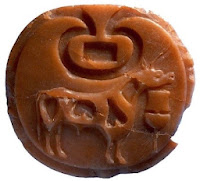
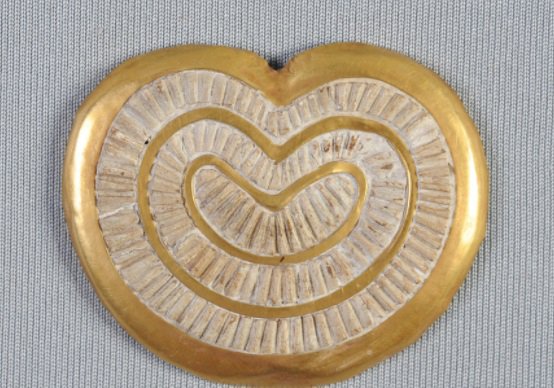 m1656 Pectoral. Gold Pendant. Harappa. National Museum, New Delhi
m1656 Pectoral. Gold Pendant. Harappa. National Museum, New DelhiSun's rays arka 'sun, rays of sun' rebus: arka 'copper, gold' eraka 'moltencast'.
Orthography of the young bull clearly shows sun’s rays on the belly of the bovine.
अंशु m. a filament (especially of the सोम plant); a kind of सोम libation (शतपथ-ब्राह्मण); a ray , sunbeam; end of a thread , a minute particle; a point, end (Monier-Williams); aṃśuḥ अंशुः [अंश्-मृग˚ कु.] 1 A ray, beam of light; चण्ड˚, घर्मं˚ hot-rayed the sun; सूर्यांशुभिर्भिन्नमिवारविन्दम् Ku.1.32; Iustre, brilliance चण्डांशुकिरणाभाश्च हाराः Rām.5.9.48; Śi.1.9. रत्न˚, नख˚ &c. -2 A point or end. -3 A small or minute particle. - 4 End of a thread. -5 A filament, especially of the Soma plant (Ved.) -6 Garment; decoration. -7 N. of a sage or of a prince. -8 Speed, velocity (वेग). -9 Fine thread -Comp. -उदकम् dew-water. -जालम् a collection of rays, a blaze or halo of light. -धरः -पतिः -भृत्-बाणः -भर्तृ-स्वामिन् the sun, (bearer or lord of rays). -पट्टम् a kind of silken cloth (अंशुना सूक्ष्मसूत्रेणयुक्तं पट्टम्); सश्रीफलैरंशुपट्टम् Y. 1.186; श्रीफलैरंशुपट्टानां Ms.5.12. -माला a garland of light, halo. -मालिन् m. [अंशवो मालेव, ततः अस्त्यर्थे इनि] 1 the sun (wreathed with, surrounded by, rays). -2 the number twelve. -हस्तः [अंशुः हस्त इव यस्य] the sun (who draws up water from the earth by means of his 1 hands in the form of rays)(Apte).
अंशुः, पुं, (अंशयति इति अंश विभाजने । मृग-ष्वादित्वात् कुः ।) किरणः ॥ प्रभा ॥ इति मेदि-नी ॥ वेशः ॥ इति धरणी ॥ सूत्रादिसूक्ष्मांशः ।इति हेमचन्द्रः ॥ लेशः ॥ सूर्य्यः ॥ इति विश्वः ॥(ऋषिविशेषः । लतावयवः । सोमलतावयवः ।भागः ।) https://sa.wikisource.org/wiki/शब्दकल्पद्रुमःअंशु पु० अंश--मृग० कु । किरणे सूत्रे सूक्ष्मांशे प्रकाशेप्रभायां वेगे च “अंशवोऽत्र पतिता रवेः किमु”? इत्युद्भटः“सूर्य्यांशुभिर्भिन्नमिवारविन्दमिति” कुमा० । तत्र स्वपर-प्रकाशकस्य तेजःपदार्थस्य समन्तात् प्रसृतः स्पर्शयोग्यःकिञ्चिन्निविडः सूक्ष्मांशविशेषः किरणः, स च प्रायशःसूर्य्यस्य, तस्य तेजसा प्रदीप्तचन्द्रादेश्च । तदपेक्षया अल्प-स्थानप्रसारी किञ्चिद्विरलः स्पर्शायोग्यः तेजःसूक्ष्मांशःप्रभा, सा च रत्नादिवस्तुनः । चन्द्रादेस्तु अन्यापेक्षयाऽधिक-प्रसृतत्वात् किरणसम्भवः अतएव तत्र शीतांशुः सितकिरणइत्यादिप्रयोगः । स्पर्शयोग्यः तेजःपदार्थस्य किरणादपिनिविडः सूक्ष्मांशः आतपः, किरणापेक्षया अतिविरल-प्रसारी स्पर्शायोग्यः परप्रकाशसाधनमतिसूक्ष्मांशविशेषःआलोकः । प्रभायाम् आलोके वा न र्शोऽनुभूयते ।तत्र अंशुशब्दस्य किरणवाचित्वे सहस्रांशुः उष्णांशुःशीतांशुरित्यादयः । प्रभापरत्वे रत्नांशुः नखांशुरित्या-दयः । अजस्रमाश्रावितवल्लकीगुणक्षतोज्ज्वलाङ्गुष्ठनखांशु-भिन्नयेति” “द्विजावलीबालनिशाकरांशुभिरिति” चमाघः । सूत्रांशपरत्वे अंशुकं पट्टांशुकं चीना-शुकमित्यादयः । प्रकाशपरत्वे उपांशु उपहृतप्रकाश-त्वाच्चास्य गुप्तत्वं प्रतीयते तच्चार्थिकम् । सूक्ष्मविभागपरत्वेप्रांशुः प्रोन्नतावयवत्वा च्चास्य दीर्घत्वं प्रतीयते तच्चा-र्थिकम् इति । https://sa.wikisource.org/wiki/वाचस्पत्यम्
![]() Sign 48 and variants One reading is barado 'spine' rebus: bharata 'alloy metal oc copper, pewter, tin'. It also signifies khār
Sign 48 and variants One reading is barado 'spine' rebus: bharata 'alloy metal oc copper, pewter, tin'. It also signifies khār खार् 'spine'. کار کنده kār-kunda ' 'manager, director, adroit, clever, experienced' (Pashto) kuṇḍa n. ʻ clump ʼ e.g. darbha-- kuṇḍa-- Pāṇ.(CDIAL 3236). kundār turner (A.)(CDIAL 3295). : kundār turner (A.); kũdār, kũdāri (B.); kundāru (Or.); kundau to turn on a lathe, to carve, to chase; kundau dhiri = a hewn stone; kundau murhut = a graven image (Santali) kunda a turner's lathe (Skt.)(CDIAL 3295) Vikalpa: kūdī, kūṭī 'bunch of twigs' (Skt.) Rebus: kuṭhi ‘smelter furnace’ (Santali) kō̃da कोँद । कुलालादिकन्दुः f. a kiln; a potter's kiln; blacksmith and engraver-lapidary setting or infixing gems. (Kashmiri) kundana ‘fine gold’ (Kannada). कुन्द [p= 291,2] one of कुबेर's nine treasures (N. of a गुह्यक Gal. ) L. کار کند kār-kund (corrup. of P کار کن ) adj. Adroit, clever, experienced. 2. A director, a manager; (Fem.) کار کنده kār-kundaʿh. (Pashto) P کار kār, s.m. (2nd) Business, action, affair, work, labor, profession, operation. Pl. کارونه kārūnah. (E.) کار آرموده .چار kār āzmūdah. adj. Experienced, practised, veteran. کار و بار kār-o-bār, s.m. (2nd) Business, affair. Pl. کار و بارونه kār-o-bārūnah. کار خانه kār- ḵẖānaʿh, s.f. (3rd) A manufactory, a dock- yard, an arsenal, a workshop. Pl. يْ ey. کاردیده kār-dīdah, adj. Experienced, tried, veteran. کار روائي kār-rawā-ī, s.f. (3rd) Carrying on a business, management, performance. Pl. ئِي aʿī. کار زار kār-zār, s.m. (2nd) Battle, conflict. Pl. کار زارونه kār-zārūnah. کار ساز kār-sāz, adj. Adroit, clever; (Fem.) کار سازه kār-sāzaʿh. کار ساري kār-sāzī, s.f. (3rd) Cleverness, adroitness. Pl. ئِي aʿī. کار کند kār-kund (corrup. of P کار کن ) adj. Adroit, clever, experienced. 2. A director, a manager; (Fem.) کار کنده kār-kundaʿh. کار کول kār kawul, verb trans. To work, to labor, to trade. په کار راتلل pah kār rā-tʿlal or راغلل rāg̠ẖ-lal, verb intrans. To be fit, to come into use, to be of use, to be proper or useful. په کار راوړل pah kār rā-wʿṟṟal, verb trans. To bring to use, to make use of, to expend. په کار دي pah kār daey, It is useful. په کار نه دي pah kār nah daey, It is useless. P کارستان kār-istān, s.m. (2nd) A place of work, a manufactory, an arsenal. Pl. کارستانونه kār-istānūnah.(Pashto) Khar or Khor is the Persian word Khordad, which means "Given by Sun". The Skt. expressions ˚सूदनः the sun. -मणिः the sun. -मध्यम् the central point of the sky, the zenith are cognate with khar 'sun'. खर m. a quadrangular mound of earth for receiving the sacrificial vessels (शतपथ-ब्राह्मण v , 1 , 2 , 15); (?) m. xiv (आश्वलायन-श्रौत-सूत्र, कात्यायन-श्रौत-सूत्र)
अंशु पु० अंश--मृग० कु । किरणे सूत्रे सूक्ष्मांशे प्रकाशेप्रभायां वेगे च “अंशवोऽत्र पतिता रवेः किमु”? इत्युद्भटः“सूर्य्यांशुभिर्भिन्नमिवारविन्दमिति” कुमा० । तत्र स्वपर-प्रकाशकस्य तेजःपदार्थस्य समन्तात् प्रसृतः स्पर्शयोग्यःकिञ्चिन्निविडः सूक्ष्मांशविशेषः किरणः, स च प्रायशःसूर्य्यस्य, तस्य तेजसा प्रदीप्तचन्द्रादेश्च । तदपेक्षया अल्प-स्थानप्रसारी किञ्चिद्विरलः स्पर्शायोग्यः तेजःसूक्ष्मांशःप्रभा, सा च रत्नादिवस्तुनः । चन्द्रादेस्तु अन्यापेक्षयाऽधिक-प्रसृतत्वात् किरणसम्भवः अतएव तत्र शीतांशुः सितकिरणइत्यादिप्रयोगः । स्पर्शयोग्यः तेजःपदार्थस्य किरणादपिनिविडः सूक्ष्मांशः आतपः, किरणापेक्षया अतिविरल-प्रसारी स्पर्शायोग्यः परप्रकाशसाधनमतिसूक्ष्मांशविशेषःआलोकः । प्रभायाम् आलोके वा न र्शोऽनुभूयते ।तत्र अंशुशब्दस्य किरणवाचित्वे सहस्रांशुः उष्णांशुःशीतांशुरित्यादयः । प्रभापरत्वे रत्नांशुः नखांशुरित्या-दयः । अजस्रमाश्रावितवल्लकीगुणक्षतोज्ज्वलाङ्गुष्ठनखांशु-भिन्नयेति” “द्विजावलीबालनिशाकरांशुभिरिति” चमाघः । सूत्रांशपरत्वे अंशुकं पट्टांशुकं चीना-शुकमित्यादयः । प्रकाशपरत्वे उपांशु उपहृतप्रकाश-त्वाच्चास्य गुप्तत्वं प्रतीयते तच्चार्थिकम् । सूक्ष्मविभागपरत्वेप्रांशुः प्रोन्नतावयवत्वा च्चास्य दीर्घत्वं प्रतीयते तच्चा-र्थिकम् इति । https://sa.wikisource.org/wiki/वाचस्पत्यम्
Hieroglyph: G. khũṭṛɔ m. ʻ entire bull used for agriculture but not for breeding ʼ, (Kathiawar) khũṭ m. ʻ Brahmani bull ʼ.(CDIAL 3899) Rebus: कारकुन kārakuna m ( P A factor, agent, or business-man.) A clerk, scribe, writer. सवा हात लेखणीचा का0 A term of ironical commendation for a clerk.
Hieroglyph 1: khāra 2Hieroglyph 2: खार khāra 'squirrel'; खारी khārī f (Usually खार) A squirrel. (Kashmiri)
Longest inscription m0314 of Indus Script Corpora is catalogue of a guild-master. The guild master is signified by Indus Script hypertext 'squirrel' hieroglyph 'khāra, šē̃ṣṭrĭ̄' Rebus: plaintext: khār 'blacksmith' śrēṣṭhin 'guild-master' (Aitareya Brāhmaṇa).
palm squirrel,Sciurus palmarum'
svar स्वर् ind. 1 Heaven, paradise; as in स्वर्लोक, स्वर्वेश्या, स्वर्भानुः, &c.; त्वं कर्मणां मङ्गलमङ्गलानां कर्तुः स्म लोकं तनुषे स्वः परं वा Bhāg.4.6.45. -2 The heaven of Indra and the temporary abode of the virtuous after death. -3 The sky, ether. -4 The space above the sun or between the sun and the polar star. -5 The third of the three Vyāhṛitis, pronounced by every Brāhmaṇa in his daily prayers; see व्याहृति. -6 Radiance, splendour. -7 Water. ind. (used in nom., acc., gen., or loc. case); स्वलंकृतैर्भ- वनवरैविभूषितां पुरंदरः स्वरिव यथामरावतीम् Rām.7.11.5; साधोरपि स्वः खलु गामिताधो गमी स तु स्वर्गमितः प्रयाणे N.6. 99 (herein abl. case, स्वर् = स्वर्गात्). -Comp. -अतिक्रमः reaching Vaikuṇṭha (beyond heaven). -आपगा, -गङ्गा 1 the celestial Ganges. -2 the galaxy or milky way. -इङ्गणः a strong wind. -गत a. dead. -गतिः f., -गमनम् 1 going to heaven, future felicity. -2 death. -गिरिः Sumeru. -जित् m. a kind of sacrifice; यजेत वाश्वमेधेन स्वर्जिता गोसवेन वा Ms.11.74. -तरुः (स्वस्तरुः) a tree of paradise. -दृश् m. 1 an epithet of Indra. -2 of Agni. -3 of Soma. -धुनी, -नदी (forming स्वर्णदी) the celestial Ganges; सद्यः पुनन्त्युपस्पृष्टाः स्वर्धुन्यापोनुसेवया Bhāg.1.1.15. -भानवः a kind of precious stone. -भानुः Name of Rāhu; तुल्ये$पराधे स्वर्भानुर्भानुमन्तं चिरेण यत् । हिमांशुमाशु ग्रसते तन्म्रदिम्नः स्फुटं फलम् Ś.i.2.49. ˚सूदनः the sun. -मणिः the sun. -मध्यम् the central point of the sky, the zenith. -यात a. dead. -यातृ a. dying. -यानम् dying, death. -योषित a celestial woman, apsaras. -लोकः the celestial world, heaven. -वधूः f. a celestial damsel, an apsaras. -वापी the Ganges. -वारवामभ्रू (see -वधू above); स्वर्वारवामभ्रुवः नृत्यं चक्रुः Cholachampū p.22, Verse 51. -वेश्या 'a courtezan of heaven', acelestial nymph, an apsaras. -वैद्य m. du. an epithet of the two Aśvins. -षा 1 an epithet of Soma. -2 of the thunderbolt of Indra. -सिन्धु = स्वर्गङ्गा q. v. (Apte)
sanskritdictionary.com/svar/35038/4
https://tinyurl.com/ycgtthuz
The most frequently used Indus Script hypertext expression in Indus Script corpora consists of three unique hieroglyph: 1. khār 'backbone'; 2. karṇaka, 'rim-of-jar' 3. kharaḍā, 'currycomb'.
This triplet of hieroglyphs in Indus Script hypertext signifies wealth-accounting ledger of blacksmith's metalwork products:
1. khār खार् 'blacksmith',
2. karṇī, scribe/supercargo (a representative of the ship's owner on board a merchant ship, responsible for overseeing the cargo and its sale), [Note: kul-- karṇī m. ʻ village accountant ʼ(Marathi)]
3. (scribed in) karaḍā खरडें 'daybook, wealth-accounting ledger of khār खार् 'blacksmith' (Kashmiri)
At the outset, it should be noted that many of these Indus Script expressions are unique to Harappa where tablets (inclduing sealings as tablets) are used to record works in process for subsequent compilation of shipment info. of metalwork catalogues on seals.
Decipherment of variants of the most-frequently used expression (shown on venn diagram) relate to yields from three types of furnaces: 1. smithy, 2. cast metal, 3. implements. The outputs from the furnaces are meant for 1. supercargo (consignments to be shipped by seafaring merchants, helmsmen) and 2. for further work by kharādī turners and for entry in daybook of the scribe: karaḍā खरडें 'daybook, wealth-accounting ledger'.
Seal published by Omananda Saraswati. In Pl. 275: Omananda Saraswati 1975. Ancient Seals of Haryana (in Hindi). Rohtak.
Harappa. Prism tablet. H94-2177/4999-01: Molded faience tablet, Period 3B/3C. Rebus reading:
Two 'ingot' hieroglyphs: dul ḍ̠aḇ 'cast ingot'
'Backbone' hieroglyph:karaṁḍa ʻbackboneʼ Rebus: karaḍa 'hard alloy'
'crocodile' hieroglyph: kāru 'crocodile' (Telugu) Rebus: kāruvu 'artisan' (Telugu) khār 'blacksmith' (Kashmiri)
'two' hieroglyph + 'rimless pot' hieroglyph: dula 'two' Rebus: dul 'cast metal' + baTa 'rimless pot' Rebus: baTa 'furnace'. Thus metal-casting furnace.
Rebus reading of incised Kalibangan potsherd: ayo 'fish' Rebus: aya 'iron, metal' PLUS karaṁḍa ʻbackboneʼ Rebus: karaḍa 'hard alloy' PLUS kanka, karṇaka ‘rim of jar’ Rebus: karṇaka ‘accountscribe’.
kārṇī m. ʻsuper cargo of a ship ʼ(Marathi)
Incised potsherd from Kalibangan. The overriding of the signs shows that the direction of writing was from right to left.
Map showing Khao Sam Kaeo on the east coast and the complex of Phu Khao Thong/Bang Kluai Nok on the west coast [Drawing by the Thai-French archaeological mission].in: "The development of coastal polities in the Upper Thai-Malay Peninsula" by Berenice Bellina et al (2014) in: Before Siam: Essays in Art and Archaeology. (pp. 69-89). River Books http://discovery.ucl.ac.
Apart from etched beads which echo Sarasvati Civilization lapidary work, there are 1) ornaments found in Khao Sam Kaeo which signify Indus Script hieroglyphs and 2) potsherd with Indus Script epigraph found in Phu Khao Thong. Indus Script hieroglyphs on the Khao Sam Kaeo ornaments are:
 The Phu Khao Thong potsherd inscription has hieroglyphs which read rebus: karaṇḍa'backbone' rebus: karaḍa 'hard alloy' PLUS mũhe 'ingot' (Santali) mũhã̄ = the quantity of iron produced at one time in a native smelting furnace of the Kolhes; iron produced by the Kolhes and formed like a four-cornered piece a little pointed at each end. Thus the inscription reads: karaḍa mũhe 'hard metal alloy ingot'.
The Phu Khao Thong potsherd inscription has hieroglyphs which read rebus: karaṇḍa'backbone' rebus: karaḍa 'hard alloy' PLUS mũhe 'ingot' (Santali) mũhã̄ = the quantity of iron produced at one time in a native smelting furnace of the Kolhes; iron produced by the Kolhes and formed like a four-cornered piece a little pointed at each end. Thus the inscription reads: karaḍa mũhe 'hard metal alloy ingot'.Slide 33. Early Harappan zebu figurine with incised spots from Harappa.
Decipherment of the Harappa figurine on Slide 33:
पोळ [pōḷa], 'zebu' Rebus: magnetite, citizen.(See: http://bharatkalyan97.blogspot.in/2015/08/zebu-archaeometallurgy-legacy-of-india.html )
mūhā mẽṛhẽt = iron smelted by the Kolhes and formed into an equilateral lump a little pointed at each of four ends (Santali)
खोट (p. 212) [ khōṭa ] f A mass of metal (unwrought or of old metal melted down); an ingot or wedge. (Marathi)
The figurine signifies ingots of पोळ [pōḷa], ‘magnetite’. This is a metalwork catalogue message in Indus Script Corpora.
पोळ [pōḷa], 'zebu' Rebus: magnetite, citizen.(See: http://bharatkalyan97.blogspot.in/2015/08/zebu-archaeometallurgy-legacy-of-india.html )
mūhā mẽṛhẽt = iron smelted by the Kolhes and formed into an equilateral lump a little pointed at each of four ends (Santali)
खोट (p. 212) [ khōṭa ] f A mass of metal (unwrought or of old metal melted down); an ingot or wedge. (Marathi)
The figurine signifies ingots of पोळ [pōḷa], ‘magnetite’. This is a metalwork catalogue message in Indus Script Corpora.
Hieroglyph: sãgaḍ, 'lathe' Rebus: sãgaṛh , 'fortification' Rebus: jangad 'invoicing on approval basis'
Hieroglyph: kõdā 'young bull calf' Rebus: kõdā 'turner-joiner' (forge);kundana 'fine gold'
eraka 'nave of wheel' Rebus: eraka 'molten cast, copper' arā 'spokes' rebus: āra 'brass'
sal 'splinter' Rebus: sal 'workshop'
karaṇḍa 'backbone' rebus: karaḍa 'hard alloy'
aḍar 'harrow' Rebus: aduru 'native metal'
bhaṭa 'warrior' Rebus: bhaṭa 'furnace'
karṇaka, 'rim of jar' Rebus: karṇī 'supercargo, scribe'.
This high-frequency of the expression is highlighted by the venn diagram presented by Nisha Yadav using a limited set of 235 Harappa tablets from the Corpora (Mahadevan concordance):
Yadav, Nisha, 2013, Sensitivity of Indus Script to type of object, SCRIPTA, Vol. 5 (Sept. 2013), pp. 67-103
From r. to l.:
1. Hieroglyph: khāra 2 खार 'backbone, spine' rebus: khār खार् । 'blacksmith'
2. Hieroglyph: karṇīka, kanka 'rim of jar' rebus: kaṇḍa kanka 'smelting furnace account (scribe), karṇī, supercargo'
3. khareḍo 'a currycomb (Gujarati) Rebus: karaḍā खरडें 'daybook, wealth-accounting ledger'. Rebus: kharādī ' turner' (Gujarati)
Thus, the Indus Script hypertext signifies: 1. blacksmith, 2. supercargo (a representative of the ship's owner on board a merchant ship, responsible for overseeing the cargo and its sale.), 3. wealth-accounting ledger
Onager shown on Standard of Ur (2600 BCE) is also shown on Indus Script inscriptions. An example is the seal from Mohenjo-daro (m290)(ca. 2500 BCE) which is a documentation of metalwork wealth by smelters' guild.
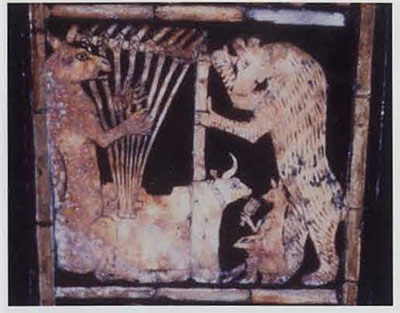
DETAIL FROM THE PANEL ON THE BULL-HEADED LYRE showing an 8-stringed bovine lyre being played. At the top of the lyre, braided material is wrapped around the crossbar under the tuning sticks. The small fox-like animal facing the front of the lyre holds a sistrum, or rattle. UPM 817694. Detail of neg. 735-110
The Indus Script hypertext message of the narrative on the Ur lyre: pōḷa, 'zebu' rebus: pōḷa 'magnetite, ferrite ore' PLUS khōṇḍa 'young bull' rebus: kundaṇa 'fine gold' PLUS kolhā, 'jackal' rebus: kolhe 'iron smelter' PLUS tambur 'harp' rebus: tambra 'copper' PLUS khara 'onager' rebus: khār खार् 'blacksmith'.
Rebus: karaḍā खरडें 'daybook, wealth-accounting ledger'. Thus, the message is: daybook (wealth-accounting ledger) of blacksmith working with iron smelter, copper, gold, magnetite ore.
Hieroglyph: पोळ pōḷa, 'Zebu, bos indicus' Rebus: पोळ pōḷa, 'magnetite, ferrite ore' खोंड [ khōṇḍa ] m A young bull, a bullcalf. Rebus: kõdā 'to turn in a lathe' (B.) कोंद kōnda. 'engraver, lapidary setting or infixing gems' (Marathi) कोंडण [
Hieroglyph: jackal: kolhā: krōṣṭŕ̊ ʻ crying ʼ BhP., m. ʻ jackal ʼ RV. = krṓṣṭu -- m. Pāṇ. [√kruś ]Pa. koṭṭhu -- , °uka -- and kotthu -- , °uka -- m. ʻ jackal ʼ, Pk. koṭṭhu -- m.; Si. koṭa ʻ jackal ʼ, koṭiya ʻ leopard ʼ GS 42; -- Pk. kolhuya -- , kulha -- m. ʻ jackal ʼ < *kōḍhu -- ; H. kolhā, °lā m. ʻ jackal ʼ, adj. ʻ crafty ʼ; G. kohlũ, °lũ n. ʻ jackal ʼ, M. kolhā, °lā m.(CDIAL 3615) Rebus: kol 'working in iron'; kolle 'blacksmith'; kolhe 'smelter'
Hieroglyph: tambura 'harp/lyre' rebus: tambra 'copper'
Hieroglyph: khara1 m. ʻ donkey ʼ KātyŚr., °rī -- f. Pāṇ.NiDoc. Pk. khara -- m., Gy. pal. ḳăr m., kắri f., arm. xari, eur. gr. kher, kfer, rum. xerú, Kt. kur, Pr. korūˊ, Dm. khar m., °ri f., Tir. kh*l r, Paš. lauṛ. khar m., khär f., Kal. urt. khār, Phal. khār m., khári f., K. khar m., khürü f., pog. kash. ḍoḍ. khar, S. kharu m., P. G. M. khar m., OM. khari f.; -- ext. Ash. kərəṭék, Shum. xareṭá; <-> L. kharkā m., °kī f. -- Kho. khairánu ʻ donkey's foal ʼ (+?).*kharapāla -- ; -- *kharabhaka -- . Addenda: khara -- 1 : Bshk. Kt. kur ʻ donkey ʼ (for loss of aspiration Morgenstierne ID 334).(CDIAL 3818) Rebus: khār खार् । 'blacksmith' (Kashmiri)
Rebus: karaḍā खरडें 'daybook, wealth-accounting ledger'.
Thus, the symbolic ensemble is a documentation of metalwork in Indus Script Cipher.
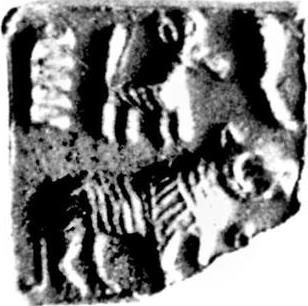 m290 Mohenjo-daro seal. Decipherment: kola 'tiger' Rebus; kolle 'blacksmith' kol 'working in iron' kole.l 'smithy, temple' kolimi 'smithy, forge' PLUS pattar 'trough' Rebus: pattar 'guild of goldsmiths'. panja 'feline paw' rebus: panja 'kiln, furnace'
m290 Mohenjo-daro seal. Decipherment: kola 'tiger' Rebus; kolle 'blacksmith' kol 'working in iron' kole.l 'smithy, temple' kolimi 'smithy, forge' PLUS pattar 'trough' Rebus: pattar 'guild of goldsmiths'. panja 'feline paw' rebus: panja 'kiln, furnace'khar 'ass, onager' (Kashmiri) rebus: khār खार् 'blacksmith' khāra-- basta f. ʻ blacksmith's skin bellows ʼ (Kashmiri)(CDIAL 9424)
kharkhara खर््खर । अश्वादिकण्डूयनयन्त्रम् m. a curry-comb (K.Pr. 15). -- karun -- करुन् । अश्वादिकण्डूयनकरणम् m.inf. to use a curry-comb, to curry (a horse), to groom (a horse).(Kashmiri) kharedo = a currycomb (Gujarati) rebus: kharādī ‘ turner’ (Gujarati) Rebus: daybook: karaḍā m The arrangement of bars or embossed lines (plain or fretted with little knobs) raised upon a तार of gold by pressing and driving it upon the ... 4 also खरडें n A rude sketch; a rough draught; a foul copy; a waste-book; a day-खार् 'blacksmith' (Kashmiri)
Hieroglyph: khāra 2 खार (= खार् (L.V. 96, K.Pr. 47, Śiv. 827) । द्वेषः m. (for 1, see khār 1 ), a thorn, prickle, spine (K.Pr. 47; Śiv. 827, 153)(Kashmiri) Pk. karaṁḍa -- m.n. ʻ bone shaped like a bamboo ʼ, karaṁḍuya -- n. ʻ backbone ʼ.*kaṇṭa3 ʻ backbone, podex, penis ʼ. 2. *kaṇḍa -- . 3. *karaṇḍa -- 4 . (Cf. *kāṭa -- 2 , *ḍākka -- 2 : poss. same as káṇṭa -- 1 ]1. Pa. piṭṭhi -- kaṇṭaka -- m. ʻ bone of the spine ʼ; Gy. eur. kanro m. ʻ penis ʼ (or < káṇṭaka -- ); Tir. mar -- kaṇḍḗ ʻ back (of the body) ʼ; S. kaṇḍo m. ʻ back ʼ, L. kaṇḍ f., kaṇḍā m. ʻ backbone ʼ, awāṇ. kaṇḍ, °ḍī ʻ back ʼ; P. kaṇḍ f. ʻ back, pubes ʼ; WPah. bhal. kaṇṭ f. ʻ syphilis ʼ; N. kaṇḍo ʻ buttock, rump, anus ʼ, kaṇḍeulo ʻ small of the back ʼ; B. kã̄ṭ ʻ clitoris ʼ; Or. kaṇṭi ʻ handle of a plough ʼ; H. kã̄ṭā m. ʻ spine ʼ, G. kã̄ṭɔ m., M. kã̄ṭā m.; Si. äṭa -- kaṭuva ʻ bone ʼ, piṭa -- k° ʻ backbone ʼ.2. Pk. kaṁḍa -- m. ʻ backbone ʼ.(CDIAL 2670) కరాళము karāḷamu karāḷamu. [Skt.] n. The backbone. వెన్నెముక (Telugu)
खार् । लोहकारः m. (sg. abl. khāra 1 खार ; the pl. dat. of this word is khāran 1 खारन् , which is to be distinguished from khāran 2, q.v., s.v.), a blacksmith, an iron worker (cf. bandūka-khār, p. 111b, l. 46; K.Pr. 46; H. xi, 17); a farrier (El.). This word is often a part of a name, and in such case comes at the end (W. 118) as in Wahab khār, Wahab the smith (H. ii, 12; vi, 17). khāra-basta खार -बस््त । चर्मप्रसेविका f. the skin bellows of a blacksmith. -büṭhü -ब&above;ठू&below; । लोहकारभित्तिः f. the wall of a blacksmith's furnace or hearth. -bāy-बाय् । लोहकारपत्नी f. a blacksmith's wife (Gr.Gr. 34). -dŏkuru । लोहकारायोघनः m. a blacksmith's hammer, a sledge-hammer.; । लोहकारचुल्लिः f. a blacksmith's furnace or hearth. -hāl -हाल् । लोहकारकन्दुः f. , a blacksmith's smelting furnace; cf. hāl । लोहकारकन्या f. a blacksmith's daughter. । लोहकारपुत्रः m. the son of a blacksmith, esp. a skilful son, who can work at the same profession. । लोहकारकन्या f. a blacksmith's daughter, esp. one who has the virtues and qualities properly belonging to her father's profession or caste. -më˘ʦü 1 -म्य&above;च&dotbelow;ू&below; । लोहकारमृत्तिका f. (for 2, see [khāra 3] ), 'blacksmith's earth,' i.e. iron-ore.; । लोहकारात्मजः m. a blacksmith's son. -nay -नय् । लोहकारनालिका f. (for khāranay 2, see [khārun] ), the trough into which the blacksmith allows melted iron to flow after smelting. -ʦañĕ -च्&dotbelow;ञ । लोहकारशान्ताङ्गाराः f.pl. charcoal used by blacksmiths in their furnaces. -wān वान् । लोहकारापणः m. a blacksmith's shop, a forge, smithy (K.Pr. 3). -waṭh -वठ् । आघाताधारशिला m. (sg. dat. -waṭas -वटि ), the large stone used by a blacksmith as an anvil. (Kashmiri)Rebus: khara 'sharp-edged' Kannada); pure, unalloyed (Kashmiri) khára2 ʻ hard, sharp, pungent ʼ MBh., ʻ solid ʼ Pān., ʻ hot (of wind) ʼ Suśr. [Cf. karkara -- 1 , karkaśá -- , kakkhaṭa -- ]Pa. Pk. khara -- ʻ hard, rough, cruel, sharp ʼ; K. khoru ʻ pure, genuine ʼ, S. kharo, L. P. kharā (P. also ʻ good of weather ʼ); WPah. bhad. kharo ʻ good ʼ, paṅ. cur. cam. kharā ʻ good, clean ʼ; Ku. kharo ʻ honest ʼ; N. kharo ʻ real, keen ʼ; A. khar ʻ quick, nimble ʼ, m. ʻ dry weather ʼ, kharā ʻ dry, infertile ʼ, khariba ʻ to become dry ʼ; B. kharā ʻ hot, dry ʼ, vb. ʻ to overparch ʼ; Or. kharā ʻ sunshine ʼ; OAw. khara ʻ sharp, notched ʼ; H. kharā ʻ sharp, pure, good ʼ; G. khar ʻ sharp, hot ʼ, °rũ ʻ real, good, well parched or baked, well learnt ʼ; M. khar ʻ sharp, biting, thick (of consistency) ʼ, °rā ʻ pure, good, firm ʼ; Ko. kharo ʻ true ʼ; Si. kara -- räs ʻ hot -- rayed, i.e. sun ʼ. -- Ext. Pk. kharaḍia -- ʻ rough ʼ; Or. kharaṛā ʻ slightly parched ʼ. <-> X kṣārá -- 1 : Or. khārā ʻ very sharp, pure, true ʼ. <-> X paruṣá -- 1 : Bshk. khärúṣ ʻ rough, rugged ʼ; Si. karahu ʻ hard ʼ.
kharapattrā -- , kharayaṣṭikā -- , *kharasrōtas -- .Addenda: khara -- 2 : WPah.kṭg. (kc.) khɔ́rɔ ʻ great, good, excessive ʼ; J. kharā ʻ good, well ʼ; OMarw. kharaü ʻ extreme ʼ.(CDIAL 3819)
Rebus: karaḍā खरडें 'daybook, wealth-accounting ledger'.
Rebus: Ta. karaṭu roughness, unevenness, churlish temper; karaṭṭu rugged, uneven, unpolished; karaṇ uneven surface in vegetables and fruits, scar; karu prong, barb, spike; karumai, karil severity, cruelty; karukkuteeth of a saw or sickle, jagged edge of palmyra leaf-stalk, sharpness. Ma. karaṭu what is rough or uneven; kaṟu rough; kaṟuppu roughness; karuma sharpness of sword; karukku teeth of a saw or file, thorns of a palmyra branch, irregular surface; karukarukka to be harsh, sharp, rough, irritating; karikku edge of teeth; kari-muḷ hard thorn; projecting parts of the skin of custard-apples, jack-fruits, etc.; kari-maṭal rind of jack-fruits. Ko. karp keenness or harshness (of wind); ? kako·ṭ hoe with sharp, broad blade (for -ko·ṭ, see 2064). Ka. karaḍu that is rough, uneven, unpolished, hard, or waste, useless, or wicked; kaṟaku, karku, kakku, gaṟaku, garaku, garku, garasu a jag, notch, dent, toothed part of a file or saw, rough part of a millstone, irregular surface, sharpness. Tu. karaḍů, karaḍu rough, coarse, worn out; wastage, loss, wear; kargōṭa hardness, hard-heartedness; hard, hard-hearted; garu rough; garime severity, strictness; gargāsů a saw. Te. kara sharp; karagasamu a saw; karakasa roughness; karusu rough, harsh; harsh words; kaṟaku, kaṟuku harshness, roughness, sharpness; rough, harsh, sharp; gari hardness, stiffness, sharpness; (B.) karaṭi stubborn, brutish, villainous; kakku a notch or dent, toothed part of a saw, file, or sickle, roughness of a millstone. Go. (Ma.) karkara sharp (Voc. 543). Kur. karcnā to be tough, (Hahn) be hardened. ? Cf. 1260 Ka. garasu. / Cf. Skt. karaṭa- a low, unruly, difficult person; karkara- hard, firm; karkaśa- rough, harsh, hard; krakaca-, karapattra-saw; khara- hard, harsh, rough, sharp-edged; kharu- harsh, cruel; Pali kakaca- saw; khara- rough; saw; Pkt. karakaya- saw; Apabhraṃśa (Jasaharacariu) karaḍa- hard. Cf. esp. Turner, CDIAL, no. 2819. Cf. also Skt. karavāla- sword (for second element, cf. 5376 Ta. vāḷ).(DEDR 1265)

Faience tablet (H2001-5082/2920-02) made from two colors of faience was found eroding from the Trench 54 South workshop area. Identical tablets made from two colors of faience were recovered in Area J, at the south end of Mound AB, in the excavations of Vats during the 1930s. gaNDa 'four' rebus: khaNDa 'implements' baṭa 'rimless pot' rebus: bhaṭa 'furnace' PLUS ayo 'fish' rebus: aya 'iron' ayas 'metal'.
4305 Pict-90: Standing person with horns and bovine features holding a staff or mace on his shoulder. Hieroglyph: ḍhangar 'bull' Rebus: dhangar 'blacksmith' (Maithili) damgar, tamkāru 'merchant' (
bhaṭa 'warrior' Rebus: bhaṭa 'furnace' sal 'splinter' rebus: sal 'workshop' PLUS karṇīka, kanka 'rim of jar' rebus: kaṇḍa kanka 'smelting furnace account (scribe), karṇī, supercargo' Thus, the three-sided Harappa tablet signifies blacksmith, merchant, supercargo (handling products from) furnace workshop.
 Stone seal. h179. National Museum, India. Carved seal. Scan 27418 Tongues of flame decorate the flaming pillar, further signified by two 'star' hieroglyphs on either side of the bottom of the flaming arch.
Stone seal. h179. National Museum, India. Carved seal. Scan 27418 Tongues of flame decorate the flaming pillar, further signified by two 'star' hieroglyphs on either side of the bottom of the flaming arch.Front
khār 'blacksmith' emerges out of the tree or flaming pillar (skambha) identified by the 'star' hieroglyph'. The wristlets he wears and headdress signify that he is khār working with kuṭhi 'tree' Rebus: kuṭhi 'smelting furnace'. He is a smith engaged in smelting.
Hieroglyph:मेढा [ mēḍhā ] 'polar star' Rebus: mẽṛhẽt, meḍ 'iron' (Santali.Mu.Ho.) dula'two' rebus: dul 'metal casting' Thus, signifying a cast iron smelter.
![]() Santali glosses.
Santali glosses.
Hieroglyph: karã̄ n. pl. wristlets, bangles' rebus: khār 'blacksmith'
Hieroglyph: head-dress: kūdī, kūṭī bunch of twigs (Sanskrit) kuṭhi 'tree' Rebus: kuṭhi 'smelting furnace' (Santali) (Phonetic determinative of skambha, 'flaming pillar', rebus:kammaTa 'mint, coiner, coinage'). Skambha, flamiung pillar is the enquiry in Atharva veda Skambha Sukta (AV X.7,8)
Hieroglyph:मेढा [ mēḍhā ] 'polar star' Rebus: mẽṛhẽt, meḍ 'iron' (Santali.Mu.Ho.) dula'two' rebus: dul 'metal casting' Thus, signifying a cast iron smelter.
 Santali glosses.
Santali glosses.Hieroglyph: karã̄ n. pl. wristlets, bangles' rebus: khār 'blacksmith'
Hieroglyph: head-dress: kūdī, kūṭī bunch of twigs (Sanskrit) kuṭhi 'tree' Rebus: kuṭhi 'smelting furnace' (Santali) (Phonetic determinative of skambha, 'flaming pillar', rebus:kammaTa 'mint, coiner, coinage'). Skambha, flamiung pillar is the enquiry in Atharva veda Skambha Sukta (AV X.7,8)
Huntington Archive Scan 27419.
 |
|
Hieroglyphs: backbone + four short strokes
Signs 47, 48: Four ribs of backbone: gaṇḍa ‘four’ Rebus: kaṇḍ ‘fire-altar’. Pk. karaṁḍa -- m.n. ʻbone shaped like a bambooʼ, karaṁḍuya -- n. ʻ backbone ʼ.( (CDIAL 2670) rebus: karaḍa 'hard alloy'. Alternative: baraḍo = spine; backbone (Tulu) Rebus: baran, bharat ‘mixed alloys’ (5 copper, 4 zinc and 1 tin) (Punjabi) + rebus: bharat kaṇḍ ‘fire-altar’, furnace for mixed alloy called bharat(copper, zinc, tin alloy).
bhāthī m. ʻ warrior ʼ bhaṭa 'warrior' Rebus: bhaTa 'furnace', thus reinforcing the smelting process in the fire-altars. Smelters might have used bhaThi 'bellows'. bhástrā f. ʻ leathern bag ʼ ŚBr., ʻ bellows ʼ Kāv., bhastrikā -- f. ʻ little bag ʼ Daś. [Despite EWA ii 489, not from a √bhas ʻ blow ʼ (existence of which is very doubtful). -- Basic meaning is ʻ skin bag ʼ (cf. bakura <-> ʻ bellows ʼ ~ bākurá -- dŕ̊ti -- ʻ goat's skin ʼ), der. from bastá -- m. ʻ goat ʼ RV. (cf.bastājina -- n. ʻ goat's skin ʼ MaitrS. = bāstaṁ carma Mn.); with bh -- (and unexpl. -- st -- ) in Pa. bhasta -- m. ʻ goat ʼ, bhastacamma -- n. ʻ goat's skin ʼ. Phonet. Pa. and all NIA. (except S. with a) may be < *bhāsta -- , cf. bāsta -- above (J. C. W.)]With unexpl. retention of -- st -- : Pa. bhastā -- f. ʻ bellows ʼ (cf. vāta -- puṇṇa -- bhasta -- camma -- n. ʻ goat's skin full ofwind ʼ), biḷāra -- bhastā -- f. ʻ catskin bag ʼ, bhasta -- n. ʻ leather sack (for flour) ʼ; K. khāra -- basta f. ʻ blacksmith's skin bellows ʼ; -- S. bathī f. ʻ quiver ʼ (< *bhathī); A. Or. bhāti ʻ bellows ʼ, Bi. bhāthī, (S of Ganges) bhã̄thī; OAw. bhāthā̆ ʻ quiver ʼ; H. bhāthā m. ʻ quiver ʼ, bhāthī f. ʻ bellows ʼ; G. bhāthɔ,bhātɔ, bhāthṛɔ m. ʻ quiver ʼ (whence bhāthī m. ʻ warrior ʼ); M. bhātā m. ʻ leathern bag, bellows, quiver ʼ, bhātaḍ n. ʻ bellows, quiver ʼ; <-> (X bhráṣṭra -- ?) N. bhã̄ṭi ʻ bellows ʼ, H. bhāṭhī f.Addenda: bhástrā -- : OA. bhāthi ʻ bellows ʼ .(CDIAL 9424) bhráṣṭra n. ʻ frying pan, gridiron ʼ MaitrS. [√bhrajj ]
Pk. bhaṭṭha -- m.n. ʻ gridiron ʼ; K. büṭh
kanda kanka 'rim of jar' (Santali) Rebus: kanda kanka 'fire-trench account, karṇi supercargo' karṇīka 'helmsman, merchantman, scribe, account'.

Harappa tablets showing a pair of 'ingots' flanking 'backbone' hieroglyph
dula 'pair' rebus: dul 'metal casting' PLUS hieroglyph: oval (lozenge) shape:
mũhe 'ingot' (Santali) mũhã̄ = the quantity of iron produced at one time in a native smelting furnace of the Kolhes; iron produced by the Kolhes and formed like a four-cornered piece a little pointed at each end; mūhā mẽṛhẽt = iron smelted by the Kolhes and formed into an equilateral lump a little pointed at each of four ends;kolhe tehen mẽṛhẽt ko mūhā akata = the Kolhes have to-day produced pig iron (Santali). Thus, the message of the Indus Script hypertext with three hieroglyphs is: cast metal ingot of karaḍa 'hard alloy'. करडा [karaḍā] Hard from alloy--iron, silver &c. (Marathi) kharādī ' turner, a person who fashions or shapes objects on a lathe' (Gujarati)
Alternative reading of ingot: ḍhālako = a large metal ingot (G.) ḍhālakī = a metal heated and poured into a mould; a solid piece of metal; an ingot (Gujarati).

Persian gulf seal. mr̤eka, melh 'goat' rebus: milakkhu, mleccha-mukha 'copper' eraka 'raisedhand' rebus: eraka 'moltencast, copper'
karaḍū or ṅkaraḍēṃ ] n A kid. कराडूं (p. 137) [ karāḍūṃ ] n (Commonly करडूं ) A kid. (Marathi) Rebus: करडा (p. 137) [ karaḍā ] 'hard alloy' PLUS dula 'two' rebus: dul 'metal casting'. Thus copper metal casters.
Annex
Baba Mishra, Pradeep Mohanty, and PK Mohanty, 2003, Headless contour in the art tradition of Orissa, in: Bulletin of the Deccan College Post-Graduate and Research InstituteVol. 62/63, PROFESSOR ASHOK R. KELKAR FELICITATION VOLUME (2002-2003), pp. 311-321
https://www.jstor.org/stable/42930626 (Copy embedded, annexed in 11 pages)
See: https://tinyurl.com/yx96ghna Đinh Hồng Hải, 2016, THẦN LỰC NỮ TÍNH (SHAKTI) QUA BIỂU TƯỢNG NỮ THẦN LAJJA GAURI TRONG VĂN HÓA ẤN ĐỘ VÀ BÀ ĐANH TRONG VĂN HÓA VIỆT NAM(Nguồn: Nữ giới Phật giáo Việt Nam: Truyền thống và hiện đại, Nxb. ĐHQGTpHCM 2016. ISBN: 978-604-73-4116-0)
Google tranalation of the monograph in Vietnamese is presented below:
Google tranalation of the monograph in Vietnamese is presented below:
Strengthening of (Shakti) through the female symbol Lajja Gauri in Indian Culture and Buddha in Vietnamese Culture
(Source: Vietnamese Buddhist Women: Tradition and modernity, Publisher 2016. HCM: ISBN: 978-604-73-4116-0)
Dinh Hong Hai
Introduction
In the process of cultural interference with major civilizations such as China, India and the West, Vietnamese culture has absorbed many valuable cultural elements from external civilizations to enrich. More for your culture. However, there are also important cultural elements in external civilizations but cannot penetrate into Vietnamese culture. Or if they exist in Vietnamese culture, they must transform to match the indigenous values of Vietnamese people. There are even elements that have existed for centuries in Dai Viet / Vietnam culture but have been ruined because of ideological ideologies. The symbol of Lajja Gauri in Indian culture and the process Entering and surviving in Dai Viet / Vietnam culture is a typical example of the above-mentioned cultural exchange process. This study will address one of the universal phenomena that exists in all cultures, which is the role of women in society and in religion through a study that matches the Lajja Gauri symbol in literature. Indian culture and Ba Danh symbol in Vietnamese culture.
1. Feminine power (shakti) in Indian culture
When referring to the role of women in societies with strong Confucian influences such as China or Vietnam, we often hear about the merit-content-virtue as a solid symbolic system. symbol of traditional woman. In modern society (after the feudal period and before the "renovation" period - 1986), this value system is replaced by the phrase "good at water and housework." Easy to see, here , women are honored and appreciated for their social role, while their religious roles are almost overshadowed by men's dominance. Since the "opening" period up to now, the role of women in society has been much more important to the strong impact of western culture, especially the notions of gender equality. However, the role of women in religion, until now, remains virtually unchanged.[1]
Contrary to Confucian societies in China or Vietnam, the role of women in India is expressed in a very specific and clear way by a symbolized form of power called divine power. feminine (Hindu language called shakti). “Shakti is a concept in Hinduism that refers to the divine energy of the gods, or the fundamental energy of the universe, used to destroy the magic power and restore the balance of power in the universe. Most cases of shakti are represented through the embodiment of the goddesses, representing the power of creation and prosperity. However, each male god needs his own shakti depending on a goddess - his consort. If shakti energy is lost, a male god considered losing power. ”Thus, feminine divine power can be considered a form of supernatural power that nature has given to gods through goddesses
Contrary to Confucian societies in China or Vietnam, the role of women in India is expressed in a very specific and clear way by a symbolized form of power called divine power. feminine (Hindu language called shakti). “Shakti is a concept in Hinduism that refers to the divine energy of the gods, or the fundamental energy of the universe, used to destroy the magic power and restore the balance of power in the universe. Most cases of shakti are represented through the embodiment of the goddesses, representing the power of creation and prosperity. However, each male god needs his own shakti depending on a goddess - his consort. If shakti energy is lost, a male god considered losing power. ”Thus, feminine divine power can be considered a form of supernatural power that nature has given to gods through goddesses..[2]
In Indian culture, feminine divine power exists in most important gods such as Lakshmi, Sarawati, Parvati, Durga, etc. The origin of feminine divine power originates in the prehistoric times of India. The earliest statue of the goddess unearthed in India near Allahabad in the C14 Carbon dating is about 20,000 years BC ... Thousands of goddess statues dating back to 5500 BC have been unearthed at Mehrgarh, one of the most important archaeological sites in the new archaeological world of the Stone Age. This is also the precursor to the great civilizations of the Indus Valley Civilization (the Indus Valley Civilization), which further affirms the long-standing existence of the goddess worship in India. In Indian culture, feminine goddesses are called Amman (meaning "mother"). Thus, it can be seen that what is expressed through the divine feminine force in Indian culture has many similarities with "mother's principle - Vietnamese cultural origin" (used by Prof. Tran Quoc Vuong) in Indigenous beliefs of Vietnamese people. This is the reason for the beliefs of goddesses / models from India or Champa that can easily be introduced into Vietnamese culture, but they are in conflict with the Confucian ideology that we will mention. The following sections are specialized.[3]
2. Symbol Lajja Gauri in Indian culture
Lajja Gauri is a goddess associated with wealth and fertility. Belief in this god is quite popular in folklore not only in India but also in many other South Asian countries. Although popular, it is quite popular, but it is strong
The most popular Lajja Gauri symbol is in Deccan, the center of the South Indian basin. The manifestation of fertility in this god is symbolized through the enlargement of the genitals. With the squatting posture (uttanpada), the legs widen like a woman in the process of giving birth, this expression is said to help plants grow and create crowded and affluent future generations. The symbol of blooming lotus replaces the head and neck position of seven human chakras. Although Lajja Gauri beliefs and symbols are widespread throughout India and South Asia, they are mostly present in the cities. folklore elements that rarely appear orthodox in Hindu temples. However, the influence of faith and the symbol of Lajja Gauri is often woven into the myths and symbols of other goddesses such as Sati, Parvati, ... on the basis of the notions and philosophies of feminine divine power. in Indian culture.
Some Lajja Gauri icons in Indian culture
H1. A sandstone sculpture of Lajja Gauri or Aditi, also called uttānapad
H2. Statue of Lajja Gauri lotus goddess in Madhya Pradesh, India.
Ignoring the interpretations of mystical elements through epic sets and folk tales, it is easy to seean important characteristic of Lajja Gauri's worship is reproduction.Reproduction-related symbols such as breasts and pussy are characterized and exaggerated to a typical level.
This expression is completely different from the "sexual philosophy"
Besides the symbols Lajja Gauri, in Indian culture there is a similar symbol of
Reproduction in religions such as Hinduism, Buddhism, and Jainism. This symbol is often described by a sexy woman,which can help the tree to bear fruit simply by touching it with her feet. This symbol also shows figures adorned with jewels with a transparent dress, revealing a energetic female body that symbolizes soil fertility. Yakshi is often decorated in motifs. Building architecture, on the façade of the temple, the tower and also considered as a mother goddess in Indian culture more than 5000 years ago.[4] However, in terms of location, Yakshi has a presence in many Hindu temples but usually in minor details (while Lajja Gauri is the central symbol). Formally, Yakshi's expressions
Some Yakshi symbols in Indian culture
H3. Yakshi, TK2, Kushan, Mathura, Uttar Pradesh symbols, Source: http://www.artic.edu/aic/collections/exhibitions/Indian/Yakshi
H4. Symbol Yakshi TK1 SCN in Madhya Pradesh, India. Image source of the author taken at Boston Museum of Fine Arts, USA
3. Symbol of Lajja Gauri and the formation of Mrs. Danh in Vietnam
To answer the question: Who is Ms. Danh? Researchers in Vietnam have discovered many research areas, from history to archeology, from the art of learning to linguistics, ... but it seems that the origin of "her" so far is still causing much. discussion. For example, in a recent television show "quite popular", TS. Nguyen Manh Cuong (VAST) said that Mrs. Danh originated from the image of squatting goddess in Cham culture. Also in this program, TS. Nguyen Thi Chiem (Hanoi University of Culture) argued that Mrs. Danh originated from a woman whose name was called Mrs. Danh (so she was Vietnamese?). Dr. Nguyen Thi Chiem also hypothesized that Mrs. Danh originated from the Middle School of Buddhism and that Ba Danh pagoda could be a piety in the past (so she was a Han?). To answer this question, we need to trace this symbol from the history of Dai Viet / Vietnam in the Ly - Tran period (the flourishing period of art with great contributions of Cham people).
One important factor to note here is: Although the traditional beliefs exist in many early cultures (including Dai Viet / Vietnam), the worship of publicity represents a traditional symbol like linga-yoni or a specific deity (with statues and temples like Po Yan Dari) seems to be popular only in Cham culture. When the crowded Cham prisoners were brought to settle in Dai Viet, the influence of Cham culture carved a bold mark in Dai Viet culture that so many cultural elements have so far It is considered as the "artistic pinnacle" in Vietnamese culture. According to Ta Chi Dai Truong, "Champa prisoners built towers, built temples, made conspiracy, entered the harem, popularized the voice, ... Thien YA Na, the patron of the Champa king was taken back by Ly Thanh Tong king. patron god of Vietnam. God Po Yan Dari made Mrs. Banh enjoy the sacrifice until about ¼ in the early 19th century, when the Nguyen family chased him away. ”[5]
Thus, the icon of Po Yan Dari in Cham temples located on Dai Viet land (emphasized by DHH) is the prototype of Ba Banh or Ba Danh's symbol in Dai Viet / Vietnam culture. This is also the "image of the squatting goddess of Cham culture" mentioned by Dr. Nguyen Manh Cuong. So is the god Po Yan Dari of the Cham people Lajja Gauri in Indian culture? From the perspective of variation in linguistics, Lajja Gauri can be completely transformed into Po Yan Dari (Cham language of Pali language family - a branch of ancient Indian language). However, the more convincing evidence is the manifestation of the statues "touching the woman sitting naked in the sun, her two arms open to the sides showing her chest, abdomen, prolific abdomen" or "person The naked woman squatting, the legs on both sides, the two arms / the sun, the breast and the big belly, the lower part clearly "that Ta Chi Dai Truong mentioned enough to prove: Po Yan Dari has the prototype as Lajja Gauri in Indian culture. The difference, yes, is just the image of the "sun" team that we can easily speculate as "lotus" - the head and neck of the Lajja Gauri prototype.[6] Thus, through the symbol Lajja Gauri and the connection with Ba Danh in Vietnamese culture, coming here, we can temporarily come to the conclusion that:
Entering the reign of Le Dynasty (1407-1789), a court of Confucianism, the prohibition and discrimination of the Le court made Cham people like their cultural influence on Dai Viet weakened. In that context, "female gods who evade the patriarchal system will transform into hiding in the form of female generals Hai Ba, princess of Hung Vuong following the Hung Vuong assembly and official communal house and institutionalized from end of the 15th century. ”A famous" phoenix "god like Po Yan Dari or Ba Danh could hardly escape the stigma and disparaging from the officials of a court of Confucianism. The demolition of monasteries as well as sculptures worshiping Po Yan Dari seems to be an inevitable consequence of the dignified Confucian thought from the Le dynasty (which lasted until the time of Nguyen and seemed to be possible) hands "in the Mac Dynasty period. However, Po Yan Dari or Ba Danh is still saved through poetry as well as the traces that exist in folklore can help us imagine a flourishing development period of this belief and symbol. in Dai Viet culture.
5. The formation of the "absent idiom like Ba Danh pagoda"
Rarely are any idioms used so much, but there are too few evidences such as "absenteeism like Ba Danh pagoda." Perhaps because there are so few evidences, the latter often misinterpret. Vietnamese idioms and proverbs, GS. Nguyen Lan explained as follows: "Ba Danh Pagoda in Thuy Khue village, Hanoi, which is Phuc Lam pagoda, was built by a woman named Mrs. Danh from Le's life, but because of the changes, the number of worshipers less, should become deserted. Say where few people pass by ”(p.337). It is easy to see, if he only defines it as a place where" few people pass by ", it is absolutely correct but his explanation makes this entry become "There is a problem." First, Ba Danh Pagoda is not only unique in one place, Thuy Khue, Hanoi but also in many other localities (as guided above). Second, Ba Danh Pagoda in Thuy Village Khue, Hanoi, whose name is Chau Lam Tu (not Phuc Lam). Thirdly, it is unfounded to say that "by a woman named Mrs. Danh from the Le dynasty" is unfounded, because this type of worshiping structure of Cham people is mostly built at the Ly - Tran period, to the stage the Le dynasty most were destroyed, the peak was "the massacre order of 1509." Thus, only one entry in a dictionary of a famous teacher that had three errors, it needed to be solved. like again to avoid mistakes for later generations.[7]
In our opinion, the idiom "absent as Ba Danh pagoda" can be formed from the Le period because this is the period where the general worshiping facilities and the temples of Po Yan Dari of Cham people in Dai Viet were destroying because it is not in line with Confucian's vision. If not destroyed, these temples will also be forced to convert the purpose and object of worship to Buddhism or Taoism. Of course, the Cham people did not accept the worship of other gods not their own, so their temple was abandoned. If the Vietnamese took this place of worship (but did not destroy it nor Buddhism or Taoism) then it would be difficult for Po Yan Dari to take the form of a naked woman (Lady / Lady). can become their place of worship (though they have captured it).
Not only destroying artifacts (statues, reliefs), the Confucianists also took Confucian views to find a way to divine the goddess of the Cham like the story of Quynh Quynh on Ba Banh statue.
Conclusion
It can be said that the feminine divine power in Indian culture as well as the mother principle in Dai Viet / Vietnam culture is the foundation for the various forms of traditional beliefs in folk culture to exist and develop. The reception of Po Yan Dari symbol in Dai Viet culture during the Ly - Tran period showed a tolerant view of Dai Viet kings at this stage. The existence of Po Yan Dari's beliefs and symbols in Dai Viet culture is also in line with the beliefs of the "non-Confucian" Vietnamese people (the symbol of Mother being honored and the faith in the development, ...). Unfortunately, during the period of flourishing Confucianism in Dai Viet / Vietnam under the Le Dynasty (and the later Nguyen Dynasty), the Confucian monarchy destroyed many valuable cultural elements of people. Viet as well as Cham people in Dai Viet land where Po Yan Dari shrines are one of the typical examples.
The destruction or exchange of non-Confucian or non-royal elements of the Le family led to a corollary of disregard for folklore elements - which were the foundation of Dai Viet culture. Along with that, the stigma of "non-Confucian" cultural elements weakened the court, leading to the dependence of the Trinh lords and causing similar civil wars with the Macs and later the Nguyen lords. . Further, the contempt of Confucian thought for the types of folk beliefs has made a divine system (which is the foundation of the spiritual life of the Vietnamese and Cham people as well as many ethnic minorities). other) weakened. When the spiritual foundation is in crisis, the creativity of artists is difficult to sublimate. That is why the artistic background from Le to Nguyen can hardly match the art of the Ly - Tran period.
In order to preserve and promote the precious cultural values of the nation, a spirit of tolerance and a healthy cultural life is extremely necessary for all of us. This is how the kings in the Ly - Tran period have done. Religious discrimination as well as racial disgust (or culture) in any era leads to consequences. bad. The existence and development of the icon of Lajja Gauri goddess in Indian culture and Po Yan Dari in Dai Viet culture during the Ly - Tran period showed strong vitality of beliefs and folk art of ethnic groups in Vietnam. Even if the artifacts are destroyed, the existence of intangible cultural elements such as the idiom related to Ba Danh in Vietnamese culture today is the clearest proof that life of folklore through a symbol that exists in Indian culture from tens of thousands of years ago. This also affirms the role of the mother / woman (in society and in the respect of the past and in all cultures) through the feminine force that manifests by Lajja Gauri, Po Yan Dari or Ba Danh is a typical example.[9]
DHH
References
Websites refer to:
Yakshi
India, Uttar Pradesh, Mathura
[1] This equal right has been pushed so far, not only men and women but also other types of lesbians, gay men, bisexual and transgender people (the abbreviation of international studies is LGBT. ).
[2] In "Some typical goddesses in Indian Veda culture from Shakti perspective (feminine power)," Journal of Chemistry No. 1/2013, author Pham Thi Thuy Chung calls shakti a feminine power. The term "power" or "power" here is not wrong, but it is easily confused with other kinds of religious and secular powers. Therefore, this study will use the feminine force term to identify this kind of supernatural power in Indian language.
[3] See also: Satguru Sivaya Subramuniyaswami. Merging with Siva: Hinduism's Contemporary Metaphysics. (Honolulu: Himalayan Academy, 1999), 1211.
[9] The Western battle for the Islamic State (IS) is now the clearest evidence of religious and cultural conflicts.
From <https://www.blogger.com/blogger.g?blogID=3900879694651725760>
Vol. 62/63, PROFESSOR ASHOK R. KELKAR FELICITATION VOLUME (2002-2003), pp. 311-321



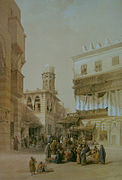

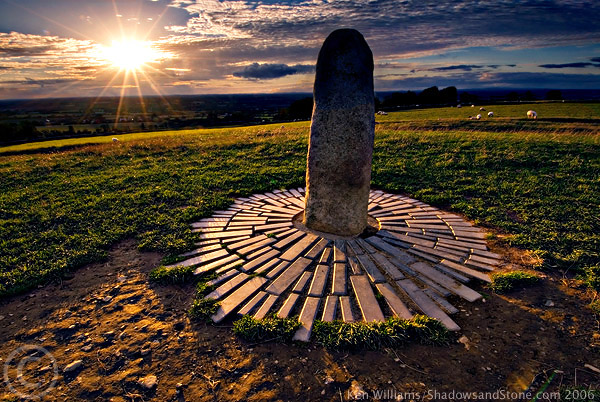


















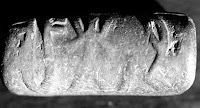

















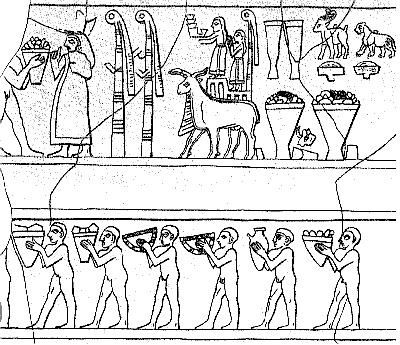 T-glyph may denote a fire altar or moulds like the two fire-altars or moulds shown on Warrka vase below two animals: antelope and tiger. kand ‘fire-altar’ (Santali)
T-glyph may denote a fire altar or moulds like the two fire-altars or moulds shown on Warrka vase below two animals: antelope and tiger. kand ‘fire-altar’ (Santali) 
 T symbol on an ox-hide ingot
T symbol on an ox-hide ingot 

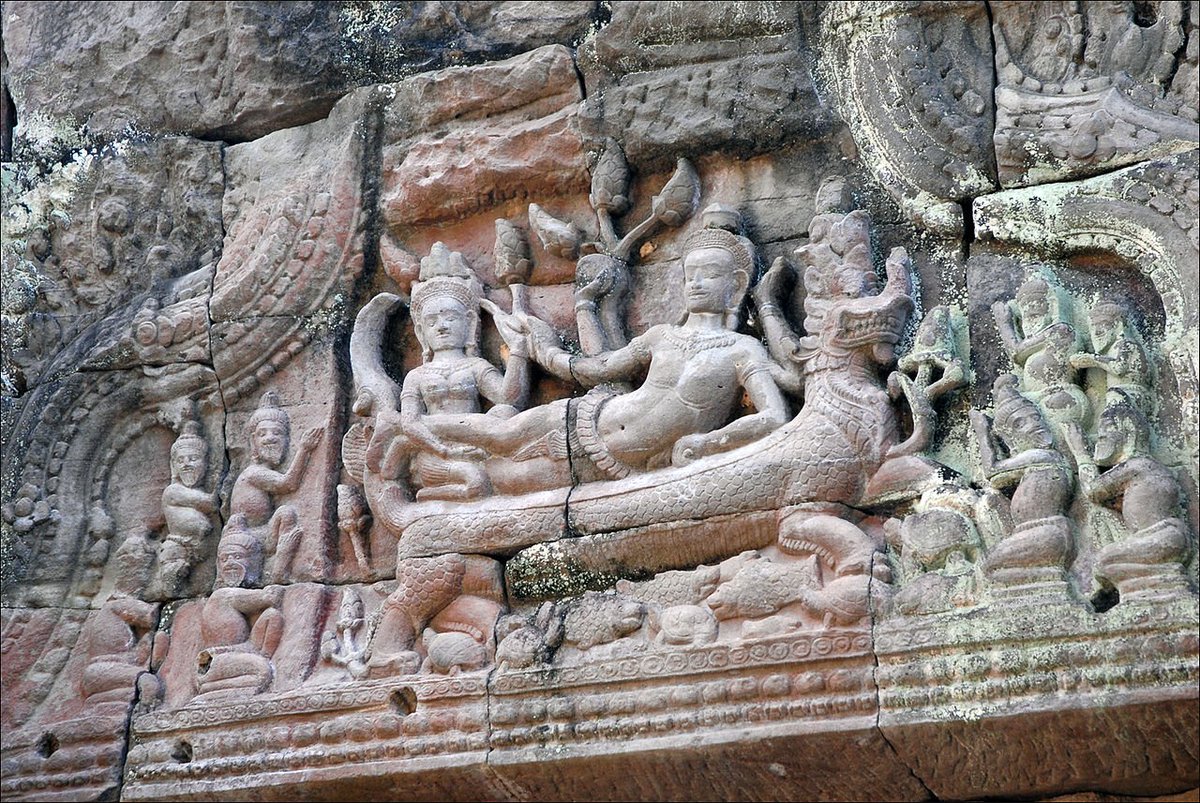
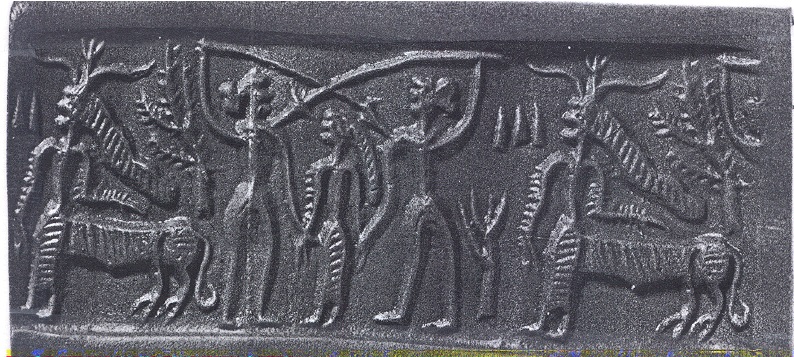



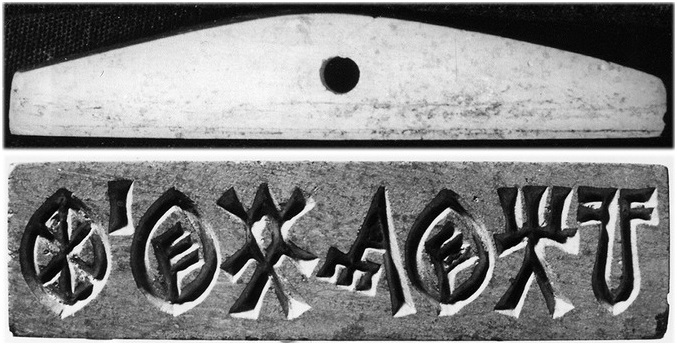



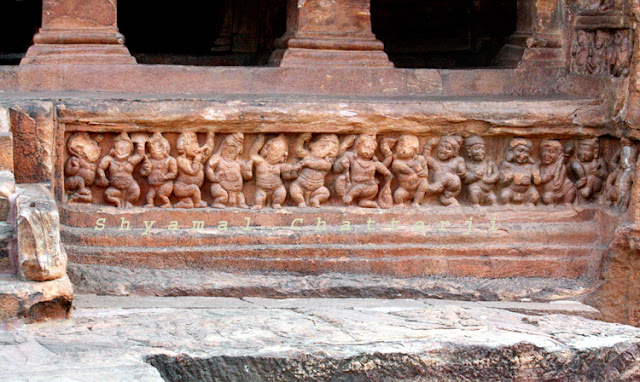






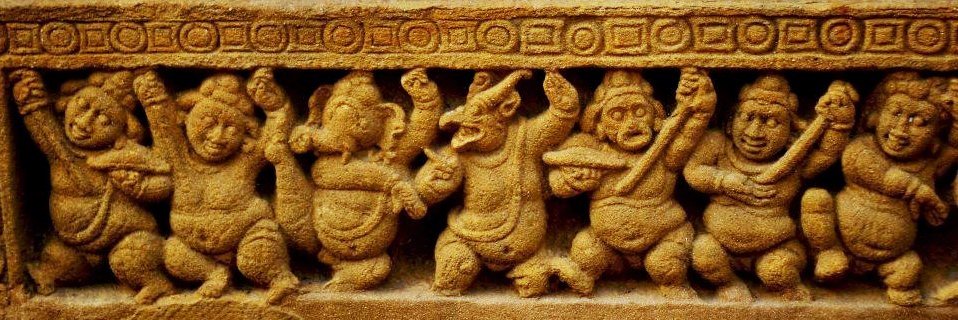

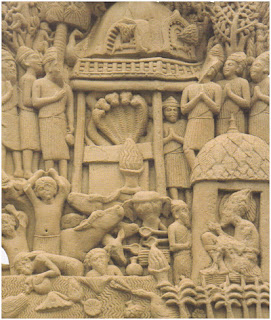

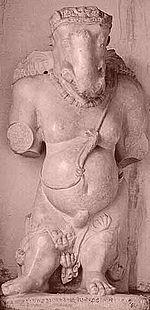
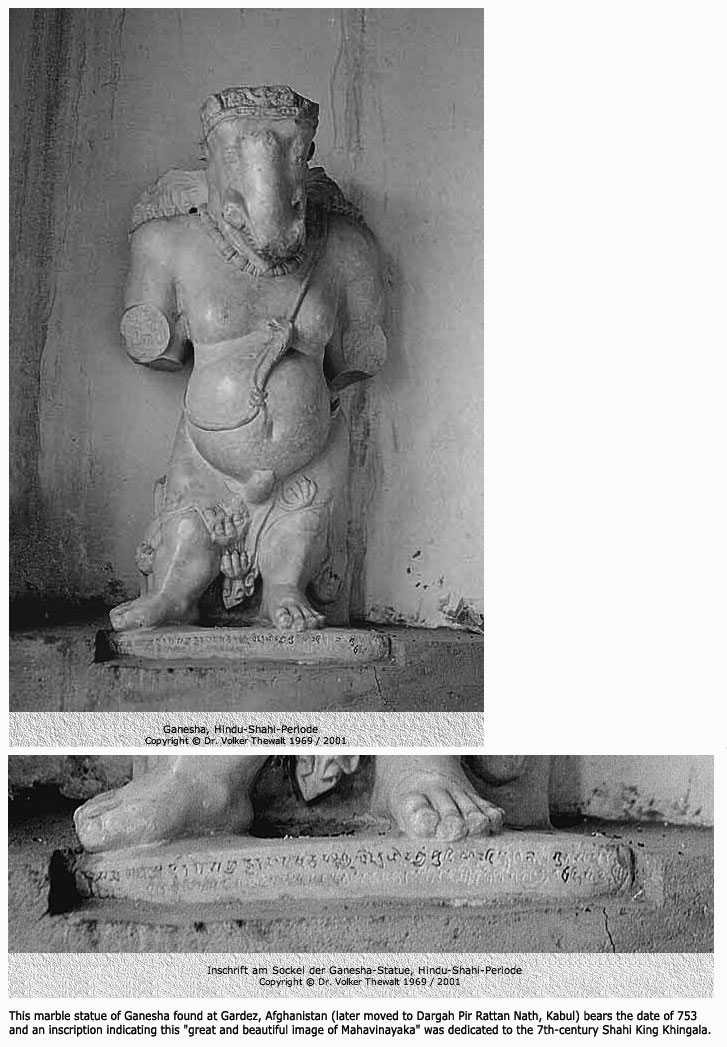









 Gaṇeśa.
Gaṇeśa. 

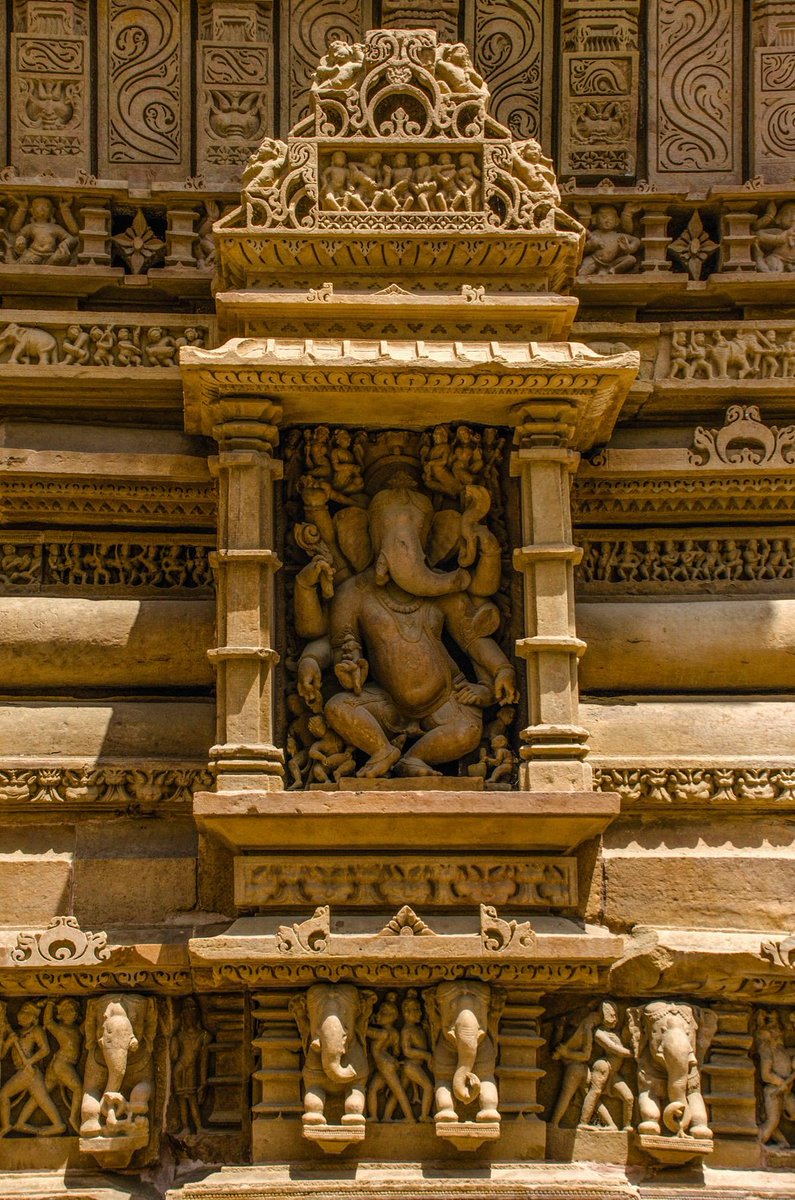



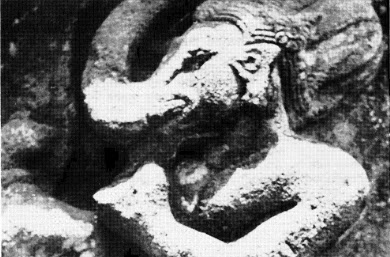 He also carries a rattle or a bone (broken tusk? to signify his role as a scribe.)
He also carries a rattle or a bone (broken tusk? to signify his role as a scribe.)
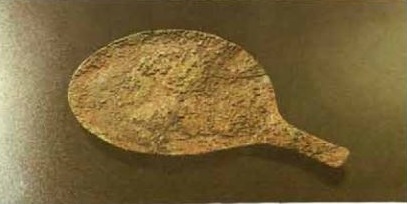
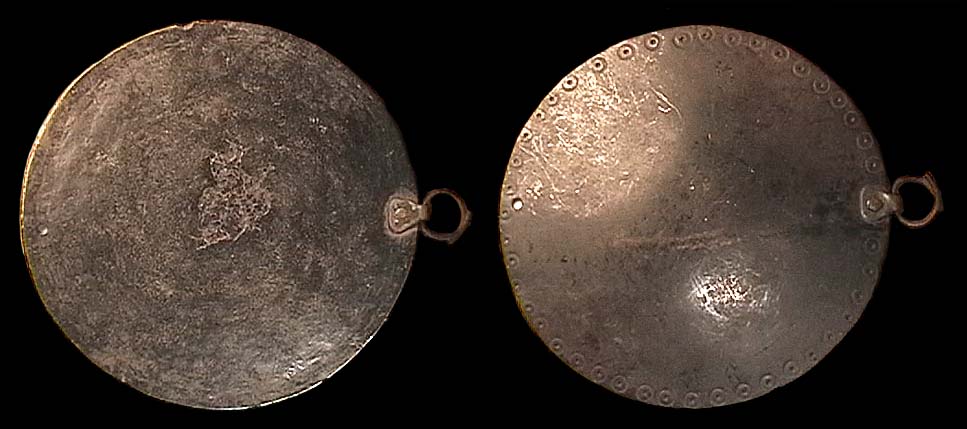
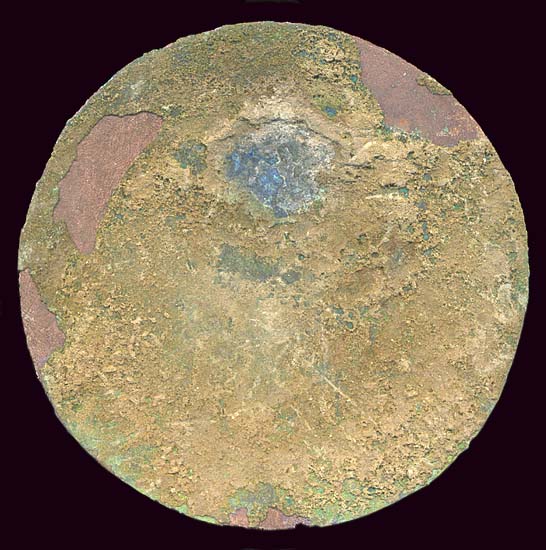
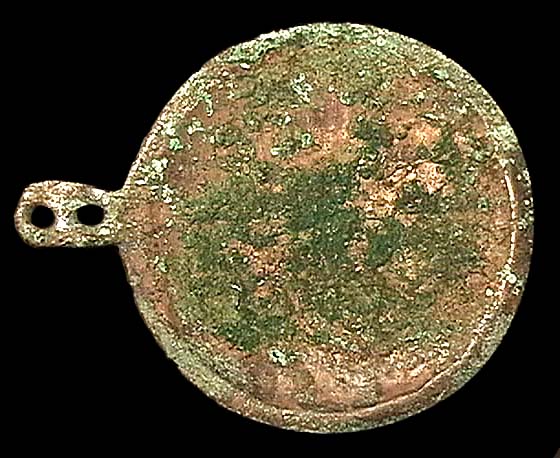
 British Museum. Bronze mirror. ca. 300 BCE.
British Museum. Bronze mirror. ca. 300 BCE.





































































 Parvati as Lalita carrying a bronze mirror, with her sons Ganesa and Skanda, Orissa. 11th cent. Now in British Museum. 1872.0701.54
Parvati as Lalita carrying a bronze mirror, with her sons Ganesa and Skanda, Orissa. 11th cent. Now in British Museum. 1872.0701.54



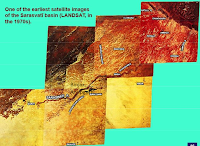
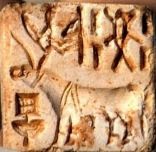


 Dubious 'Taxila cross'
Dubious 'Taxila cross'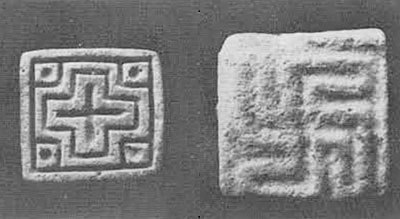





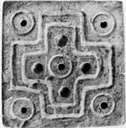
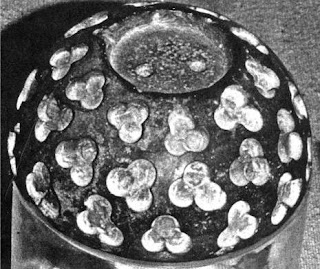
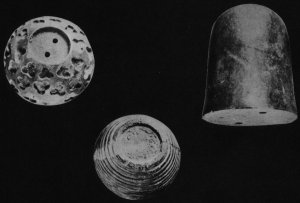




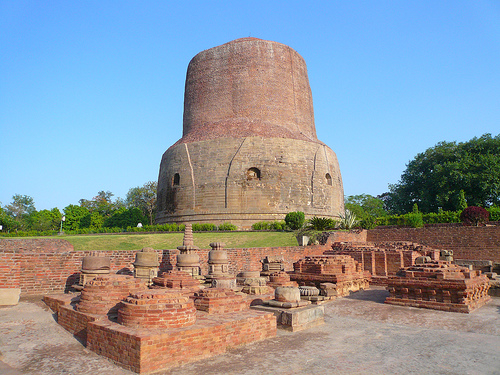





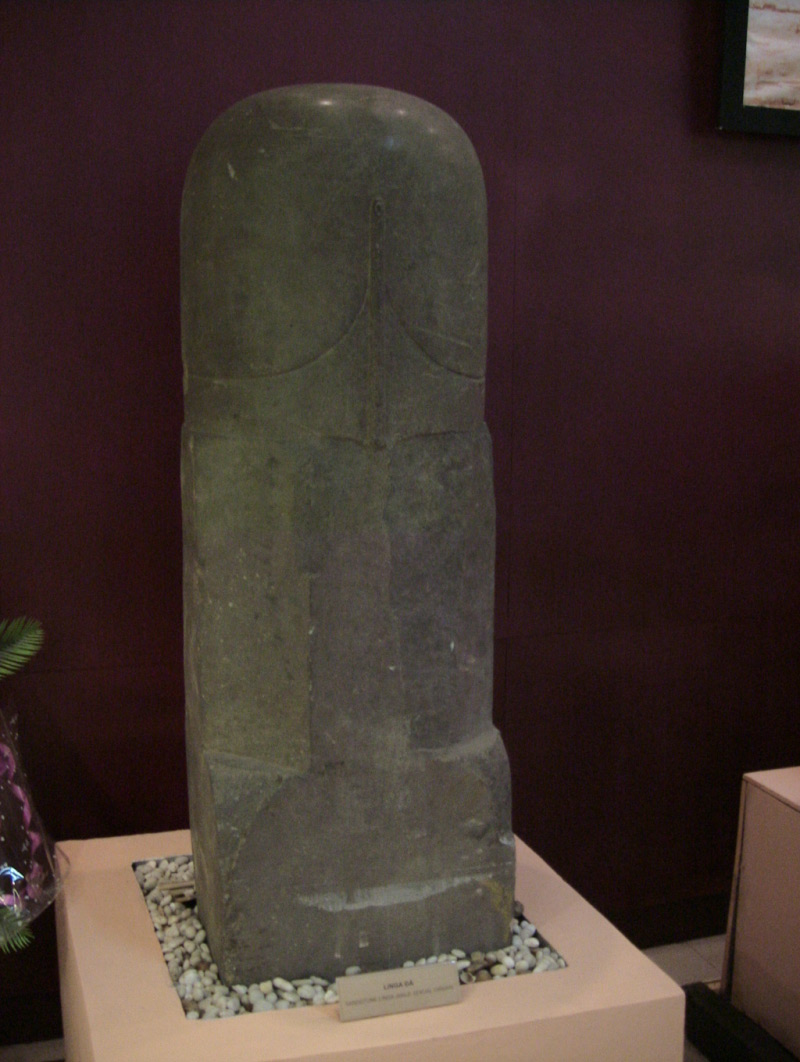 Sivalinga. Cat Tien. Now in National Museum, Vietnam.
Sivalinga. Cat Tien. Now in National Museum, Vietnam.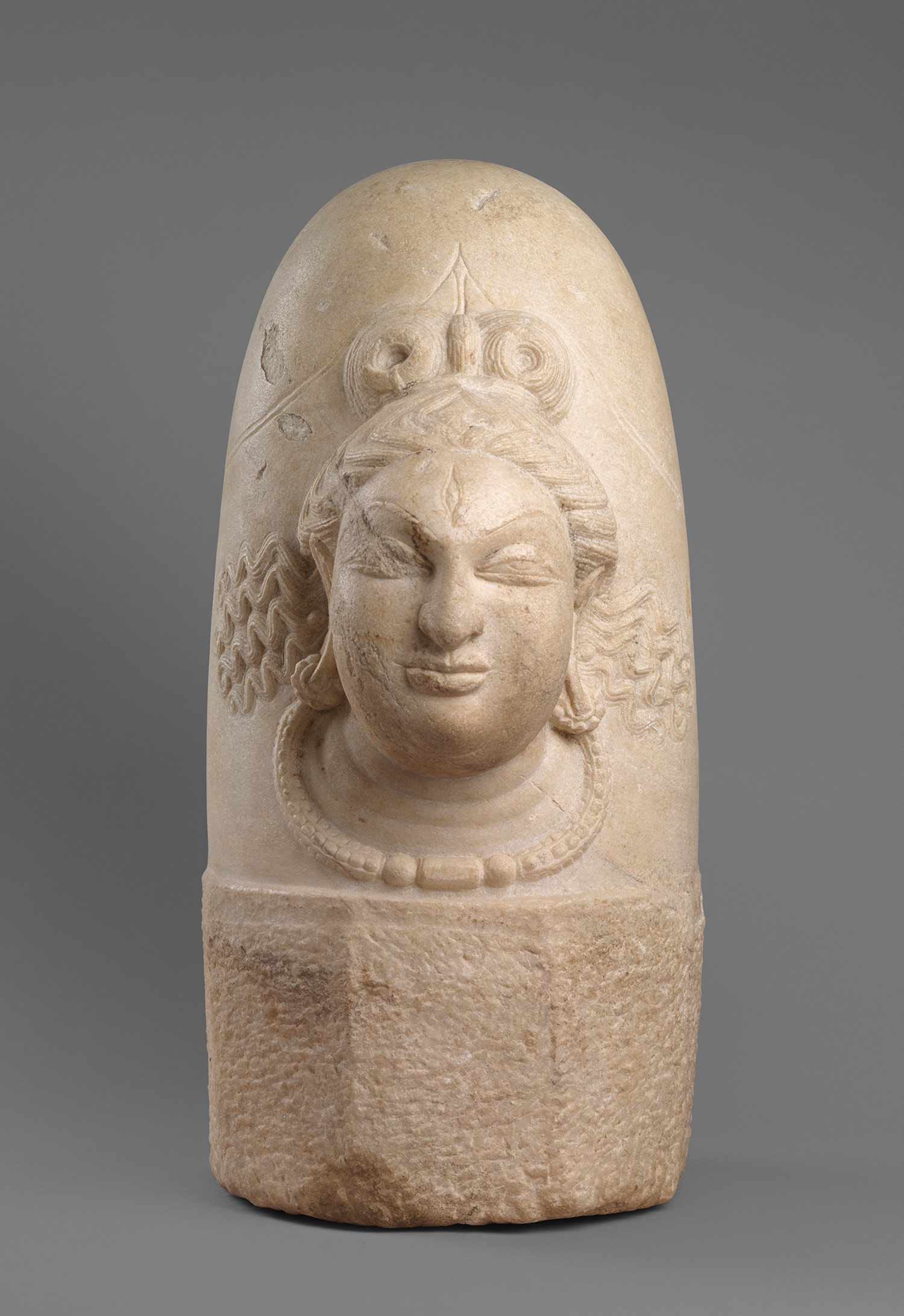
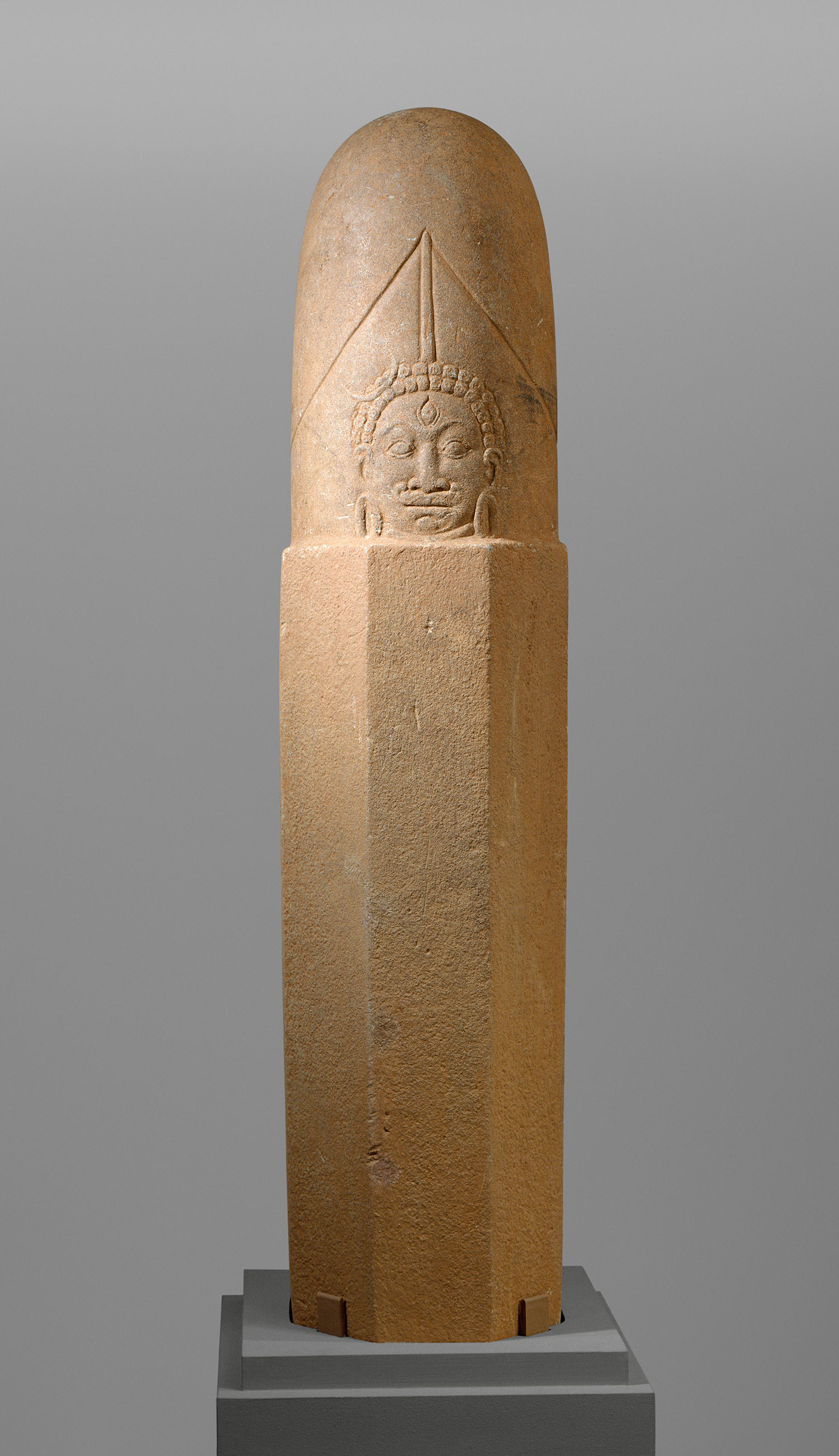 Si Thep sivalinga, Thailand.
Si Thep sivalinga, Thailand. Bali sivalinga
Bali sivalinga

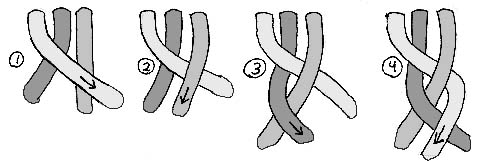







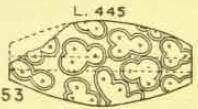

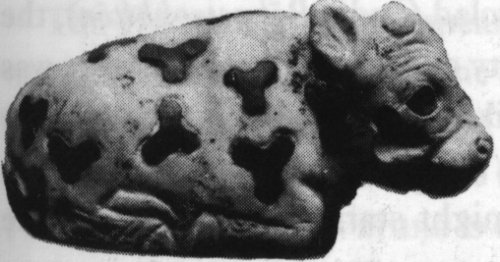























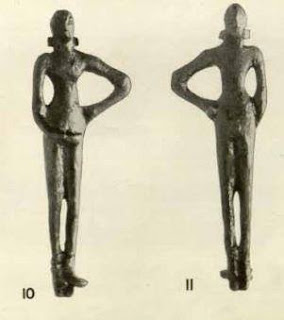



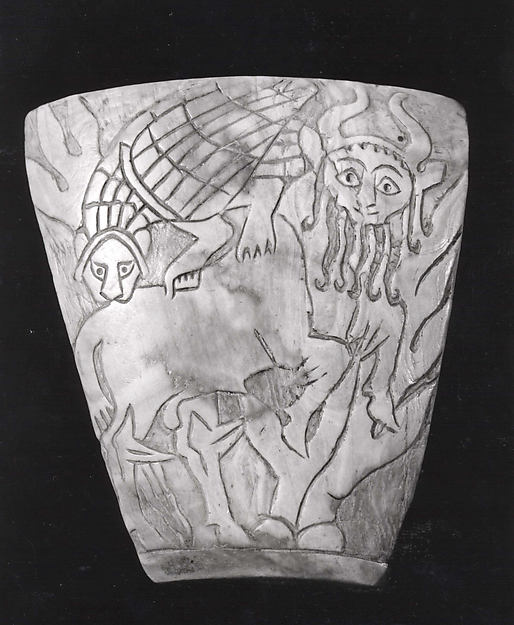

 Sphinx. A South Indian temple frescoe. Bull-man venerates Śivalinga. Offers a chess piece of horse.
Sphinx. A South Indian temple frescoe. Bull-man venerates Śivalinga. Offers a chess piece of horse. 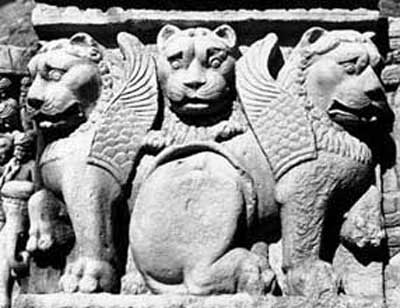

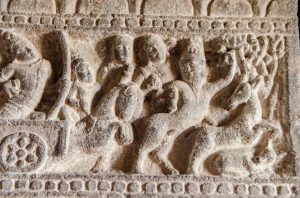
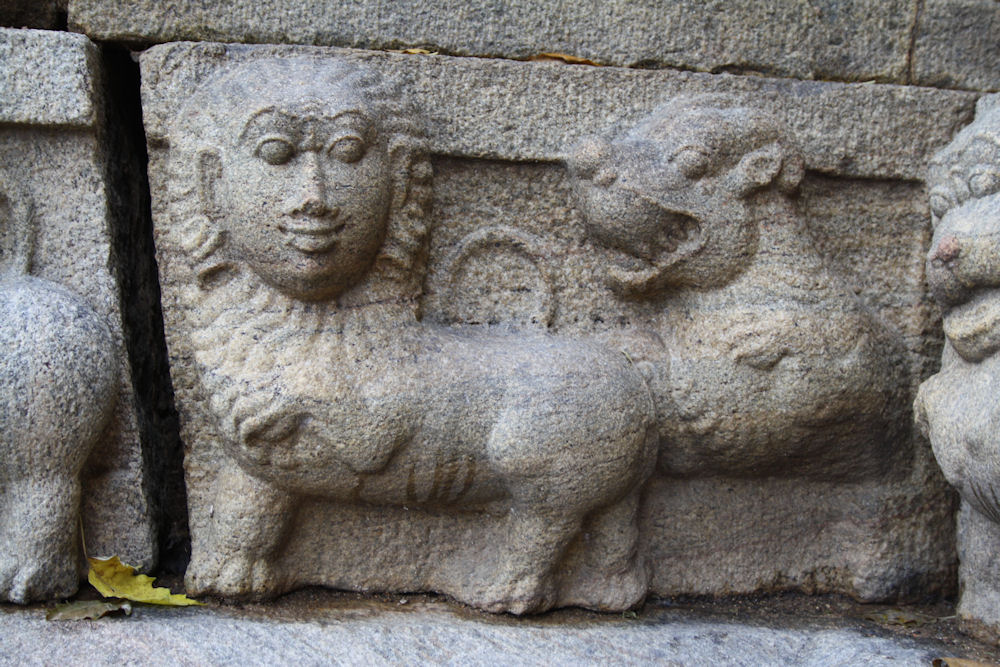
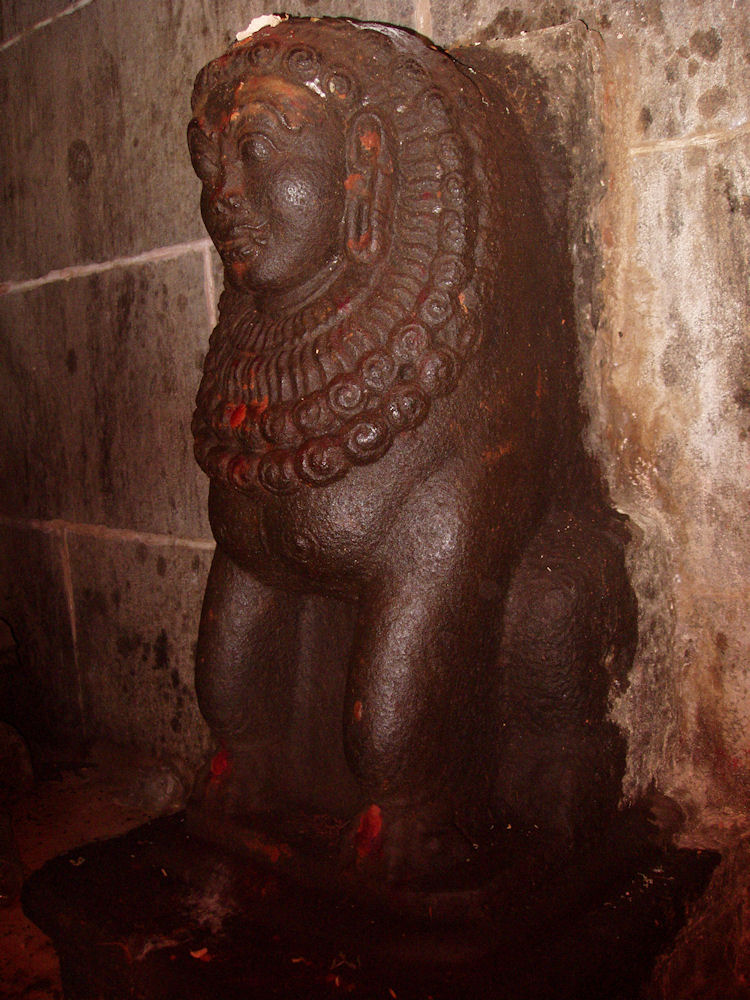 Spinx. Nataraja temple. Chidambaram.
Spinx. Nataraja temple. Chidambaram.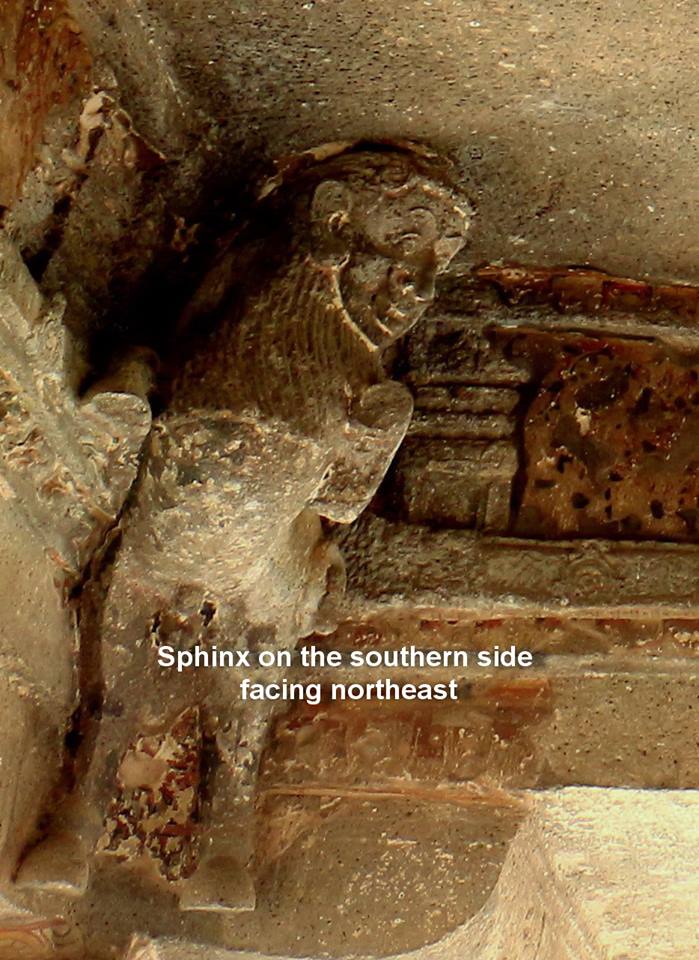
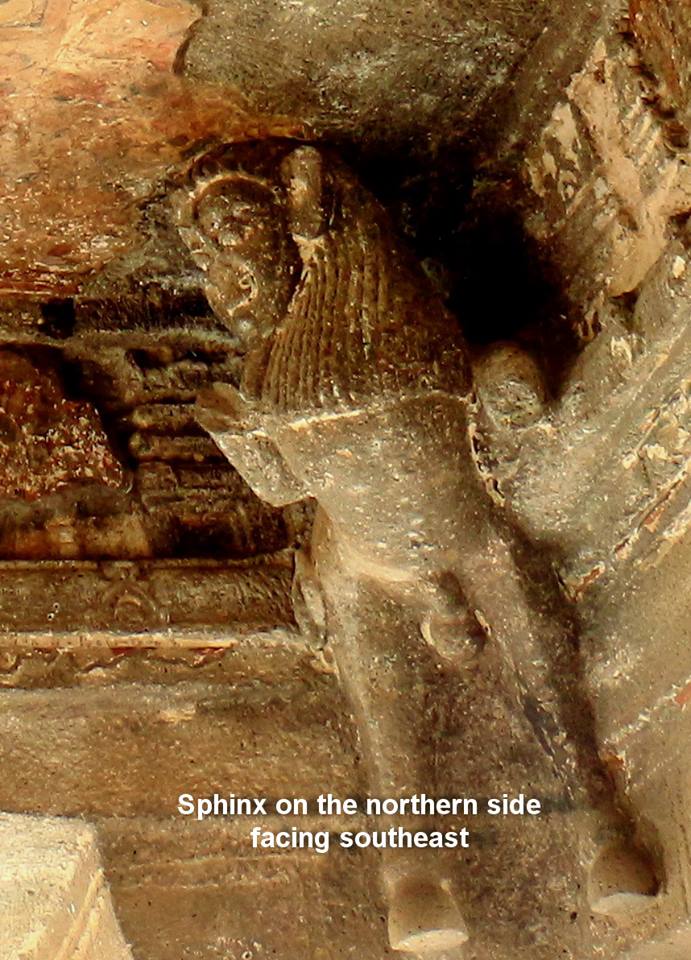 Sphinx on the southern side, facing northeast; sphnx on the northern side, facing southeast. Kailasha temple, Ellora.
Sphinx on the southern side, facing northeast; sphnx on the northern side, facing southeast. Kailasha temple, Ellora.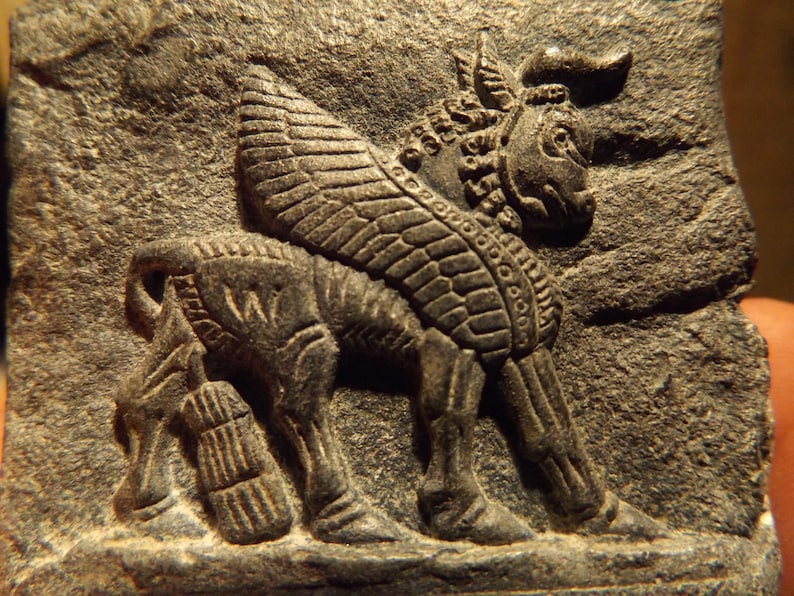
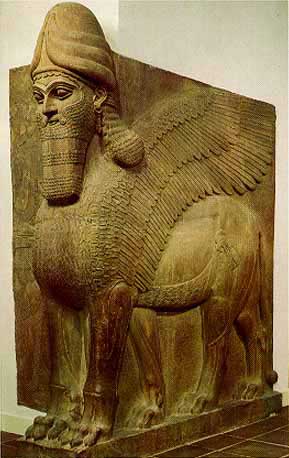








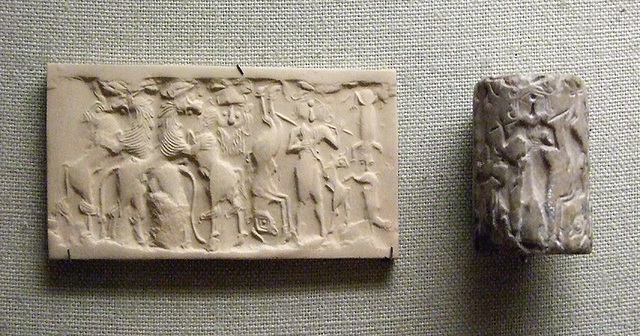














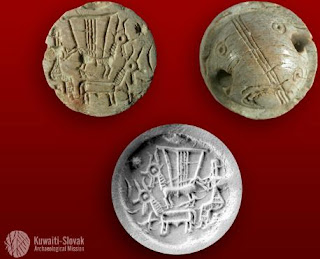
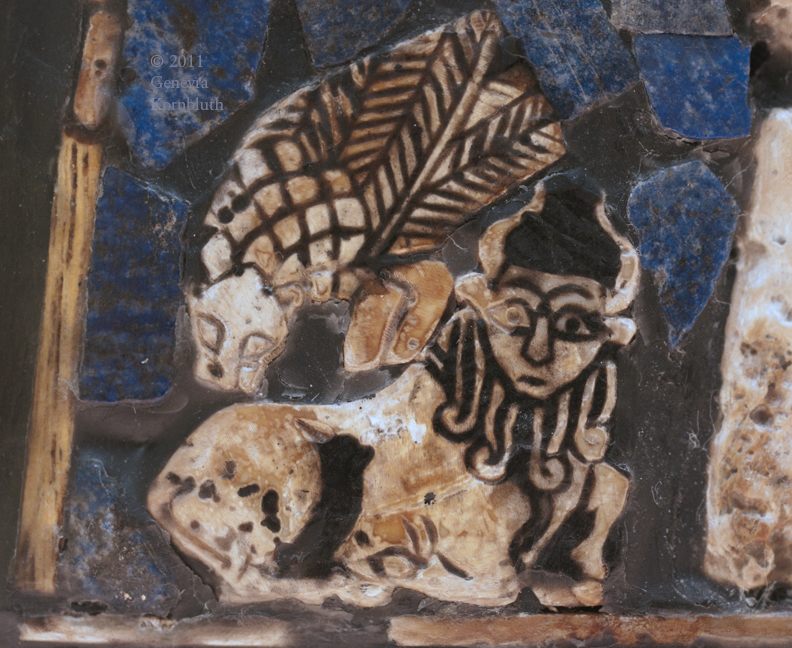


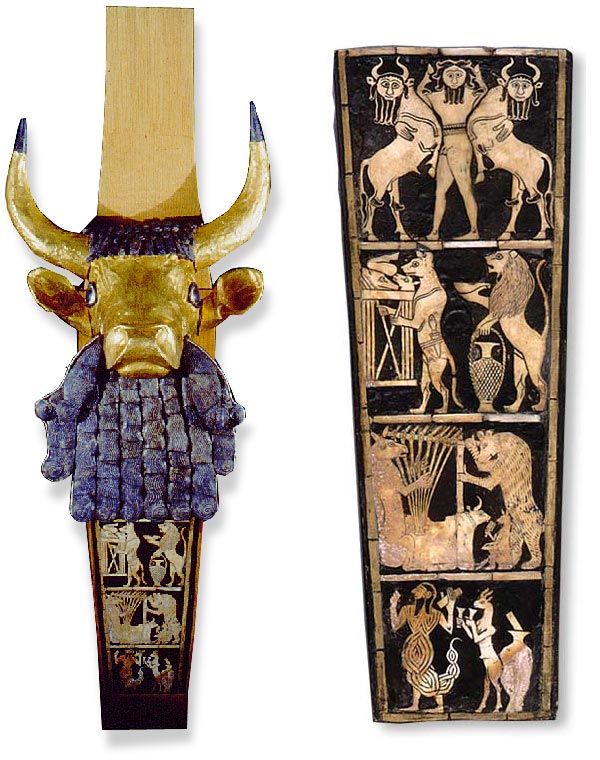
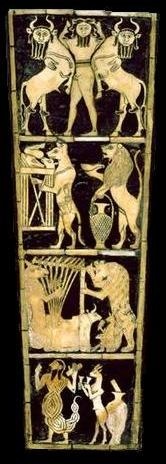 "Great Lyre" from Ur: Ht 33 cm
"Great Lyre" from Ur: Ht 33 cm


















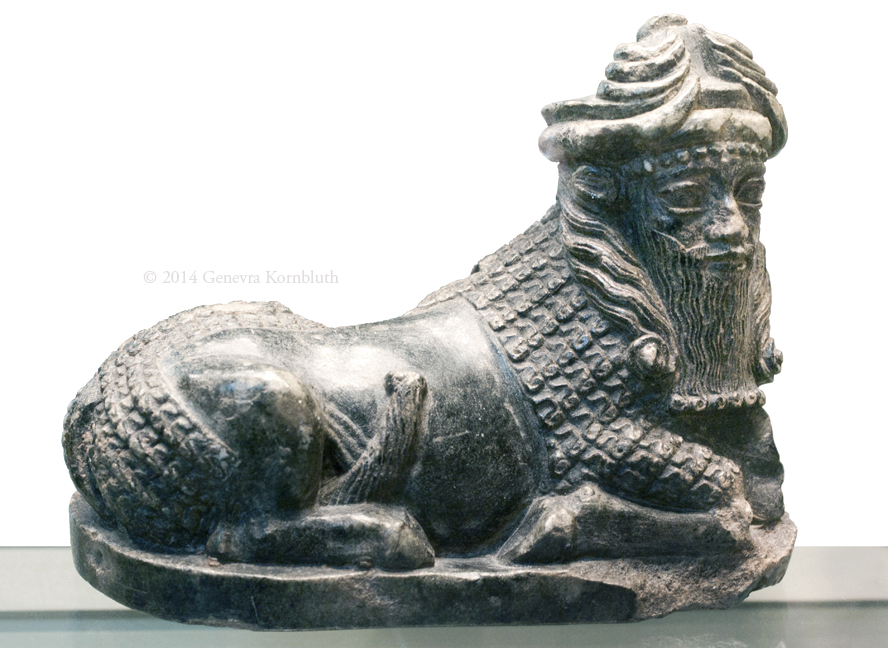
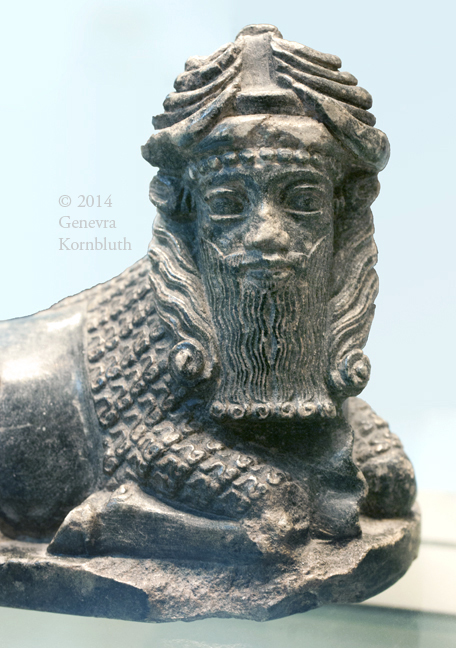

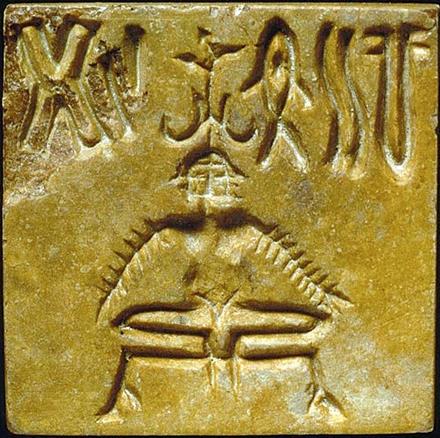
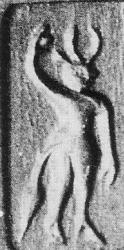



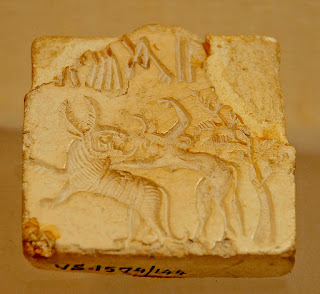

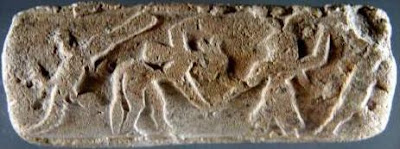


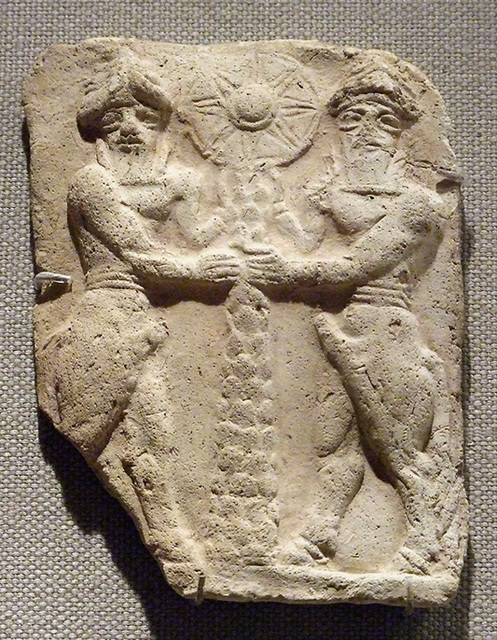

 A bull man fights a lion. Mesopotamia half 2 Second millennium 1500 BC Iraq
A bull man fights a lion. Mesopotamia half 2 Second millennium 1500 BC Iraq 


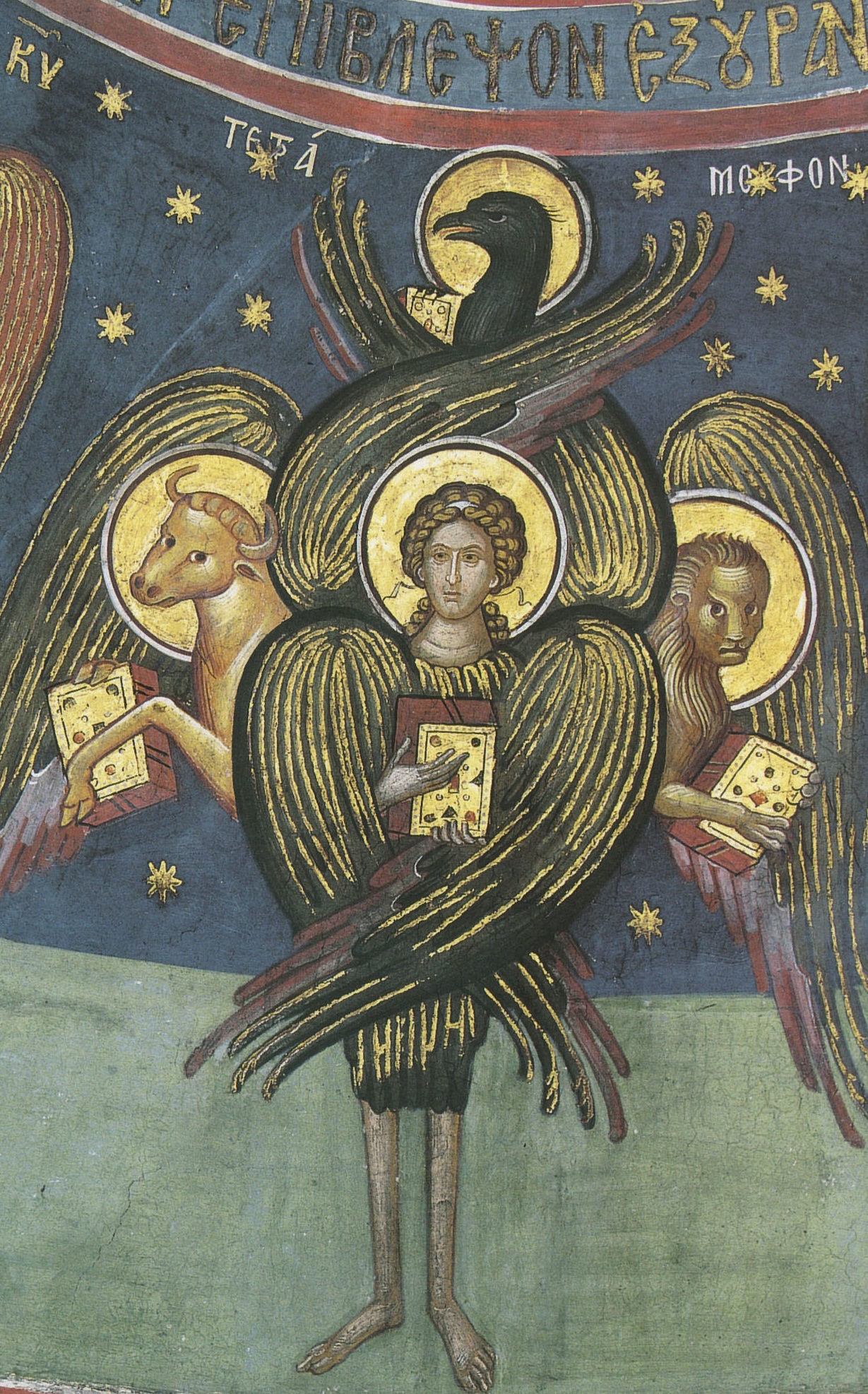 A
A


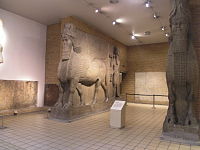





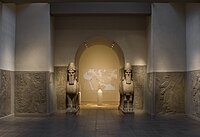






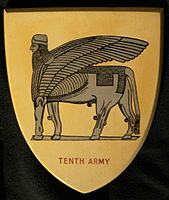

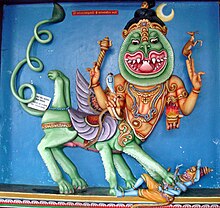
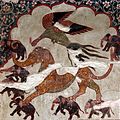


 Yali
Yali
 Yali
Yali Yali
Yali Yali
Yali Gandaberunda
Gandaberunda












 Brahma and his consort. Surasundari. Chitragupta Temple, Khajuraho.
Brahma and his consort. Surasundari. Chitragupta Temple, Khajuraho. 







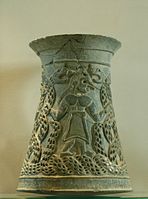

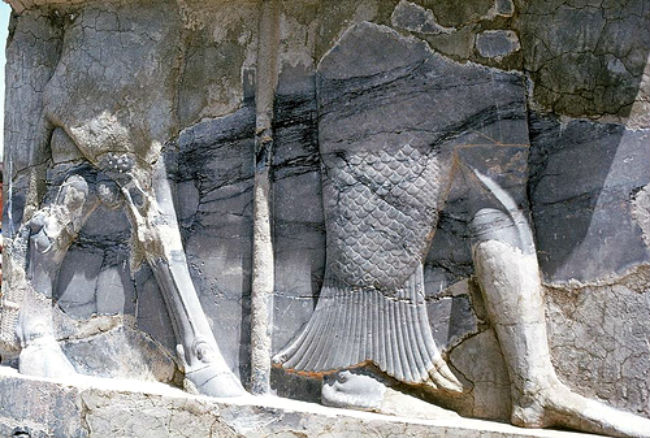
 Cylinder seal impressions of the Mesopotamian cow-human hybrid god Enkidu (aka Eabani).
Cylinder seal impressions of the Mesopotamian cow-human hybrid god Enkidu (aka Eabani).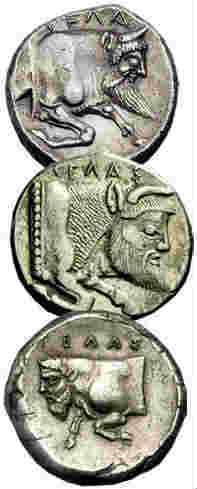 silver tetradrachms, such as those shown at right, were issued by the city of Gela, Sicily, during the fifth century BCE.
silver tetradrachms, such as those shown at right, were issued by the city of Gela, Sicily, during the fifth century BCE.

 Online publication date:
Online publication date: 


Yesterday